






streaming audience measurement system, across MBC Group, Saudi Sports Company (SSC), and Al Arabiya TV channels. Developed by the Media Rating Company (MRC), KSA TAM delivers advertisers in-depth insights into TV consumption and campaign empower brands to make informed decisions.


Learn more about MMS adopting the KSA TAM audience measurement solution in the upcoming pages
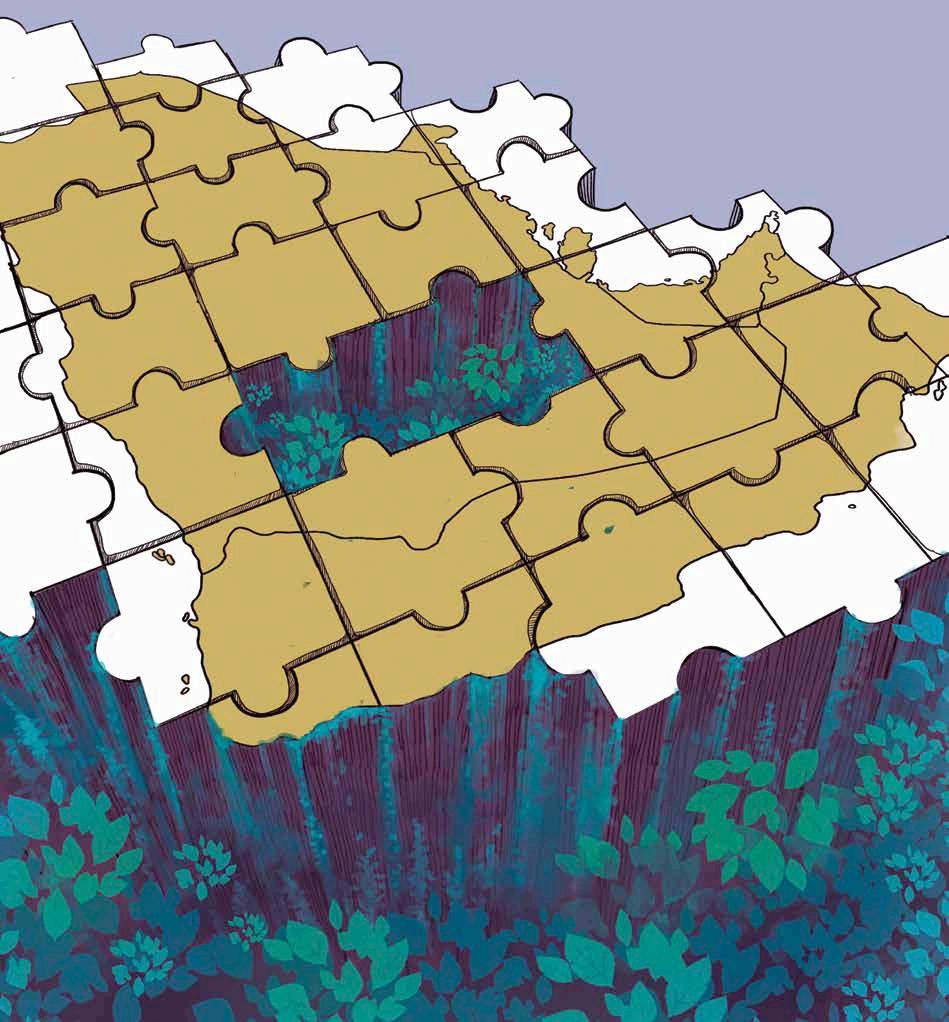
Highlight s
Business Briefing on Macro Trends and Influencers with The Economist
New Research on The Brands of Tomorrow in Saudi Arabia with McCann Worldgroup
The Opportunities and Challenges of the Saudi Talent Market with Korn Ferry
realm.



Campaign Middle East speaks to several agency leaders who share opinions on the state of ethical marketing, sustainability initiatives and ‘do-good’ CSR activities.

Media Group
Head Office: 34th Floor, Media One Tower, Dubai Media City, Dubai, UAE. Tel: +971 4 427 3000, Fax: +971 4 428 2266. Email: motivate@motivate.ae Dubai Media City: SD 2-94, 2nd Floor, Building 2, Dubai, UAE. Tel: +971 4 390 3550, Fax: +971 4 390 4845 Abu Dhabi: Motivate Advertising, Marketing & Publishing, PO Box 43072, Abu Dhabi, UAE. Tel: +971 2 677 2005, Fax: +97126573401, Email: motivate-adh@motivate.ae
Saudi Arabia: Regus Offices No. 455 - 456, 4th Floor, Hamad Tower, King Fahad Road, Al Olaya, Riyadh, KSA. Tel: +966 11 834 3595 / +966 11 834 3596. Email: motivate@motivate.ae
London: Motivate Publishing Ltd, Acre House, 11/15 William Road, London NW1 3ER. Email: motivateuk@motivate.ae www.motivatemedia.com
EDITORIAL: Motivate Media Group Editor-in-Chief Obaid Humaid Al Tayer | Managing Partner and Group Editor Ian Fairservice Campaign Middle East Editor Anup Oommen | Reporter Ishwari Khatu | Junior Reporter Shantelle Nagarajan
DESIGN: Senior Designer Thokchom Remy
ADVERTISING ENQUIRIES: Chief Commercial Officer Anthony Milne | Publisher Nadeem Ahmed Quraishi (nadeem@motivate.ae) Sales Manager Tarun Gangwani (tarun.gangwani@motivate.ae)
PRODUCTION: General Manager S. Sunil Kumar | Production Manager Binu Purandaran | Production Supervisor Venita Pinto
HAYMARKET MEDIA GROUP: Chairman Kevin Costello | Managing Director Jane Macken
(and other
of
a trademark of Haymarket and is used under licence. The views and opinions expressed within this magazine are not necessarily those of Haymarket Magazines Limited or those of its contributors.





Has the time come for sustainability, purpose-driven marketing and ethical business practices to become nonnegotiable within the Middle East’s brand and marketing industry?
Despite mandated ESG requirements, the transition to a sustainable world doesn’t seem to be going according to plan. Many companies that shared boundless excitement a few years ago are reportedly reassessing, adjusting and – in some cases –retracting their sustainability commitments, according to a Bain & Company report.
Leaders across brands and agencies have spoken to Campaign Middle East about how annual conversations on sustainability and ethical marketing are getting pigeon-holed as just that – mere conversations.
Has the time come to draw a line in the sand, assess where we stand in terms of our sustainability objectives and ethical goals, and re-evaluate a year from now to see how far the needle has moved?
On one hand, consumer demand has soared to an all-time high for brands to demonstrate trust and transparency, and to highlight how they’re adding value to the world, solving real problems and becoming socially and environmentally conscious.
On the other hand, marketers and agency leaders with decades of experience are raising some interesting questions: Are we being honest about the use of AI in campaigns and marketing initiatives? Are we being honest about environmental claims? Do we need to address a say-do gap in our ‘green’ campaigns?
Leo Burnett Middle East’s Muhammad Ali hits the nail on the head, saying, “Brands can’t hide behind secrecy or vague claims anymore. You either tell the truth or risk the public telling it for you.”
Other leaders allude to how ethics in marketing is becoming the ‘latest tactic’ targeting idealist consumers. The danger of diving into this rabbit hole is that marketers with a short-term view of highlighting ‘selective’ metrics around ethical marketing and sustainability could put the long-term sustainable growth of a brand – as well as perceptions of the entire industry – at risk.
Another hurdle that global brands are facing is navigating the ethical expectations in different regions. What’s considered ethical in one part of the world might be seen differently elsewhere.
With climate change, human rights and social justice issues expected to remain top of mind in 2025, the onus now lies on brands to be proactively accountable to audiences paying very close attention to what brands claim to be.

“MENA is an emerging market primed for innovation, and the shift to attention metrics presents [the industry with] a golden opportunity. ”
Two young entrepreneurs, Najib Mikati, a senior at the American School of Dubai, and Naji Faqihinejad, a freshman at The George Washington University, are due to launch an app called Smartpocket in November, which will provide retailers with an analytics dashboard, delivering real-time data and actionable insights into student purchasing trends.
Designed as a savings companion, Smartpocket aims to offer students aged 12 to 25 a powerful tool to make the most of their spending.
“We set out to build something that truly benefits students,” said Mikati.
The app will offer a dashboard that allows retailers to better understand the preferences and habits of their younger customers, enabling more targeted marketing efforts.
“Through Smartpocket, retailers gain direct access to the youth demographic, helping them engage more,” Faqihinejad said.
A study conducted by dentsu MENA in partnership with Lumen Research, Teads and Snapchat, aims to bridge the gap between traditional measurement metrics and actual human behaviour, in an effort to represent a step towards more tailored, effective planning in the region.
Measuring and evaluating attention across five social, video and contextual platforms in Arabic, the report, titled Unlocking the Currency of Attention KSA, took into account the feedback of advertisers across diverse verticals including FMCG, e-commerce, automotive and financial services.
Ramzy Abouchacra, Media Practice President, dentsu MENA, said, “MENA is an emerging market primed for innovation, and the shift to attention metrics presents a golden opportunity.
“Instead of just counting how many times your ad was served, imagine measuring how many actually focused on it and for how long, using attention as a currency.”
Abouchacra added, “This is the next frontier, and it’s not just a change; it’s a revolution in how we define success for both our media brands and the clients we serve.”
The study included 750 respondents, all aged 18 and over,
non-rejectors of their assigned media platform, and based in Saudi Arabia. Respondents were not made aware of the purpose of the research beyond the requirement to opt in for advertising and the estimated length of their participation.
“The data from this study – the largest cross-platform Arabic research study of its kind – has revealed some unique media consumption habits and cultural nuances in the Arab world that affect attention patterns,” said Mike Follett, CEO of Lumen Research.
Using Lumen software on their mobiles, participants turned their phones into eye-tracking devices.
Analysts and consultants processed the eye-tracking attention and survey data to produce this insights report.
Key findings from the report included: viewable does not equal viewed; longer viewable times enhance ad viewing; attention levels are notably higher before a skippable option is available; and creativity and effective brand cues are essential to achieving a high recall rate.
Saadeddine Nahas, Head of Product & Partnerships, dentsu MENA, said, “This research will allow us to start planning against local rather than global benchmarks to deliver on what truly matters: capturing and holding attention.
Nahas added, “By prioritising attention-based metrics and committing to quality over quantity, we can transform how brands connect with audiences and open new pathways for growth for our clients.”


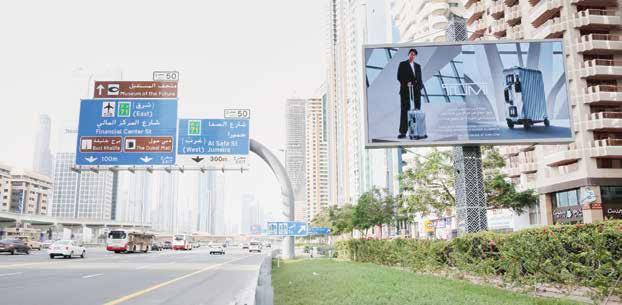
UAE-based out-of-home (OOH) advertising company BackLite Media has announced its partnership with VIOOH, a global digital out-of-home (DOOH) supply-side platform.
The partnership marks VIOOH’s first entry into the Middle East’s DOOH market and represents a significant milestone for both companies as they expand their regional influence.
VIOOH’s platform facilitates programmatic advertising by connecting buyers and sellers in
the DOOH space. With this partnership, global advertisers will now gain access to BackLite Media’s inventory across Dubai and Abu Dhabi. This provides opportunities for advertisers to reach both residents and the UAE’s growing number of tourists.
The partnership allows advertisers to plan and purchase BackLite Media’s DOOH inventory programmatically, which includes more than 300 digital screens in key locations across the UAE.


The gaming arm of digital provider Stc has launched a new campaign that challenges long-standing gaming stereotypes. The campaign aims to redefine who gamers are and to prove that anybody can be a gamer regardless of their age, gender or profession. Traditionally, gamers have been depicted as young males in dimly lit rooms with elaborate setups. This campaign aims to show how the gaming world and its audience has evolved today. Gamers range from a professional on a lunch break to a mother playing on her phone. From the way modern gamers interact with their consoles to their individual styles, the film explores gaming beyond the superficial.
Google has launched its flagship Accelerate programme in Saudi Arabia in an effort to bring the latest advancements in AI-powered marketing to the Kingdom’s thriving business landscape.
Accelerate Saudi, held at the Muvi Theatre in Boulevard Riyadh, unveiled the latest study conducted by BCG and Google, with a focus on AI-driven marketing maturity.
The study indicates that businesses using AI and generative AI to power data-driven marketing strategies saw 1.9 times more profitable growth. The report also revealed that these businesses are 39 per cent more productive since incorporating AI into business practices compared with two years ago.
BackLite’s network spans hightraffic areas such as Sheikh Zayed Road in Dubai, as well as indoor and outdoor spaces in major malls and destinations across Dubai and Abu Dhabi, and this partnership provides brands with new ways to connect with consumers.
By leveraging programmatic buying, advertisers can benefit from greater flexibility, more precise targeting and improved efficiency, helping them achieve a higher engagement rate with audiences.
“Investing in advanced technologies, training integrated teams and adopting a dataoriented culture are crucial steps for not just surviving but thriving in the digital age,” said Charbel Sarkis, KSA Country Director at Google.
The programme aims to equip Saudi businesses with the insights and tools necessary to navigate the evolving marketing landscape and harness the power of AI for sustainable growth and success.


This campaign is the product of a collaboration with Hasbro’s Monopoly and aims to highlight how families can bond over playful negotiations, particularly during the back-to-school season, when routines and responsibilities are top of mind for both parents and children. As part of the campaign, Puck released a limited-edition packaging featuring the iconic Mr. Monopoly. Each pack featured a QR code offering shoppers a chance to win prizes, including vouchers, exclusive Monopoly: Puck Edition board games, and the grand prize – free annual school fees. The campaign was rolled out across multiple platforms, including social media, e-commerce, and in-store activations.

Viewer behaviour across the UAE, Saudi Arabia and Qatar is witnessing a significant shift as highly engaged audiences are now watching YouTube on Connected TV (CTV), according to data that the platform revealed during its flagship advertiser event called YouTube Brandcast.
Viewership of YouTube on connected TV grew in May 2024, reaching more than 2.5 million people aged over 18 in the UAE, more than 12 million people in Saudi Arabia, and more than 600,000 people in Qatar. This represents a substantial portion of YouTube’s reach in these countries,
where YouTube reaches 20 million over the age of 18 in the UAE; 7.5 million people over the age of 18 in the UAE; and more than 1.7 million people aged between 25 and 54 in Qatar.
Sharing his insights in an exclusive conversation with Campaign Middle East, Tarek Amin, Director of YouTube MENA and Regional Director of EMEA Emerging Markets, said, “For the longest time, TV was the undisputed king of video entertainment. Then the mobile streaming revolution came, and with it, the ability for anyone, anywhere to have a video camera the size of their pockets at hand,


Narrated by ‘Rex Torque’, a deadpan persona designed to challenge perceptions in a market where performance and reliability reign supreme, this campaign was launched to announce the brand’s 2025 line-up of trucks. The witty take aims to offer a fresh approach to how trucks are perceived in the region. It also aims to redefine the brand’s positioning in the region, and launch a unified brand platform that ‘no one knows trucks’ better than RAM does. The campaign kicks off with a 45-second hero film, which will be shown across social media platforms and in cinemas, supported by shorter 15-second spots designed for quicker and higher engagement rates.
democratising content creation. Now, we’re on the cusp of another major transformation, one that sees user-generated content cast to the largest screen in homes everywhere – and YouTube is at the epicentre of this shift.”
“The shift towards connected TV viewership and the deep engagement we see across the region underscores the valuable opportunities YouTube offers brands to connect with their audiences in a meaningful way,” Amin added.
During the Brandcast event, YouTube also launched the beta version of partnership ads, opening new opportunities for brands to connect with their audiences in an authentic way.
With partnership ads, brands can connect creator content to their Google Ads on YouTube, unlocking opportunities for better results.
For example, it is now possible to create audience data segments based on the views on the creator’s video.
Advertisers can also unlock new ad formats, such as a co-branded format on DemandGen campaigns where a brand’s logo appears alongside the creator’s channel logo.
Another key takeaway from the YouTube Brandcast event was how YouTube creators are producing exceptionally crafted content, and how viewers no longer distinguish between creator-led or studio-backed content.
Amin said, “Technologies such as 4K cameras and special effects software are becoming increasingly accessible and allowing creators to produce at new levels of sophistication. Creators are today’s studios, media moguls and entrepreneurs, creating the type of content that consumers not only want but also expect to watch. They represent the new Hollywood.”
Combining this with CTV only creates better avenues for advertisers to connect with their target demographics across multiple formats, from Shorts to living room.
“The lines between scripted and non-scripted content are blurring, the same way that the lines between screens and formats are converging,” Amin concluded.


This campaign intended to celebrate the unsung heroes of street cricket across the region, connect with hyper-local communities, and highlight the passion of those who play the game of cricket outside the spotlight. Puma wanted to shine a light on street cricket by making it accessible to everyone, celebrating the passion of players, regardless of location. The initiative includes two docuseries that explore the lives of players from local teams. The brand also created custom-designed jerseys inspired by each team’s local neighborhood and marked Dubai’s street cricket grounds on Google Street View to offer them permanent recognition and a claim to a home turf that’s away from home.
Al Masaood’s Marwa Kaabour shares how homegrown brands in the UAE capital have taken sustainability to heart.
In Abu Dhabi, sustainability is more than just a corporate imperative – it is part of the very essence of the Capital. Its dedication to green practices is out in the open for everyone to see – be it through the sprawling mangroves or innovative clean energy projects popping up in every corner, the city is a living example of what it means to truly value a sustainable future.
In 2023, Abu Dhabi earned the title of Arab Environment Capital, a huge nod to ongoing efforts in sustainability and environmental protection. This recognition echoes the vision laid down by the late Sheikh Zayed Al Nahyan, whose pioneering work in environmental preservation continues to guide and inspire the city’s sustainability journey. From sprawling green projects to innovative initiatives, his legacy lives on, pushing us all to think bigger and act greener every day.
This legacy has wholeheartedly been adopted by Abu Dhabi’s homegrown brands. Here are some of the city’s biggest brands who have taken on sustainability to heart.
AL MASAOOD: Abu Dhabi’s longstanding family businesses have also put sustainability at the forefront. Al Masaood recently signed the ‘Climate-Responsible Companies Pledge’ by the UAE Ministry of Climate Change and Environment, joining forces with other environmentally conscious private sector companies in the UAE to support the Paris Agreement’s goals and limit global warming.
Al Masaood also launched a Sustainability report highlighting its sustainable initiatives including the innovative clean energy-powered SHAMS+ technology and various partnerships with global brands – aimed at bringing environmentally friendly solutions to the UAE.
ETIHAD AIRWAYS: Abu Dhabi’s flagship carrier, and Environmental Airline of the Year for the third year running, is flying high with its commitment to sustainability – no pun intended. Etihad has been proactive in reducing its carbon emissions using sustainable aviation fuel (SAF) and implementing energy-efficient operations across its fleet.
The airline’s Sustainability Report 2021-2022 demonstrates the potential advancements to be made in sustainable aviation by a wide range of initiatives, coordinated to achieve a 20 per cent reduction in emissions intensity in its passenger fleet by 2025, cut 2019 net emissions by 50 per cent by 2035, and reach net-zero emissions by 2050.
MUBADALA: Leading energy company with assets in 11 countries, Mubadala has taken impressive steps towards sustainability, particularly through its focus on natural gas as a cleaner alternative to coal. Mubadala has also established an Emissions Management Committee to ensure rigorous oversight and continued progress towards its low-carbon goals.
Beyond operational strategies, Mubadala Energy is heavily involved in community and environmental initiatives ranging from mangrove planting to supporting educational projects that align with the United Nations Sustainable Development Goals. In 2022 alone, its community projects positively affected more than 120,000 people.
MASDAR CITY: Masdar City aims to revolutionise green urban development. Aiming to be a zero-carbon development that runs entirely on renewable energy, its approach includes buildings that meet the highest environmental standards.
Each building, street, and public area is designed to enhance thermal comfort, boost

energy and water efficiency, minimise waste, and cut down on carbon emissions.
ETHARA: The Yas Marina Circuit isn’t just a venue for high-speed races; it’s racing towards sustainability too.
During the Grand Prix, the circuit introduced measures like staff uniforms made from recycled plastics, paperless ticketing, a plastic-free environment in areas like the Media Centre and Pit Lane, and the launch of an innovative water recycling system, ‘Eshara’, which produces high-quality drinking water from the air. These efforts line up perfectly with goals set both by the Abu Dhabi Government and the Formula 1’s aim to host fully sustainable events by 2025.
FIRST ABU DHABI BANK: FAB is actively working towards achieving net zero in its own operations while also reducing carbon intensity in high-emitting sectors. Last year, it became the first bank in the MENA region to set financed emissions reduction targets, scoping its portfolio to identify the highest emitting sectors and clients and setting targets across key sectors.
It’s pretty amazing to watch sustainability making its way through every organisation – big or small. Whether it’s tech and innovation, finance, or lifestyle – green is the way to go.
This is the new normal and is an exciting time for The Marketing Society to be part of an incredible city that not only walks the talk, but inspires everyone to join in. Let’s make green the new gold standard.
If you’d like to get in touch with the marketing teams behind these amazing brands, get in touch with The Marketing Society to become a member.
Marwa Kaabour, Group Head of Marketing and Corporate Communication, Al Masaood





MBC Media Solutions (MMS) will adopt the newly introduced TV and streaming audience measurement tool, KSA TAM, starting 1 January, 2025.

This follows the decision by the General Authority of Media Regulation to establish KSA TAM as the official national benchmark for audience measurement in Saudi Arabia.


KSA TAM is a sophisticated audience measurement solution that provides an accurate reflection of content consumption across screens.
KSA TAM is a sophisticated data integration solution that provides an accurate and comprehensive view of audience behaviour across screens. It tracks granular audience engagement, providing a holistic view of content consumption patterns and allows for post-campaign evaluation, offering insights into audience behaviour and demographics, which enhances understanding of TV consumption.





‘‘We ensure
that advertisers

The launch of this innovative tool marks a significant step in enhancing the media infrastructure of the Kingdom, ensuring the seamless integration of data-driven technologies while fostering greater transparency in the Saudi media sector.

have
access to the most accurate and transparent data available, enabling them to leverage our MMS network.”
MMS has made a significant leap forward by adopting the cutting-edge TV and streaming audience measurement tool, KSA TAM.
Commenting on the adoption of KSA TAM, Ahmed Al Sahhaf, CEO, MMS, said, “The integration of KSA TAM into our operations marks a transformative step for media and advertising in Saudi Arabia. By leveraging this advanced audience measurement tool, we are ensuring that advertisers have access to the most accurate and transparent data available, enabling them to leverage our MMS network for more effective and targeted campaigns.
This initiative is a reflection of our ongoing commitment to driving innovation and maintaining our leadership in the region’s media industry.”




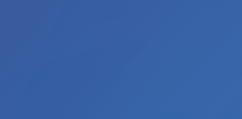
Developed by the Media Rating Company (MRC), Eng. Bandar AlMashhadi, CEO of MRC highlighted that KSA TAM will equip stakeholders with detailed analyses by providing them with actionable data to optimise their media strategies.

“This tool is poised to empower advertising agencies, broadcasters, producers and digital publishers by delivering accurate audience ratings, enabling them to make well-informed, data-driven decisions. The implementation of TAM as the official audience measurement standard represents a significant milestone. The highprecision data offered to stakeholders will support strategic decision-making, grounded in accurate and systematic insights,” he said.


































‘‘The high-precision data offered to stakeholders will support strategic decision-making.”
AlMashhadi also emphasised that the development aligns with the broader goals of Vision 2030, Saudi Arabia’s ambitious roadmap to drive innovation and position the Kingdom as a leading media and entertainment hub globally.




Procter & Gamble (P&G) is one of the first companies to adopt KSA TAM.
Amine Sadik, Middle East Marketing Operations Director at P&G, expressed the significance of this advancement, stating, “As the first company to adopt KSA TAM, P&G are proud to lead the way in embracing innovation that deepens our understanding of consumer behaviour. KSA TAM’s advanced audience measurement capabilities allow us to make more informed decisions, optimising our media investments and ensuring that we connect with our audiences in more meaningful and impactful ways.”






‘‘We can connect with our audiences in more meaningful and impactful ways.”


KSA TAM recruits a representative panel of viewers, tracking their TV habits in real time using people meter units. These devices monitor which channels, programmes and commercials are watched, and for how long. As of May 2024, KSA TAM measures in-home viewings on TV sets by tracking 9,250 individuals in 2,150 reported households, representing 16.8 million individuals aged over 4 years across all cities with a population of 80,000 and above. Covering 150 TV channels that are measured per second and reported on a minute-by-minute basis, with a full comprehensive view across 50 TV channels.
The tool breaks down viewing data by time periods (regular, access, prime and special dayparts), and tracks ad performance by analysing how many people viewed each spot and for how long. It ranks programmes and channels based on audience share and viewership, calculating the number of unique viewers and their exposure frequency.
This helps advertisers optimise media plans by providing insights into reach, frequency, CPM, GRP, and cost per GRP – amongst other key parameters. It also enables post-campaign analysis to evaluate ad effectiveness, offering detailed reports on audience share and program rankings. Reflecting the more natural viewing behaviour of the audience across both TV and digital platforms, it also allows for the creation of more holistic, cross-platform media strategies that are content-first.



Dr. Hoda Daou, Managing Director at Annalect MENA, an Omnicom Media Group Company, said that the most critical element of this measurement is its robustness in capturing real TV viewership at a very granular level as it unlocks multiple capabilities around TV advertising, such as understanding viewership behaviour. She added that this measurement will revolutionise how the true value of TV across media is quantified.

‘‘KSA TAM will help amplify TV ROI and generate organic growth for TV.”
Daou said, “KSA TAM will change the way TV is measured, improving TV planning and therefore further proving and strengthening the value and impact of TV. Advertisers will gain a more in-depth understanding of what works best and in what way. This will help amplify TV ROI and generate organic growth for TV. With this new measurement, we see a greater viewership spread across channels and


Daou also highlighted that KSA TAM will create one language and one currency across TV and streaming viewership. She said, “KSA TAM unifies all broadcasters and advertisers in the way they perceive, measure, and value TV, both from content and advertising perspectives. This is essential to setting the foundations of TV and streaming and enabling all the capabilities listed above.”

dayparts. Hence, it is proving the effectiveness of TV advertising while spending more efficiently. This will help drive new TV entrants as investments can accommodate different tiers of advertisers.”



Mahmoud Maghraby, Regional Media DirectorMEA & GEM at Mars, emphasised the transformative impact of KSA TAM on advertising strategies, especially in optimising TV campaigns with accurate, real-time audience data.

‘‘It gives us a crystal-clear picture of how people are behaving across different screens and platforms .”

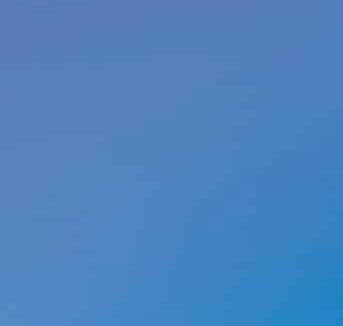


Maghraby said, “As a business that relies on TV advertising to reach our consumers, KSA TAM is a breath of fresh air. It is a game-changer for understanding who’s watching what in Saudi Arabia. It gives us a crystal-clear picture of how people are behaving across different screens and platforms, so we can tailor our campaigns to capture the right audience at the right time. This advancement allows for more effective advertisements and superior outcomes for our brands. Additionally, it plays a crucial role in cross-market comparisons and benchmarking, as we have finally standardised the measurement of viewership. It’s a big step forward for transparency and datadriven decision-making in the Saudi market, and it will help redefine what success looks like in advertising.”
Driving commercial success
KSA TAM offers a multitude of benefits that enhance audience measurement and advertising strategies, translating into significant commercial advantages.









‘‘This will undoubtedly raise the bar for how the industry approaches consumer engagement.”

It generates precise unduplicated reach and frequency metrics, tracks program engagement, micro-switching, and ad exposure, allowing for more accurate audience targeting. This advanced tool facilitates quicker, informed decision-making, paving the way for future multi-screen tracking.
Ahmad Chatila, Director of Brand & Communication at HungerStation, highlighted the significance of KSA TAM in advancing the industry’s approach to audience engagement and campaign effectiveness. He said, “The launch of KSA TAM is a pivotal moment for














the industry, setting a new standard in audience measurement and transparency. As a company that values data-driven insights, Hunger Station recognises the immense potential this tool offers in shaping more effective and impactful campaigns by providing a clear, in-depth view of audience behaviour. This development will undoubtedly raise the bar for how the industry approaches consumer engagement, benefiting both brands and audiences alike.”
KSA TAM provides access to real-time, precise data on TV consumption habits, offering insights into how people engage with TV. This is a game-changer for advertisers and agencies, allowing them to optimise campaigns on the go, making adjustments while the campaign is still running, rather than waiting for post-campaign analysis. With this immediate & constant flow of data, advertisers can improve campaign performance and business outcomes for their clients.
‘‘KSA TAM integrated with Merkury results in more personalised, data-driven campaigns that deliver better business outcomes.”


ahead of the competition by delivering campaigns that are not only data-driven but also attentionfocused, ultimately driving better business results and positioning us at the forefront of the evolving media landscape.”
Claudine Ghanem, Media Director at BPN MENA added that KSA TAM will serve as a powerful catalyst for business growth and unlock new opportunities across multiple dimensions. It will also encourage clients to invest more on TV due to the transparent and data driven measurement solution.
Ghanem said, “The introduction of KSA TAM marks a fundamental shift in the way media consumption is measured, and agencies will need to adapt both strategically and operationally to remain competitive. Precision targeting enabled by TAM data will ensure ad campaigns reach the most relevant audiences, improving conversion rates and minimising waste. Better ROI tracking across platforms (TV, digital, streaming) allows for data-driven budget allocation, ensuring investment goes where it has the highest impact. This efficiency in media spend will attract more advertisers, creating new revenue streams.”


She also added that KSA TAM’s metrics will significantly influence engagement with partners and shape joint strategies as its methodology will allow for an accurate segmentation that can add value to clients and it will reflect in fair shares of spends with broadcasting partners.





Commenting on how KSA TAM will enhance an agency’s ability to make more data-driven, informed decisions, Fiona Black, Managing Director, Carat MENA, said, “KSA TAM gives us access to a broader range of audience metrics, moving beyond outdated methodologies to real, people-based data. When integrated with Dentsu’s proprietary Merkury panning tools, the insights become even more powerful, allowing us to plan and activate campaigns based on real individuals rather than relying on broad demographic segments. This enables us to make highly informed decisions across all media touchpoints, resulting in more personalised, data-driven campaigns that deliver better business outcomes. The precision of people meter data ensures that our campaigns are grounded in accurate, actionable insights.”


Ghanem added, “We also believe that TAM can inspire creative collaborations and new business opportunities allowing broadcasters and advertisers to develop unique content that aligns with audience interests.


‘‘Precision targeting enabled by TAM data will ensure ad campaigns reach the most relevant audiences, improving conversion rates.”
She also highlighted that advanced measurement solutions like KSA TAM will position Carat as a leader by providing the capabilities to deliver more precise and impactful campaigns.
Black added, “The people meter technology allows us to plan and optimise media around real audience behaviours, offering clients unparalleled transparency and trust. Combined with Merkury, this technology will allow us to stay



This will not only attract more viewers, but also enhance brand image and loyalty, creating a win-win scenario for all collaborators. Moreover, it will strengthen relationships and trust among all stakeholders.”


‘‘This development opens up opportunities to target specific pockets of viewership across key stations or programmes that align with client objectives.”

Pankaj Pagarani, Head of Data Sciences, Publicis Groupe Middle East predicts that KSA TAM added that the enhanced trust in TV measurement resulting from the new tool will enable agencies to attract non-TV clients who have previously been hesitant to invest in TV advertising due to doubts about its effectiveness. Pagarani said, “This development opens up opportunities to target specific pockets of viewership across key stations or programmes that align with client objectives. Agencies can now identify tailored solutions that efficiently deliver results without the need to create elaborate TV campaigns for clients with budget constraints.”


He added that access to richer audience data enables more precise measurement and optimisation strategies, fostering greater accountability to achieve improved outcomes within allocated budgets.















Beyond basic ratings, KSA TAM offers a comprehensive understanding of TV usage. This deeper insight allows brands to optimise their ad placements by focusing on the most effective channels, programmes, and time slots. The platform’s ability to target specific audience segments with precision further enhances campaign relevance, as brands can tailor messages to resonate with particular demographics and behavioural traits.


‘‘The reliability and applicative nature of the data will enable







us to make better-informed decisions on behalf of our clients.”

Alan Azar, Regional Managing Director of CX, Data and Tech at GroupM MENA said KSA TAM will empower agencies like GroupM to craft even better-informed strategies and plans, leading to more efficient and effective campaigns that will supercharge growth.




He added that from a commercial standpoint it ensures that agencies are working with the right partners at the right price, who can deliver for clients.
“We’re excited to see a new and modern approach to measuring TV and streaming audiences in Saudi Arabia. The launch of KSA TAM will allow us to gain more valuable insights into viewer behaviour faster and enable more effective campaign planning; this will have a profound effect on helping us not only achieve but exceed our client’s KPIs and business objectives. The reliability and applicative nature of the data will enable us to make better-informed decisions on behalf of our clients. This means optimising media spending, refining target audiences, and measuring campaign effectiveness with greater accuracy,” Azar said.





combination of global scale, expertise and innovation to connect brands with their audience, deliver industry-leading work for our clients, and grow their businesses.”
Ziad Chalhoub, Regional Executive Director Investments, Mediabrands MENAT, stressed the transformative impact of KSA TAM, and its role in reshaping how the industry approaches audience measurement, offering both brands and agencies the ability to make more informed, data-driven decisions.
Chalhoub said, “We are truly excited about the launch of KSA TAM, which represents a transformative step for the media and the advertising landscape in Saudi Arabia. This sophisticated measurement tool offers unparalleled accuracy and transparency, enabling us to harness deeper insights into audience behaviour.”
“With KSA TAM, we can elevate the precision of our media strategies, ensuring our clients’ investments are optimised to connect with the right audiences and deliver more impactful results,” Chalhoub added.

Echoing this sentiment, Samer Dada, Partner & Managing Director at AlixPartners, emphasised the transformational impact of KSA TAM on the broader media ecosystem.

Dada said, “The adoption of the new KSA TAM measurement system has fundamentally reshaped the measurement standard for broadcast content consumption in the Kingdom, allowing MMS, publishers, and agencies to implement a more sophisticated, data-driven analytical approach to pricing.





“This advancement brings a heightened level of transparency and precision to the marketplace, enabling stakeholders to optimise their media investments across premium content with greater confidence,” Dada stated.


‘‘With KSA TAM, we can elevate the precision of our media strategies, ensuring clients’ investments are optimised to connect with the right audiences and deliver impactful results.”
He added that the Saudi market is evolving rapidly and that this new methodology will allow agencies to be more agile and responsive to changing consumer habits and key events, and essentially match the pace of change to ensure clients are ahead. Azar added, “GroupM recognises the immense potential and opportunities of KSA TAM and is proudly an early adopter and advocate for the tool. We’re excited to continue leveraging KSA TAM alongside our unique



“By integrating KSA TAM into pricing strategies, we are fostering a more accountable and efficient media ecosystem, ultimately benefiting both advertisers and consumers alike,” Dada added.

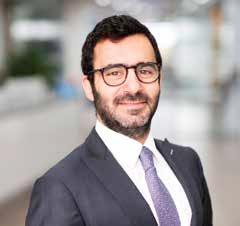

‘‘By integrating KSA TAM into pricing strategies, we are fostering a more accountable and efficient media ecosystem, ultimately benefiting both advertisers and consumers alike.”



Emphasising the far-reaching impact of KSA TAM on refining, a spokesperson from Unilever shared a comment on how KSA TAM affects targeting and deepening consumer engagement.

The spokesperson said, “KSA TV Audience measurement marks a major advancement for the entire media and advertising industry in Saudi Arabia and the region.”

“The ability to better understand how consumers interact with content will enable us to target our campaigns with even greater accuracy, delivering the right message at the right moment. This is a powerful capability that will not only enhance our marketing efforts but also drive more meaningful engagement with our customers,” the Unilever spokersperson said.


Finalists for the Athar Awards were selected through a rigorous, multi-level evaluation process led by an expert panel of 80+ jury members.

Athar – Saudi Festival of Creativity, the largest gathering of the creative marketing industry in Saudi Arabia that recognises and celebrates local creativity, has unveiled the shortlist for its highly anticipated Athar Awards 2024.
The Athar Awards spotlight creative work that furthers the pillars of Vision 2030 and pioneers driving innovation within Saudi Arabia’s dynamic and rapidly evolving marketing and communications sector. This year’s shortlist features top Saudi creative leaders and brands, agencies and organisations.
This year’s finalists were meticulously selected through a rigorous, multi-level evaluation process led by an expert panel of more than 80 jury members.

The winners will be announced at the highly anticipated Athar Awards 2024 ceremony at the Crowne Plaza Riyadh RDC Hotel and Convention Center on 6 November, 2024.
Ian Fairservice, Chairman of the Athar Festival and Managing Partner of Motivate Media Group, said, “The Athar Awards offer an exceptional opportunity for the Kingdom’s marketers and creatives to shine. From ambitious individual talents, brands and agencies to forward-thinking government entities, we were delighted by the depth and breadth of this year’s entries and the impact they have already had on the domestic and regional creative marketing field.”
“I would like to congratulate all the shortlists for their outstanding work and wish them the very best of luck. The competition is fierce, and we can’t wait to see who emerges as the final winners,” Fairservice added.
Building on the success of its inaugural edition, the second edition of the Athar Awards serves as a one-of-a-kind platform, celebrating creative marketing excellence in the Kingdom and the talent behind it.
The 2024 Awards will honour outstanding campaigns, individuals, and teams across 24 categories, recognising their pivotal contributions to raising the bar and pushing the boundaries of Saudi Arabia’s creative potential.
Mohamed Al Ayed, Vice Chairman of the Athar Festival and CEO of TRACCS,
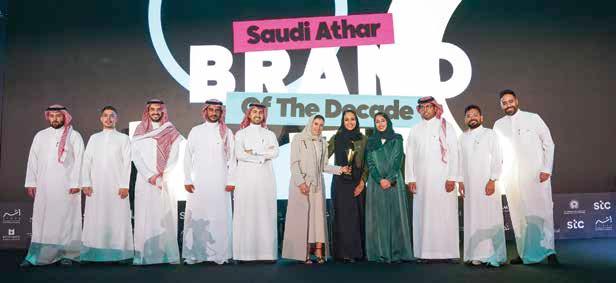
said, “Creativity has long been intertwined with Saudi Arabia’s culture, traditions and heritage, and I am proud of the remarkable progress the creative marketing industry has made under the framework of Vision 2030.”
“As the foremost recognition and ultimate celebration of creativity in the Kingdom, Athar Awards 2024 will host the best and brightest minds in the industry, all competing for top honours. With tough choices to make across every category, our jury members have set the stage for an exciting reveal of the final winners,” Al Ayed added.
The shortlists have been selected for their outstanding strategic and creative thinking, exemplary leadership, and innovative approaches that drive business growth and advance the creative marketing sector. Individual and Team categories shortlists will be announced on the night of the awards ceremony along with the winners.
By bringing greater attention to these pioneering institutions and individuals, the Athar Awards aims to inspire the next generation of talent committed to driving Saudi Arabia’s creative and economic future. Aligned with the objectives of Saudi Vision 2030, the Awards emphasise creativity as a vital driver of economic growth, celebrating excellence in the realms of education, sustainability, and innovation.
Athar Festival 2024 is presented by Motivate Media Group and TRACCS. To participate in the Athar Awards, celebrate and witness the winners announced live, visit atharfestival.com.



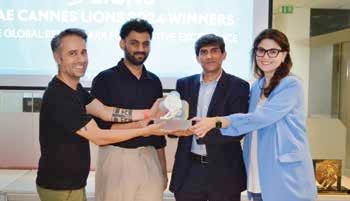


Motivate Media Group and Motivate Val Morgan, the official UAE representatives of the Cannes Lions Festival of Creativity, have conducted a ‘victory tour’ to celebrate the winning agencies in the UAE who collectively lifted 23 metal cats, including one Grand Prix, three Gold Lions, five Silver Lions, and 14 Bronze Lions, at The Cannes Lions Awards 2024.
Winning agencies from the UAE included Impact BBDO, Leo Burnett MEA (Middle East & Africa), FP7 McCann, Saatchi & Saatchi MEA, MullenLowe MENA, McCann Health, and Serviceplan Group Middle East, alongside the brand Floward MENA.
To commemorate these wins, Avinash Udeshi, the Chief Operating Officer of Motivate Val Morgan, also representing Motivate Media Group, visited the winning agencies through September and early October to officially hand over the shiny Cannes Lions trophies to the winning teams.
The first pit stop on the victory tour was at the MCN offices, which witnessed trophies being handed out to FP7 McCann MENAT’s Tarek Miknas and team, as well as MullenLowe MENA’s Paul Banham, McCannHealth’s Karen Kamel and their teams. The award distribution was led by Ghassan Harfouche, Group CEO, MCN MENAT, following which Avinash Udeshi congratulated the team. Motivate Media Group and Motivate Val Morgan then

stopped by the Impact BBDO offices to hand over the only Grand Prix win for the region and recognise the team that lifted the Regional Agency of the Year (MENA) award at Cannes Lions.
Avinash Udeshi opened the award distribution, following which Dani Richa, Chairman, BBDO Europe, Middle East and Africa, shared remarks on the wins. Impact BBDO’s Ali Rez and Rana Sadek received the trophies on behalf of the team.
The third stop on the UAE Cannes Lions victory tour was at the Serviceplan Group Middle East offices. The agency’s Managing Partner Natalie Shardan and her team collected the Cannes Lions trophy before the creativity caravan rolled on.
The grand finale witnessed Motivate Media Group and Motivate Val Morgan celebrate under the Publicis Groupe roof, handing over trophies to Leo Burnett MEA and Saatchi & Saatchi MEA. Trophies were received by Nathalie Gevresse, CEO, Publicis Communications – UAE, as well as Saatchi & Saatchi MEA’s Ramzi Sleiman, Leo Burnett MEA’s Kalpesh Patankar and their respective teams. There’s no doubt about it: from innovative campaigns to groundbreaking ideas, the UAE continues to push the boundaries of creativity.
Dubai Lynx, the regional awards run by Cannes Lions, are now open for entries and will take place on 9 April, 2025. Find out more at dubailynx.com.
Motivate Media Group and Motivate Val Morgan celebrate the regional winners from The Cannes Lions Awards 2024.
By Anup Oommen


Do Epic Good’s Chief Sustainability Officer
Charney Magri discusses how purposedriven strategies are more profitable than most leaders realise.




food security head-on. Yes, some will argue vertical farming comes with its challenges, but it’s evolving fast, innovating and staying ahead of the curve.
Meanwhile, we’re all familiar with the infamous Ripe Market, a community-led business that provides a platform for homegrown businesses to thrive within the UAE’s competitive landscape. If that wasn’t unique enough in its 2011 inception, The Ripe Market collaborates with more than 100 local farmers, ensuring 75 per cent of its products are locally sourced.

One of the most compelling reasons why sustainability is profitable is the growing shift in consumer behaviour. Today’s consumers aren’t just swiping left on fast fashion – no, they’re swiping right for brands that care about the future of the planet.
Research shows that nearly three-quarters of global consumers expect the brands they support to drive positive change. Millennials and Gen Z? They’re leading the charge, prioritising sustainability over cost –and, frankly, it’s about time. When businesses embrace purpose-driven strategies, they’re not just picking up new customers – they’re building long-term relationships with ecoconscious fans. And that’s a direct win for brand perception and product consideration.

In the wild world of modern business, sustainability has evolved from a ‘nice-to-have’ to the ultimate brand amplifier. Companies worldwide, including those in the Middle East, are finding themselves under the spotlight for their environmental and social impact.
But there’s still this outdated myth hanging around like a fly in my chardonnay – sustainability isn’t profitable. For many businesses, the assumption is that adopting purposedriven strategies equals high costs and no return.
Well, spoiler alert: it’s time to debunk that myth.

Sustainability isn’t just a financial obligation, it’s a smart investment for long-term success. By embedding values like environmental responsibility and social equity into their core strategies, brands can create significant value.
Purpose-driven strategies not only improve a brand’s perception and product consideration but also strengthen customer loyalty and unlock new revenue streams. The ROI from sustainability is much bigger than most businesses realise – it’s the amplifier, the market differentiator you’ve been looking for.

core strategy, companies aren’t just


core strategy, companies aren’t just improving their bottom line – they’re future-proofing their operations against climate change risks, resource scarcity, and the shifting winds of regulatory landscapes.

Both these businesses aren’t just reducing environmental impact –they’re driving growth and building a fierce customer loyalty in the process.
So, let’s talk money: the myth that sustainability isn’t profitable is grounded in a misunderstanding of costs versus benefits. Yes, the upfront costs of switching to renewable energy, having to invest in R&D, the need for additional resources, or even auditing your supply chains can be daunting – especially with shareholders expecting their returns. But here’s the thing: the long-term gains far outweigh those initial expenses.

It’s easy to wag the finger at industries notorious for their environmental impact – fast fashion, fossil fuels, and overconsumption, to name but a few. But here’s the thing: the true opportunity lies not in pointing fingers but in improving ourselves and our buying habits.


Companies that communicate their sustainability efforts with transparency and authenticity are seen as trustworthy, forward-thinking, and the leaders of tomorrow. Let’s face it, no one’s putting their money behind a brand that’s still using fossil fuels like it’s 1995.
Here’s where the magic happens: creating value through values. Brands that lead with purpose – whether by reducing their carbon footprint, supporting social justice causes, or adopting ethical sourcing practices – aren’t just seen as businesses. These brands are part of something bigger, something meaningful. They’re vehicles for change. They’re brands with guts and soul that lead the charge on change, shaping our future.

Sustainable businesses often see cost savings through increased energy efficiency, waste reduction and improved resource management. Switching to renewable energy doesn’t just reduce your carbon footprint – it slashes operational costs in the long run. And brands that adopt sustainable supply chains often find new avenues for innovation, reducing their reliance on finite resources or materials that are about as popular as a single-use plastic straw.

In the Middle East, where we face the environmental challenges of living in a desert, brands that take action to mitigate their impact are reaping the rewards. Badia Farms, the region’s first indoor vertical farm, is a perfect example.
By using 90 per cent less water than traditional farming methods, it is not just offering a sustainable local source of pesticide-free produce; it is tackling
Contrary to what you might think, businesses committed to purposedriven strategies are catching the eye of investors. The rise of ESG (environmental, social, and governance) investing is proving that companies prioritising sustainability have a stronger appeal.
A report from BlackRock, one of the world’s largest investment firms, found that businesses with strong ESG credentials consistently outperform their peers, particularly during times of economic turbulence. We’re much more loyal to a brand that stands for something meaningful than one that’s always in hard-sell mode. It’s like the difference between a friend who only calls when they need a favour and the one who’s always there when you need them most.
This shift in investor priorities shows that purpose-driven businesses are more resilient, adaptable and ready for long-term growth. By integrating sustainability into the
For brands in the Middle East and beyond, the focus shouldn’t be on criticising competitors or other industries. Instead, it’s about leading by example. This means adopting sustainable practices across the board, from sourcing and production all the way to marketing and distribution. Brands that take proactive steps to reduce their environmental footprint and support social causes are more likely to inspire change across their industry. And let’s be honest – who doesn’t want to stand out in an already overcrowded and noisy landscape?

Advertising agencies play a pivotal role in this transition. Our role as creatives is not just to craft campaigns that convince consumers to consume more – it’s to help brands build authentic, purpose-driven narratives that resonate. It’s our responsibility as creatives to highlight the positive journey a brand is taking, turning sustainability from a buzzword into a genuine competitive advantage.


In today’s world, where consumer expectations, regulatory pressures, and environmental challenges are all reaching a new high, sustainability is no longer an option – it’s a business imperative and an amplifier.
Purpose-driven strategies allow brands to build trust, create value and unlock new avenues for growth. The myth that sustainability isn’t profitable is not just outdated – it’s a barrier to your progress and future-proofing your brand.
As brands in the Middle East navigate the shifting landscape, they must realise that purpose and profitability are not mutually exclusive. Embrace sustainability, and you’ll create lasting value for your customers, shareholders and the world at large.
The ROI on purpose-driven strategies? It’s bigger than you think –and it’s here to stay.
By Charney Magri, Co-Founder and Chief Sustainability Officer, Do Epic Good





As the world grapples with the urgent reality of climate change, sustainability has emerged as a critical driver of innovation across all sectors.
Yet, despite this imperative, many industries, including media, are lagging in their readiness for this seismic shift. The MENA region, with its unique challenges – water scarcity, extreme temperatures, and increasing desertification – must take bold steps to address these issues.

But the responsibility doesn’t rest solely on governments; businesses, especially in the communications sector, must also step up. As marketers and creatives, we hold a unique position of influence in both the economy and society.
It’s our duty to leverage this influence to drive systemic, organisational and behavioural change. The media industry is ideally suited to support a cultural shift toward sustainability, helping brands create demand for eco-conscious practices while also redefining our relationship with consumers.

The time for businesses to embrace sustainability as a core value has arrived. It’s not just about minimising risk; it’s about future-proofing our operations and unlocking new markets. Companies that ignore this shift face dire consequences: trust erodes in the face of greenwashing, talent flees, and clients look elsewhere. The message is clear – business as usual is no longer an option.
In our role at the forefront of this transformation, we are proud to collaborate with industry leaders such as Mastercard in crafting innovative digital advertising campaigns that align with sustainability goals, marking a commitment to responsible practices in the MENA region.
Two pivotal initiatives illustrate our approach:
1. THE MEDIA CARBON CALCULATOR (MCC):

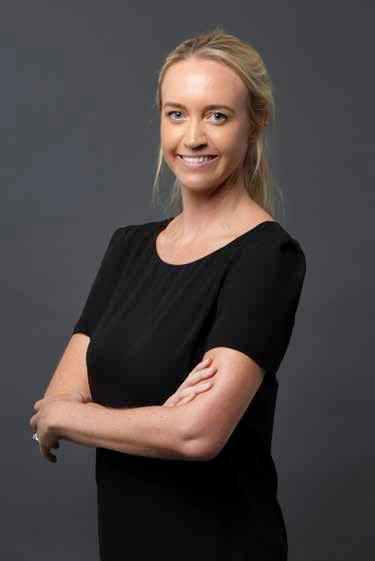

This tool measures the carbon impact of media campaigns using actual campaign data. By identifying emissions hotspots and establishing a baseline for reporting, the MCC empowers our clients to understand the true carbon footprint of their campaigns. As we expand this tool into new markets in 2024, brands will gain the ability to set specific carbon targets and model various scenarios to optimise both effectiveness and sustainability. This proactive strategy enables informed decision-making before investments are made, ensuring that the environmental costs of advertising are clear from the outset.
2. GREEN PMP MARKETPLACES: Partnering with Conscious Media, we have developed a green marketplace deal that utilises Scope3 Climate Shield technology. This partnership meticulously excludes high-carbon-


“TOGETHER, WE CAN SHAPE A FUTURE THAT PRIORITISES SUSTAINABILITY, RESILIENCE AND A HEALTHIER PLANET.”
LEAD: Embrace the leadership challenge. Marketing decisions affect people and the environment; acknowledging this power can lead to positive outcomes.
WIDEN THE LENS: Consider the long-term implications of marketing decisions. Think about the systemic effects on stakeholders, resources, and social and environmental systems.
MEASURE WHAT MATTERS: Develop indicators specific to your organisation’s impacts and brand purpose to ensure decisionmaking aligns with long-term sustainability goals.

Carat MENA’s Sophie Macleod discusses the media industry’s path to a low-carbon future.
emission publishers from our media supply chain, ensuring that campaigns run on sustainable, low-carbon inventory. By prioritising eco-conscious media buying, we can directly reduce emissions and work towards our science-based targets on the journey to net-zero.


For advertisers starting their green journey, here are some tips:
PURPOSE FIRST: Place long-term wellbeing for people and the planet at the core of your decisions. This approach not only supports sustainable practices but also aligns with consumer values.
RELATE AND CO-CREATE: Build deep, collaborative relationships by empathising with the real people affected by your decisions. This fosters authentic connections and preserves relationship capital.

MARKETING AS THE COMPASS: Ensure that marketing is at the heart of value generation within your organisation. This requires a shift from profit maximisation to a focus on purposedriven practices across all levels.
The urgency of decarbonising the media supply chain cannot be overstated. Achieving this ambitious goal requires a concerted effort across the entire media ecosystem. The positive impacts of our eco-conscious initiatives are already visible, proving that sustainable advertising not only benefits the planet but also resonates with increasingly aware consumers.

As we move forward, the communications industry must recognise its potential as a powerful catalyst for change. The stakes are high, but so are the opportunities. By integrating sustainability into our business models, we can drive growth, foster trust, and lead the way in a new era of climate-conscious consumerism. Let us remember that actions truly speak louder than words. It’s time for the media industry to embrace its role in the fight against climate change and take bold, decisive action. Together, we can shape a future that prioritises sustainability, resilience and a healthier planet for generations to come. The moment for transformative action is now; let’s seize it.
By Sophie Macleod, Business Director, Carat MENA




As the global momentum toward sustainability gains pace, brands are now reevaluating their role in contributing to a greener future.
Sustainable digital media is emerging as a critical driver in this mission, offering a solution that generally increases the performance of campaign KPIs, promotes eco-friendly practices and aligns with the values of an increasingly conscious consumer base. With the ambitious sustainability goals set by MENA countries, including the UAE and Saudi Arabia, embracing sustainable digital media is no longer optional; it’s a strategic imperative.

clear that traditional digital marketing approaches are not sustainable. Sustainable digital media leverages green technologies to reduce this impact. Whether it’s using data centres powered by renewable energy, optimising digital assets to use less bandwidth, or adopting energy-efficient technologies to deliver advertising across platforms such as YouTube or programmatic supply side platforms, sustainable digital media enables brands to increase performance whilst reducing their carbon footprint.



The rapid increase in digital media consumption brings with it a significant environmental footprint. Digital activities, including online advertising, streaming and data storage, are responsible for an estimated 3 per cent to 4 per cent of global greenhouse gas emissions – comparable to the aviation industry.
The energy consumption from data centres and content delivery networks adds to the carbon emissions, making it
Consumer demand for sustainability: Modern consumers – especially millennials and Gen Z – expect brands to align with their environmental values. According to a recent survey, 73 per cent of global consumers would switch to a brand that prioritises sustainability. By embracing sustainable digital media, brands can attract this growing demographic and build stronger connections with ecoconscious audiences.

Saudi Arabia is also at the forefront of the global sustainability drive with its ambitious Net Zero by 2060 goal, announced as part of the Saudi Green Initiative (SGI). This initiative represents the Kingdom’s long-term commitment to addressing climate change, reducing carbon emissions and diversifying its economy. Saudi Arabia has outlined a comprehensive strategy that includes reducing emissions from key sectors, increasing reliance on renewable energy and implementing large-scale reforestation projects. The SGI also aims to reduce carbon emissions by 278 million tons annually by 2030, with significant investments in clean energy and circular carbon economy technologies.



Conscious Media’s Andy Powell shares his take on a ‘mandatory investment’ for forwardthinking brands.


Brand leadership and reputation: In today’s competitive landscape, sustainability is more than a buzzword – it’s a measure of corporate responsibility. Brands that adopt sustainable digital media are seen as leaders, demonstrating commitment to reducing environmental impact. This enhances reputation and builds long-term consumer trust and loyalty.
For brands looking to establish a presence or grow within the Kingdom, aligning digital strategies with Saudi Arabia’s sustainability vision is critical. Sustainable digital media offers a way to reduce emissions and contribute to the Kingdom’s broader environmental objectives. By adopting greener digital practices, brands will also enhance their market reputation among consumers who are increasingly focused on sustainability.


Alignment with regulatory frameworks: As more countries implement environmental policies, businesses are facing increasing regulatory pressure to meet carbon reduction targets. Both the UAE and Saudi Arabia have set ambitious goals to transition to a sustainable, low-carbon future. Brands operating in these markets must align with these national visions or risk falling behind.
Cost efficiency: Sustainable digital media isn’t just about ethics – it’s also about efficiency. By optimising digital content, reducing unnecessary data transfers, and using energy-efficient technologies, brands can significantly reduce operational costs. Sustainable media strategies often lead to cost savings by lowering energy consumption and maximising digital infrastructure efficiency.
The UAE is pioneering environmental leadership in the region through its Net Zero by 2050 strategic initiative, aiming to become the first country in the Middle East to reach carbon neutrality. This bold initiative outlines the UAE’s long-term strategy to decarbonise its economy, transitioning to a cleaner, greener future. Businesses operating in or partnering with the UAE need to contribute to this mission by integrating sustainability into all facets of their operations, particularly digital marketing.
Sustainable digital media is one of the fastest and most impactful ways for brands to lower their emissions while maintaining an effective online presence.
Both the UAE and Saudi Arabia are setting the bar for sustainability in the Middle East, and brands must follow suit. By adopting sustainable digital media practices, businesses can help these nations achieve their ambitious environmental goals while also benefiting from the growing demand for responsible, eco-friendly brands. By making sustainable digital media a core part of their strategy, brands will:
• Increase performance metrics as sustainable media generally results in ads appearing in less cluttered, highly viewable environments.


• Meet consumer demand for ethical and responsible business practices.
• Enhance their reputation as leaders in sustainability.
• Comply with national regulatory frameworks in the UAE and Saudi Arabia.
• Reduce operational costs through energy-efficient and optimised digital practices.

The rise of sustainable digital media is not just a fleeting trend but an urgent call to action for brands worldwide. As the UAE marches toward its Net Zero by 2050 target and Saudi Arabia drives towards Net Zero by 2060, businesses that embrace sustainable practices today will secure their future relevance, enhance their environmental impact, and gain the trust of eco-conscious consumers.
Incorporating sustainable digital media into marketing strategies is a small step with a big impact – benefiting both the planet and the brand.
By Andy Powell, Co-Founder & CEO, Conscious Media



Let’s start with the facts: More than 70 per cent of global consumers are actively changing their buying habits to reduce their environmental impact, according to a study by the United Nations. If your brand isn’t riding the sustainability wave, you’re not just missing out – you’re sinking. Sustainability isn’t some trendy buzzword anymore – it’s a full-blown consumer demand. Approximately 65 per cent of buyers want sustainably sourced or eco-friendly products. If your brand isn’t catering to this growing army of ecoconscious shoppers, you’re losing them to brands that get it.







Integrating sustainability and ESG (environmental, social and governance) principles into your business and reflecting them in your branding isn’t just a smart move; it’s a survival tactic. It’s about aligning with a tidal shift in consumer demands, staying ahead of the competition, and securing your place in a world where ethical practices aren’t optional – they’re demanded.
ALIGNING WITH CONSUMER EXPECTATIONS


ESG principles offer a framework that resonates with today’s socially and environmentally aware consumers. Brands that show commitment to environmental stewardship, social responsibility and sound governance practices are perceived as trustworthy and forward-thinking. This alignment not only strengthens brand loyalty but also enhances market competitiveness in an increasingly crowded marketplace, where more than 50 per cent of Gen Z and millennial consumers factor sustainability into their purchasing decisions.
Sustainable packaging using recycled, biodegradable, or plant-based materials can reduce CO2 emissions, resonating with eco-conscious consumers and strengthening brand loyalty. For example, Switch Foods uses minimal ingredients for its plant-based frozen meat and integrates renewable and recycled materials for its packaging. The innovative peelable design allows the lamination to be separated from the cardboard, making the entire pack fully recyclable.
Smart investors aren’t just flirting with ESG – they’re all in, increasingly putting their cash behind companies with strong ESG practices, especially in the food industry. According to the UN Food and Agriculture Organization (FAO), sustainable food production is attracting significant investment as global demand for ethically produced food rises.
The World Bank reports that agricultural firms adopting ESG principles see better long-term financial returns and reduced risks. For food brands, embedding sustainability into their core strategy isn’t just about doing good – it’s about attracting investors who know the future of food is green. ESG-focused companies attract impact investors. Highlighting




Saudi-based agency WonderEight’s Walid Nasrala shares his take on the need for brands to mix ESG and branding together within the food sector.
energy savings or resource efficiency makes brands more appealing to investors who prioritise sustainability.

DIFFERENTIATE OR DISAPPEAR
If you’re weaving sustainability and ESG into your operations, you’re leading the way. According to a Nielsen Global Corporate Sustainability Report, 66 per cent of consumers are willing to pay more for sustainable brands, and 81 per cent of millennials expect their favourite companies to publicly share their sustainability commitments. Brands that spotlight genuine reductions in environmental impact, real community engagement, and transparent governance are building trust that leads to long-term loyalty. What many businesses might not realise is that embracing ESG principles can be profitable and provide long-term benefits, beyond just meeting consumer demands for sustainability. It’s not just about keeping up with the trend but seeing how ESG can drive value.




For instance, Classic Burger Joint and Crepaway – both long-established and beloved brands – were early adopters of Switch Foods’ plant-based products. Known

“EMBRACING ESG PRINCIPLES CAN BE PROFITABLE AND PROVIDE LONG-TERM BENEFITS.”

saved yearly for each brand, demonstrating how sustainability not only reduces environmental footprints but also attracts new, eco-conscious customers, further strengthening brand loyalty.
Accordingly, brands that introduce plant-based menus or adopt innovative eco-friendly practices alongside their traditional offerings position themselves as trendsetters, strengthening their market positioning and consumer trust.
As businesses navigate a landscape shaped by evolving consumer values, global sustainability challenges and regulatory frameworks, integrating sustainability and ESG principles into food branding emerges as a strategic imperative.

for their meat-heavy menus, these brands took a bold step by incorporating plant-based alternatives. Given that every kilogram of meat replaced can save approximately 100 kilograms of CO2 emissions, the impact is significant.
In fact, the shift resulted in hundreds of thousands of kilograms of CO2 emissions

By aligning brand narratives with these principles, businesses not only contribute to positive societal impact but also position themselves as leaders in responsible business practices.
Embracing sustainability isn’t just about meeting regulatory requirements; it’s about seizing opportunities to innovate, inspire and drive meaningful change while attracting discerning consumers and investors alike.
By Walid Nasrala






IMCN’s Sustainability Ambassador Andrej Arsenijevic shares how ad agencies can be ‘narrative curators’, champions of sustainability and drive business success.
t’s the year 2040. You wake up in a city where every business, ad agency, and brand work together to ensure nothing goes to waste. Resources are reused, products are built to last, and sustainability isn’t just a buzzword – it’s just how things are done.

Ad agencies must make a massive shift to accommodate this, and advertising will be difficult if they don’t understand how the circular economy works.
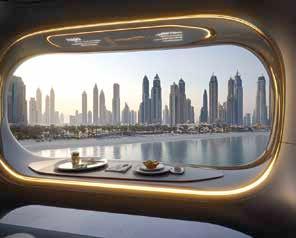

WHAT WILL CLIENTS EXPECT FROM AGENCIES?
In Dubai, a city known for reinventing itself, this new circular economy thrives, and advertising agencies are in the thick of it, shaping communication in this bold, new net zero world.
But how exactly do ad agencies fit into this picture? And what changes can we expect to see in how we consume, how brands operate, and how agencies create?
CONSUMPTION REINVENTED
The circular or regenerative economy is based on three principles: Design out waste and pollution. Keep products and materials in use. Regenerate natural systems.

In the circular economy, consumption isn’t about piling up stuff – it’s about making more thoughtful, longer-lasting choices.
Gone are the days of ‘buy more’ ads shouting at you. Instead, ad campaigns are about the value of products that last, can be reused, or are easy to repair.
Organic material products are nextlevel. You can buy seeds of fungi-based fabrics and grow them overnight into the latest Nike AF1, size 12. In some cases, purchasing a product is an investment, since it lasts forever.

Clients will look for more than just creative campaigns; they expect ad agencies to be narrative curators, weaving stories about the product lifecycle that capture consumer attention and build brand loyalty.
Agencies must understand the ins and outs of sustainable production, carbon-neutral marketing strategies and ethical sourcing. Brands won’t just ask, “Can you make the ad about this?” but “How can you help us align with this circular, regenerative world?”



“AGENCIES MUST UNDERSTAND CARBONNEUTRAL MARKETING STRATEGIES.”
Every product will have a digital label showing its carbon emissions. Think of it as a food nutrient label but for emissions. The luxury products will be the ones that achieve full circularity.
However, the client’s business is always driven by consumers. By 2040, consumers will want to know where a product comes from and demand to know where it’s going. Greenwashing will be a thing of the past. Studies already show that 78 per cent of consumers believe businesses should play a key role in fighting climate change, and by 2040, that number will rise even higher.

Agencies must embed sustainability into their culture, from how they operate to how they support their employees. Agencies must also have digital ratings based on environmental and social impact.
Young talent will want to work at places where their work makes a real impact. By 2040, more than 80 per cent of job seekers will prioritise companies with strong environmental and social responsibility practices.

AI AND CREATIVITY ARE PARTNERS.

Now, let’s talk tech. By 2040, AI will play a massive role in the advertising industry. AI will handle the heavy lifting: gathering data, analysing trends, and even helping optimise ads for the perfect audience. But humans will still have the edge when it comes to emotional storytelling.
AI will free up creative teams to focus on what they do best – creating memorable, innovative ideas that resonate. AI will help ensure these creative ideas are carbonefficient, suggesting ways to lower campaigns’ environmental impact. Sorry, creatives, but traveling for shoots will be rare. Instead of flying a crew worldwide, a virtual shoot will cut travel emissions by 75 per cent.
THE FUTURE IS CIRCULAR, AND IT’S LOOKING BRIGHT
In Dubai’s vibrant, forward-thinking landscape, ad agencies will be the champions of the circular economy, driving sustainability, creativity, and business success. They’ll help brands adapt to a world where consumption is responsible and lead the way in shaping consumer expectations, attracting purpose-driven talent, and making sustainability the norm.
So, what’s next? The circular economy is already spinning into action, but until this transformation is complete, here are five tips everyone can embed when communicating sustainable products or services:



ATTRACTING THE REGENERATION GENERATION By 2040, attracting talent will be more than offering an excellent working environment or remote work options (although those will still matter). The next generation of creatives will be purpose-driven, seeking out agencies that don’t just talk sustainability but live and breathe it.

1. Be specific and transparent.
2. Focus on positivity and hope.
3. Make it personal and actionable.
4. Focus on benefits, not sacrifice.
5. Storytelling over statistics.
By Andrej Arsenijevic, Executive Creative Director at Commonwealth McCann and Sustainability Ambassador at MCN


After COP28 UAE, eyes are now turning to COP29 in Baku as the urgency surrounding climate change and sustainability continues to dominate global conversations. In the weeks leading up to the conference, businesses worldwide will likely intensify their messaging on sustainability efforts.
It’s an annual ritual: as soon as the climate summits approach, companies – large and small – rush to showcase their ‘green’ credentials. However, in this frantic attempt to align with the climate agenda, many businesses fall into traps that not only expose them to public scrutiny but also risk long-term reputational damage.

Over the years, a recurring pattern emerges while observing global brands and their approach to sustainability communications: a flurry of activity aimed at projecting a green image, but often lacking authenticity and strategic thinking.
Many companies, driven by the desire to appear responsible and forward-thinking, end up communicating their sustainability efforts either too vaguely, overly promotionally, or disconnected from their actual practices. This doesn’t just undermine their efforts; it erodes trust among stakeholders who increasingly demand transparency and concrete action on environmental issues.





It missed the chance to demonstrate how its actions could complement the country’s goals and support the local community’s transition to a greener economy. This oversight is a glaring example of how businesses can miss out on fostering trust and building stronger relationships with their local stakeholders.
Then, there’s the issue of overlooking community involvement. Sustainability is not just about cutting emissions or reducing waste; it’s about working alongside the communities in which a business operates. Effective sustainability communications should prioritise listening to and partnering with local communities, understanding their needs, and considering the social implications of business activities.


When companies align their narratives with the tangible benefits for nearby neighbourhoods, such as job creation or improved quality of life, their efforts resonate more powerfully with the public and policymakers. This approach strengthens trust and underscores a genuine commitment to positive, shared impact.
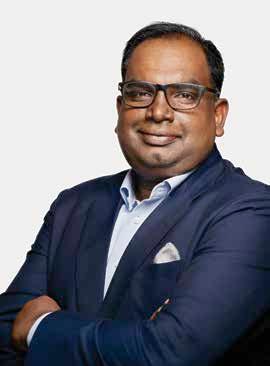



One of the most common missteps businesses make is ignoring the broader framework provided by the United Nations’ Sustainable Development Goals (SDGs). These globally recognised goals are a compass for responsible business conduct. Companies often craft isolated sustainability initiatives that overlook these goals.
For instance, a business might focus exclusively on reducing its plastic use while neglecting other critical areas such as decent work conditions, gender equality, or responsible consumption and production – key aspects of the SDGs. By aligning with these goals, companies demonstrate their commitment to holistic, long-term change and contribute meaningfully to global climate action, meeting the expectations of an increasingly conscious audience. This alignment not only informs but also empowers businesses to make a significant impact.

Effective sustainability communications go beyond one-off campaigns and occasional reports. They require an ongoing, transparent dialogue with stakeholders. The most successful companies take a different approach: instead of making sweeping statements about their sustainability goals, they openly acknowledge the complexities and challenges of transitioning to more sustainable practices.
By engaging employees, suppliers and customers in shaping their journey and regularly providing updates on both successes and setbacks, these businesses foster a sense of shared ownership and accountability. This transparency reassures stakeholders and strengthens trust, transforming the sustainability narrative into a story of continuous learning and improvement rather than a quest for recognition.

Businesses preparing their communications ahead of COP29 must first critically examine the authenticity of their messaging. Audiences today are savvy; they can see through marketing fluff and are quick to call out inconsistencies.
Watermelon Communications’ Pradeep Kumar talks about the need to communicate climate action with integrity.

Another pitfall is the tendency to overlook the specific landscape in which they operate. Many businesses fail to align their strategies with their country’s net-zero goals and related commitments. In recent years, countries across the globe have laid out ambitious plans to reach net-zero emissions, often backed by regulations and policies designed to drive this transition.
For businesses, aligning with these national targets is a matter of compliance and an opportunity to contribute to a collective effort. Yet, I have seen companies tout their global sustainability commitments while remaining conspicuously silent on how their local operations fit within their host country’s climate action framework. This mismatch raises questions about the sincerity of their efforts and whether they are genuinely attuned to the communities they serve. Take, for example, a multinational corporation with a significant presence in a country pledged to achieve net-zero emissions by 2050. While the company proudly announced its net-zero targets globally, it made no effort to engage with local authorities or collaborate with national climate initiatives.


Before making public claims, companies should ask: Do our actions align with the UN’s SDGs? Are we in sync with our country’s net-zero commitments? Are we engaging with the communities around us in meaningful ways? Communicating modest but genuine efforts rather than grandiose promises that lack substance is far more compelling.
Furthermore, simplicity and clarity in messaging are crucial. Sustainability is a complex topic, but better communication should exist. Stripping away jargon and focusing on relatable stories can create a more meaningful connection with audiences.
For example, instead of announcing the reduction of carbon emissions in abstract terms, a business could highlight how its shift to renewable energy is directly benefiting local communities by reducing air pollution. These human-centric narratives make the impact of sustainability efforts more tangible and relatable.
Finally, businesses must treat sustainability communications as a long-term commitment. Too often, messaging ramps up around significant events like Earth Day or climate conferences, only to fizzle out afterwards. This sporadic approach
sends a message that sustainability is a seasonal concern rather than a continuous priority.
Companies that excel in this space integrate sustainability into their regular dialogue, offering consistent updates, sharing learnings, and being transparent about their journeys. It’s not about perfection but about showing an ongoing effort to improve.


As we approach COP29, companies must seize the moment to align their sustainability messaging with real-world actions. This includes looking beyond their own goals to consider global frameworks like the UN’s SDGs, national net-zero ambitions, and the needs of the communities in which they operate.
Only by embracing this comprehensive approach can businesses hope to contribute meaningfully to the climate conversation and inspire others to do the same.
By Pradeep Kumar, Director of Public Relations, Watermelon Communications – Dubai.












arlier this year, a brand partner of ours who heads marketing for a large fintech company, called me to share news that she was very delighted about a campaign we had just launched for the brand. I already knew that the business results had been amazing, and the campaign had led to a whopping 7 per cent increase in the female user base for the app, generating a sizeable increase in revenue – all tied directly to the campaign; but business results wasn’t what she was calling about.

She instead mentioned how women across the country had been calling in and giving feedback on how much their lives had been positively affected by the campaign. We had created a social empowerment campaign for women which had resulted in more women being able to subscribe to the business. Social good generating commerce.

There has been a lot of buzz lately around what this communications industry is supposed to deliver, with a split being seen between those who advocate for an ‘advertising isn’t supposed to save the world’ approach, and those who feel that creativity can go beyond just selling products successfully and can be utilised as a power tool to change society for the better.
If you like to listen to data, it’s all been there for a while: several studies have shown beyond any argument that a vast majority of the younger generation prefer brands that demonstrate values. Not just ethical, but moral. Personal values. That’s the future right there. One of the most remarkable ones is a study in which Gen Z is willing to pay more for a product that have a positive impact on

Impact BBDO’s Ali Rez on why purpose-based creativity is essential for commerce to survive.
society. This is an old discussion though, proven time and time again, and one would think it would’ve been applied everywhere by now.
Last October, I visited a small town in the rural part of the province of Sindh, Southern Pakistan. The location had been devastated by massive flooding and millions of people had lost their homes. The town was being reconstructed, as part of the largest rehabilitation program in the world. I approached a small shack of a store that was selling snacks and soft drinks, and started talking to the owner about how the floods had impacted the economy. “Everything was gone, all of it, nothing remained except water everywhere. I lost everything. What use is being a store owner when a flood hits? Nobody buys a soft drink while drowning.” Simple reasoning indeed, but profound.

The campaign we ended up creating for the town led the government to present it at COP28, resulting in aid donations in excess of $250mn. This has helped build more flood-proof towns which can now withstand climate disasters, and of course maintain a healthy economy in which plenty of soft drinks can be sold.

Being purposeful, of course, presents the rather difficult challenge of having skin in the game. Acts instead of ads. Actions instead of words. Which is why a campaign like ‘Elections Edition’ for AnNahar Newspaper was its most popular: the newspaper, instead of printing its daily edition, donated the saved paper and ink to the country’s election organisers who had previously complained of a shortage of both. A common adage says that if

you save one person, you save all of humanity. We like to think that even if we made one vote happen, we saved democracy.
Of course, not all of it must be that drastic. Social purpose can be generated through authenticity built by being relatable to a current environment. In Saudi Arabia, for instance, helping the youth navigate societal changes and becoming a trusted friend can go a long way. If you want the consumer to care about the brand, your brand must care about something.
I was recently invited by the Earth Public Information Collaborative at the United Nations amongst several leading figures from the world of science, creativity and culture to be briefed on ‘The Most Important Brief’, designed to unify planetary science communications in the media to function as a true, trusted and relevant voice. What I learnt there from climate experts was shocking: it’s not looking good for our children on this planet. Which means it’s not looking good for commerce in the future either.


There was a great cartoon by Tom Toro in the New Yorker in which a father in tattered clothing sits around a campfire speaking to his kids. In the background lay the ruins of civilisation. He says, “Yes, the planet got destroyed. But for a beautiful moment in time, we created a lot of value for shareholders.”
I want to create a lot of value for shareholders but doing the kind of work that enables that value to keep being generated, not threaten its future. Because nobody buys a soft drink while drowning.

By Ali Rez, Chief Creative Officer, Impact BBDO

Shamrock Nevis Senior Creative Director, Tuesday Communications
Show me the impact. Don’t tell me the math. Just taking a leaf of the Adidas Parley playbook. Done right and relatable, sustainable initiatives pay off. And it isn’t going away anytime soon. The planet will send us a shrill reminder every now and then. Purpose-skewed work is a whole other thing. Not everyone is looking for purpose in a burger, shampoo or bag of chips. When it is true to a brand like Renault’s Cars to Work - we love it. Don’t love it when it’s just a manifesto with a Morgan Freeman-esque VO. Switch to my show please.
Do consumers really trust value- or purpose-driven goals set by brands, marketers and advertisers?

Daniel Thompson Global Client Lead, UM

It remains unclear how much climate change has been affected by all the hot air of over-hyped or questionable claims made by agencies and clients about purpose, sustainability, or general “aren’t we wonderful” messaging. Consumers want to trust brands, and when the claims are logical and backed by evidence, they do trust. However, the rush to be seen as focused on purpose has led some brands to overreach, as a notorious activist investor pointed out, to paraphrase, that the true purpose of mayonnaise is simply for salads and sandwiches. The most credible brands are those quietly driving real, purposeful, and sustainable change – and sharing their progress when it truly matters.

Carla Klumpenaar, GM, Marketing, Communication, Home Furnishing and Retail Design, IKEA
Consumers increasingly seek brands they trust, and purposedriven goals are central to building that trust. At IKEA, we believe trust is earned through transparency, action, and delivering on our commitments. Aligned with our new sustainability strategy, our focus remains on addressing climate, nature, and circularity. We aim to inspire and enable healthy, sustainable lifestyles by making sustainable living affordable, attractive, and accessible for all. Consumers want more than promises. Through circular business practices, sustainable-first campaigns, and tangible progress across every aspect of our operations, we show that our purpose goes beyond words – it’s a commitment to real, lasting change.
Shazia Syed
GM,
Personal Care Unilever Middle East & Turkey and Head of Customer Development, Unilever Arabia
As per our research, brands that prioritise eco-friendly practices and social responsibility are more likely to resonate with consumers in the GCC. Ecoconsciousness is increasingly playing a crucial role in shaping brand advocacy and influencing purchasing decisions.
But this trust is nuanced and influenced by several factors. Trust in digital interactions is crucial. Consumers in the UAE expect brands to be transparent, consistent, and respectful of cultural sensitivities. Personalisation is key, but it must be balanced with privacy concerns. So, overall, while our consumers are becoming increasingly open to value, and purpose-driven initiatives, brands must navigate these expectations carefully, ensuring transparency, cultural sensitivity, and a strong commitment to ESG principles to build and maintain trust.


Ahsan Fakih Digital Media Buyer, Amber Communications
YESThe average consumer has no reason to mistrust a brand, as they don’t spend enough time thinking about whether they do or don’t trust an organisation. I believe that consumers for the most part take these things at face value and move on with their day. There are much larger purchase factors at play such as convenience, style, and most importantly price that influence a consumer’s purchase decision. If a brand has a larger, more positive purpose they are serving besides corporate greed, then that’s great for them. But if these products or services come at the inconvenience of the customer, they don’t care much for them and choose the brand that fits those larger goals.
Sara Samad Business Director, Interesting Times
Brands must stop underestimating consumers’ intelligence. With greater access to information, people are more conscious of what they support through their purchases. As a result, they are critical of shallow, inconsistent purposedriven marketing campaigns. Consumers are holding brands accountable and seeing through efforts to whitewash unethical practices, as evidenced most recently by the revival of the BDS movement in the region and declining sales of many brands. Corporations have a responsibility to act ethically and protect consumer and environmental interests, but that requires authenticity, transparency, consistency, and, most importantly, real impact.


Ban Samara Senior Director, Planning, PHD Media
Millennials and Generation Z (Gen Z) often prefer to align their personal values with the brands they support. These generations place a high emphasis on social responsibility, authenticity, and ethical practices when making purchasing decisions. They value brands that are genuine in their messaging and actions, and have the intuition to quickly detect and disengage from brands that appear insincere or are 'purposewashing'. With widespread internet access and social media, Millennials and Gen Z can easily research brands to see if their actions align with their stated values. Brands that effectively demonstrate a genuine commitment to shared values are more likely to earn their trust and loyalty.
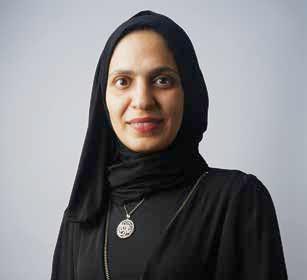
Mai Cheblak Head of Corporate Marketing, Emirates NBD
But with caution. While consumers do trust purpose-driven brands, that trust is fragile and highly dependent on how authentically, consistently, and genuinely a brand demonstrates its commitment. Consumers today are quick to recognize when a brand’s purpose is merely a marketing tool rather than a core business value. To maintain trust, brands must go beyond surface-level campaigns and consistently align their actions with their stated goals. When purpose is deeply embedded and transparent, it resonates with consumers. However, any misalignment or perceived opportunism can quickly undermine trust and damage credibility.

Khaled AlShehhi Executive Director Marketing and Communication, UAE Government Media Office
While many brands set ambitious purpose-driven goals, consumer trust often falls short due to a disconnect between promises and actions. This gap erodes trust, especially when companies adjust or scale back their commitments. Purpose-driven marketing must be backed by consistent, transparent actions that align with the values they claim to support. Without genuine, measurable change, consumer scepticism is likely to grow, making it hard for brands to gain or retain trust in their purpose-driven initiatives.
Stephen Worsley Regional Managing Director, Golin MENA
Purpose-led marketing looks good on paper but can sometimes appear confected and condescending. Purpose defines a company’s reason to exist beyond merely making money. That’s a good thing. It’s an expression of an organisation’s legal personality. It makes the company or brand more relatable to the average person. But, companies can get into hot water when they attempt stakeholder advocacy that strays too far from their purpose or appears to do so to their consumers. The infamous Bud Light-Dylan Mulvaney controversy is a case in point. Companies and brands want to do the right thing, and so they should, but there are limits to the legitimacy of even the biggest corporations when it comes to telling consumers what to think, believe and do.

Campaign Middle East speaks to several agency leaders who share open and honest opinions on the state of ethical marketing, sustainability initiatives, and ‘do-good’ CSR activities by brands and advertisers.
By Anup Oommen
We’ve entered an era of increasingly aware consumers. Customers know when they’re trading in their personal data for expectations of convenience, better experiences, and personalised touchpoints with brands.
They have made their demands clear: to offer brand loyalty in return for services that mirror their eco-conscious conscience, or to commit to being repeat customers, create user-generated content, develop positive feedback loops, and become ambassadors for brands that are ethical, honest, inclusive and not intrusive.


Speaking in an exclusive conversation with Campaign Middle East, Asmaa Quorrich, CEO, Founder, Think/Big Consulting says, “I see both sides of the spectrum. On one hand, some regulations have made it mandatory to ask customers for their consent when providing their data. This helps all of us know what we are signing up for and gives a sign of comfort. On the other hand, consumers also feel they have no choice, as ‘accept all cookies’ and ‘opt ins’ are often mandatory to browse websites. This is neither fair nor transparent.”
Asked what the alternative would be if marketing were to take a more ethical approach, Quorrich replies, “When someone is only viewing content, full cookie acceptance should not be applied. Such drastic disclosure should only be demanded in case of loyalty benefits. Also, the amounts of data that brands collect on consumers make it both super useful in terms of personalisation as well as extremely intrusive when algorithms are over-active.”
That said, one would assume that ‘brands are listening to their customers demands’; that privacy and personalisation are sacrosanct. Yet, several industry leaders have spoken to Campaign Middle East about how the realm of ‘influence and persuasion’ is murky and has miles to go before being deemed truly trustworthy or transparent.
Commenting on the state of ethical marketing in the industry, Joe Lipscombe, Partner, The Romans, says, “For much of marketing, ethics is just the latest tactic to hook idealist consumers. And in no way is that irony lost on them — the craft itself is founded on hyperbole and persuasion. Moreover, marketers communicating ethical topics often do not and cannot have full visibility on any internal wholesale changes within the company for whom they’re communicating. One moment they’re posting about International Women’s Day, the next their C-Suite is in the news for harassment and discrimination.”

“My best advice is for marketers to speak up internally and shut up externally until such a time they can communicate ethics with any kind of transparency,” Lipscombe adds.
This does not mean that there’s been no movement towards a semblance of ethical marketing or sustainability in practice. The problem, leaders say, stem from such practices often being perceived as KPIs being ticked off a checklist with negligible long-term, lasting impact.
Muhammad Ali, Executive Creative Director, Leo Burnett ME, says, “Be it topical posts, one-off partnerships or superficial collabs, a lot of brands tend to play

performative roles in their marketing efforts in order to appeal (or pander) to audiences and position themselves as good corporate citizens. That’s the easy answer. The skeptical answer.”
“But, the more meaningful answer is when we see brands putting their money where their hashtag is,” he adds.
SEVERAL LEADERS POINT TO PATAGONIA
There’s clearly a need to move the needle; to turn a buzzword into buzzing action to truly meet the needs of informed consumers.
“I believe people now want more than just a good product; they expect, and in some cases demand, brands to be transparent and authentic in everything they market, communicate and do, if they are to continue to support them.” Khaled Ismail, CEO, Toughlove Advisors said.
Ismail goes on to share examples of brands making greater efforts to align their marketing with their corporate social responsibility initiatives.
“A good example is Patagonia, which openly shares how they source their materials and the environmental impact of their products. Similarly, brands such as Dove continue to show a strong commitment to body positivity by featuring real people in their campaigns rather than models,” he explains. “What’s changed is that companies now understand that ethical marketing isn’t just about following the rules and ‘being compliant’, it’s about building trust and a strong reputation. Consumers are loyal not only to products but also to the principles and values a brand stands for.”
Looking for more such examples, we found that Omantel went beyond simply talking about communication and connectivity, and created a font for dyslexic audiences to read Arabic online. Dubai Holding echoed the UAE’s sustainable vision
by investing in innovation to reduce food waste and turn organic material to clean energy. This means dinner at our favorite hotels were kinder to our resources.
EmiratesNBD (ENBD) dedicated significant amounts of its marketing efforts towards financial literacy and fraud protection in both content and inititaives – good for the bank, great for the end customer.
Yet, the exercise of finding truly impactful campaigns feels more like fishing upstream.
“Looking for the positive side, frankly, is like actually trying to find the proverbial needle in an agro-industrial haystack,” says Ramsey Naja, Creative Partner, Das Kapital.

Naja adds, “I have recently come across one global company, a bank, which has been setting KPIs – and meeting them– on an ongoing journey towards proper ethical marketing. So, yes, if a bank can do it, there’s hope. Other than that, and since the Patagonia example – approximately three years ago – and apart from the usual and rather tiresome virtue signaling suspects, this consumer has only seen creative interpretations of frankly vacuous and unconvincing claims, that range from pleasant greenwashing to downright hypocrisy. Wait! It’s now called “reputational laundering” in PR-speak, apparently. But actual initiatives that involve real sacrifice at the expense of shareholder value? Nope. None.”
TRANSPARENT TARGETS, REGULAR REPORTS, POSITIVE PROGRESS
While ESG has moved from a ‘nice to have’ to a mandate as part of nation-building exercises across the Middle East, the same can’t be said about ethical marketing.
Naveen Chacko Mathews, General Manager, Havas Media Middle East, explains, “Ethical marketing remains significantly underdeveloped in our region. Both global and local brands have yet to fully prioritise ethical practices, leading to slow adoption. The absence of robust tools to measure the impact of ethical marketing on key KPIs further hinders progress.”

Mathews adds, “While there are some attempts at sustainability-driven marketing, such as measuring carbon footprints from media activities, these efforts remain limited and rudimentary. Implementing global ethical standards here is challenging without tailored frameworks and deeper metrics. We must build stronger recognition of the critical role ethical marketing plays in fostering long-term consumer trust. Until the region catches up, brands will miss out on the lasting loyalty that only ethical practices can secure.”
And that brings us to the key discussion: where there’s challenge, there lies an opportunity.
Sholto Douglas-Home, Chief Marcomms and Sales Officer, Expo City Dubai, says, “The cultural, behavioural and communication shifts driven by ESG have offered new opportunities

to build trust and credibility, while also intensifying MarComms’ role as an organisation’s reputational custodian. Accusations of greenwashing can inflict lasting damage on a brand’s reputation and MarComms has become a crucial protagonist in separating the positives from the pitfalls.”
It’s important for brands, advertisers, and agencies to accept that merely exaggerating or putting a ‘spin’ on their environmental efforts is not going to work with consumers anymore. The future will need a long-term approach to sustainability, with transparent targets, regular reports, published and audited data, and measurable progress.
What’s next? Campaign Middle East asked leaders what could be done to legitimately move the needle on ethical marketing, sustainability, and impactful CSR.
Das Kapital’s Naja responded in two words, “Honesty, perhaps?”
Leo Burnett ME’s Ali went a but further, explaining, “Being upfront about where you operate and the communities you invest in has never been more important to audiences and brands in the region. Thanks to social media and internet investigators, brands can’t hide behind secrecy or vague claims anymore. You either tell the truth or risk the public telling it for you.”
However, consumers have also pointed to concerns beyond fixing foundational trust and transparency to make bridge growing apprehension and break the bias against marketing and advertising.
“Beyond transparency and honesty, several other ethical concerns need priority. Data privacy is paramount, with brands responsible for collecting and using consumer data ethically, without overreach or exploitation,” Havas Media’s Mathews explains.
He adds, “Consumer vulnerability is another issue – brands should avoid targeting vulnerable groups, such as children or the economically disadvantaged, with manipulative and misleading tactics. Cultural sensitivity is another aspect that is essential: ensuring marketing content respects diverse cultures and avoids harmful stereotypes.
“THIS CONSUMER HAS ONLY SEEN CREATIVE INTERPRETATIONS OF FRANKLY VACUOUS AND UNCONVINCING CLAIMS.”
Lastly, authenticity in influencer marketing must be prioritised, ensuring transparency in paid partnerships, and aligning influencers with brand values. Addressing these concerns will foster deeper consumer trust and strengthen long-term brand loyalty.”
Toughlove Advisors’ Khaled Ismail also called for brands to address inclusivity and representation “beyond being clear and honest about their products.

Ismail explains, “With marketing shaping societal norms, it’s crucial that brands show diversity in a way that feels genuine and avoids reinforcing stereotypes. For example, brands such as Nike, featuring athletes from different backgrounds and abilities in its campaigns, show how brands lead by example.
“Another pressing issue is the ethical use of AI in marketing. Brands need to be transparent about when and how AI is being used – whether it’s in targeting ads or creating content. There’s also a risk that AI can unintentionally introduce biases, so companies must ensure that their technology is fair and equitable.”
Clearly, the time has come for AI-orientated data privacy protocols to be embedded into organisations’ internal behaviour and systems to prevent (ab)use of personal data and ensure the productivity gains Gen AI can unleash aren’t crushed by the reputational damage from a breach in consumer trust.
Responding to ethics within the use of AI in marketing, Douglas-Home adds, “Gen AI is another tricky balancing act. Brands that manage to stay abreast of ever-increasing regulations will maintain or even build consumer trust – in contrast to those who flout the rules and operate irresponsibly. Organisations must adopt clear practices to disclose wherever they are using AI or synthetic creative techniques – from watermark icons to explaining from the get-go that AI is being used in a chat function.”
All in all, what does the industry truly need in terms of ethical marketing?
Naja sums it up well, “A genuinely ethical person doesn’t boast about his or her ethics. He or she lives by them or at least does their best to mitigate the trespasses that their livelihood forces them to commit. It is one thing to claim a holierthan-thou standpoint, but quite another to be an ethical company (Patagonia, again). What it needs, to quote Elvis Presley, is ‘a little less conversation a little more action please’.”

Mashreq’s Suad Merchant talks about the meaningful impact of transforming narratives into action.
In the hallways of school, where ambitions often collide with life’s stark realities, I found myself at a pivotal crossroads, contemplating a future filled with endless possibilities. I once imagined becoming a doctor, a beacon of healing and hope. Yet, as I traversed my teenage years, the allure of the business world began to beckon, leading me to pursue a degree in Business Management. Today, as a leader in brand and communications, I reflect on how serendipitously my career path has allowed me to embrace that early dream, albeit in a different form.
Our childhood dreams often go beyond specific professions; they embody a deeper desire to make an impact. For me, it was always about inspiring hope. In the first year of my business school, an unexpected moment helped shape this thinking. One afternoon, amidst the usual college distractions, a friend invited me to volunteer at a local charity in Bombay focused on educating underprivileged children. Although I was initially reluctant, something inside me urged me to embrace the opportunity.
asking, “Would you like my answer from a plan perspective or an action perspective?
”Her insightful reply left me in awe, a testament to how bright minds think far beyond our current realities.

Upon arriving at the school, I was captivated by the modest yet vibrant atmosphere, filled with children brimming with potential. A particular encounter struck a deep chord within me, a six year old girl with bright green eyes, her hair oiled and neatly braided with red ribbons, and a hopeful smile whispered, “Didi” – a word used as respect to refer to an older sister in Hindi – “one day, I wish to be just like you.”
Her words underscored the stark disparities that shape our lives and the transformative power of education. This experience illuminated for me the critical role that education plays in bridging gaps, providing opportunities, and shaping futures. It set the stage for what I now understand to be my purpose as a brand marketer: using the power of storytelling to create change.
Education is not merely a privilege; it is a fundamental right that can uplift entire communities and transform lives. At the recent COP 28 event in the UAE, I had the opportunity to meet the 13 year old daughter of a fellow colleague. Nervously, I asked her what she would change about the climate change agenda, fearing my question might intimidate her. To my surprise, she responded with poise,
This encounter resonates with the words of Bill Gates, who emphasised the importance of collective philanthropic efforts to create real change during his session alongside world leaders at COP 28. True impact arises when we unite and invest in a common cause. We as brand leaders possess a unique ability to harness the power of storytelling and strategic investments to create meaningful change. By promoting initiatives that foster education for underprivileged youth, we can ignite hope and empower future generations. The emergence of AI tools further enhances this mission, as they have the potential to provide personalised learning experiences and access to educational resources for children who lack traditional schooling, breaking down barriers and expanding horizons. The ‘each one teaches one’ model perfectly encapsulates this philosophy, and with the reach of digital and social media, this ethos is amplified like never before.
Reflecting on the transformation in this space, it’s clear that marketing today enables companies to embrace corporate social responsibility (CSR) more genuinely. In the past, CSR was often hidden in the pages of annual reports, largely fulfilling a regulatory obligation. Marketing mediums were limited and costly. Few companies could afford expansive campaigns to showcase their CSR efforts, and there was limited direct feedback from
“IMAGINE A WORLD WHERE PURPOSE IS NOT JUST A TRENDY BUZZWORD OR AN ADD-ON BUT AN INTEGRAL PART OF DAILY OPERATIONS.”
consumers. Today, however, with digital marketing and social media, CSR efforts can be amplified cost-effectively and with immediate consumer feedback, driving a more authentic commitment to ignite and nurture conversations around education, climate change, humanitarian efforts, and much more.
As we embrace transformative storytelling in our marketing strategies, we must acknowledge the influence of our words and actions in shaping social responsibility and driving meaningful change.
In today’s interconnected world, the role of marketing extends beyond brand promotion; it serves as a catalyst for social good. By crafting narratives that resonate deeply with audiences, we can spotlight critical issues and inspire action. Storytelling is not just a marketing tool; it’s a powerful force for advancing CSR and creating a more equitable world and inspiring action.
As I take the last sip of my coffee while writing this, I glance at my news feed and am met with another heartbreaking headline: ‘School Closures in Gaza Leave a Generation Without Education’. My thoughts drift back to my volunteering days when I witnessed firsthand the transformative power of education for children whose lives had been upended by hardship.
This stark reminder emphasises the urgent need to raise awareness about the struggles faced by children caught in conflict and displacement. As brand leaders, we have a powerful platform and an even greater responsibility to address these global crises. It is no longer enough to observe from the sidelines; we must act. If we cannot end the wars, we can still be a force that helps rebuild the future for these children. The time for action is now.
In pursuing meaningful impact, we must recognise the unique potential we hold to shape a brighter future. I often reflect on how brands can unite to bring healing to the communities they serve, imagining a world where purpose is not just a trendy buzzword or an add-on but an integral part of daily operations. As brand leaders, we have the incredible power to turn this vision into reality.
As Bill Gates once said, “I believe that if you show people the problems and you show them the solutions they will be moved to act.” It’s time to harness that power for transformative change, igniting a movement that reshapes our world for the better.
By Suad Merchant, Head of Brand & Corporate Communications, Mashreq
In a highly competitive marketing landscape, it is challenging to create a fair competitive advantage for a brand when the core differentiator is limited to price or convenience. And even more so when the brand has limited budgets, shorter timelines, high overheads, and a need for high ROI.
This in turn sometimes forces poor marketing actions with exaggerated marketing claims while leaving customers feeling manipulated, which eventually results in customers wanting to stop any form of association with the brand.
A study on corporate responsibility by Aflac found that 75 per cent of consumers will take some kind of negative action if they believe a company is acting socially or environmentally irresponsible. And 73 per cent of millennials are willing to pay more for sustainable offerings.
Understanding modern consumers’ expectations for ethical issues is important to connecting with them. Today’s consumers not only value ethics but also demand to see themselves represented in the brands they support.
We are starting to see a high proportion of Gen Z consumers consider a brand’s social stance before making a purchase. Hence, it’s absolutely critical for brands to proactively incorporate ethics and diversity into their marketing decisions.
Patagonia is a great example, where the founder, in 2022, donated the entire company to a charitable trust focused on combating climate change. Patagonia also consistently allocates 1 per cent of its total sales to environmental groups.
Companies that prioritise business ethics are more likely to achieve and sustain profitability compared to their counterparts,
according to the Brandwatch Digital Marketing Trends report.
In fact, the world’s most ethical companies consistently outperform similar companies by approximately 7 per cent. Brands that incorporate these principles often tend to have highly loyal employees with greater performance than other brands.
It’s no surprise that brands such as H&M have been working with sustainability for almost 30 years. It’s part of their business idea to offer customers the best combination of fashion, quality, price, and sustainability.
As AI and automation play a growing role in marketing, marketers should ensure that their use is transparent and ethical. When choosing an AI-driven marketing activity, marketers should ensure to check for any discriminatory practices and biases arising from AI algorithms.
For example, one should ensure AIsuggested pricing strategies do not exploit vulnerable or disadvantaged individuals by having checks in place to avoid any price discrimination based on factors such as race or gender. This would mean regularly scrutinising AI tools to ensure they do not inadvertently perpetuate stereotypes or discriminatory practices.
AI systems must also be explainable in their decision-making capabilities. This is particularly challenging in marketing, where complex algorithms are often used to analyse consumer behaviour and personalise marketing efforts. But an added layer of human oversight can prevent the incorrect use of data and reduce the threat to consumer privacy protection.
HOW CAN ANY BRAND PRACTICE ETHICAL MARKETING?
Be honest: This might sound simple, yet it is very powerful in building customer trust. Try to convey your brand goals, vision, and practices to your customers. Focusing on honesty does not mean one has to avoid psychology in marketing. Marketers still have to find the right productmarket fit and continue to do the hard work of communicating the brands’ product or service value by creating campaigns that are relatable yet realistic.

Embrace inclusivity: Consider the diverse perspectives of your customers by showcasing a wider range of gender, age group, size, and shape in your communication strategies to appeal to a more diverse demographic. This will start expanding your consumer base, drive sales, and ultimately
“TODAY’S CONSUMERS NOT ONLY VALUE ETHICS BUT ALSO DEMAND TO SEE THEMSELVES IN THE BRANDS THEY SUPPORT.”
outperform brands that neglect inclusivity. But spend good enough time on market research. As long as you have research to back you up, your audience will respond positively.
Incorporate social responsibility: At the end of the day, who doesn’t want to do some good in the world? Ethical marketing can only come from real-life ethical practices. Start supporting corporate social responsibility (CSR) initiatives and communicate such efforts to consumers through marketing. By doing so, brands will not only be able to build relationships with customers but also support socially conscious organisations to grow.
In today’s world, it is almost impossible to achieve success without demonstrating brand authenticity. Hence, brands have to evolve their marketing efforts to meet the expectations of an increasingly conscious and diverse consumer base.
Alshaya Group’s Hemalatha Subramanian explains why brands need to enhance their marketing efforts to meet the expectations of an increasingly conscious and diverse consumer base.
Rather than solely focusing on bottom lines, brands that dedicate themselves to the greater good will only see growth in customer support, brand loyalty, and remarkable profits. So it’s time for some good and responsible marketing.
By Hemalatha Subramanian, Omnichannel Lead, Alshaya Group
SAUDI FOCUS
IIn Saudi Arabia, a fascinating shift is under way in consumer behaviour as the country experiences rapid development and transformation. To better understand consumer trends in Saudi Arabia, Google conducted research in partnership with Ipsos and performed an internal analysis. The findings were presented at Google's Accelerate Saudi event earlier this year.
In recent years, we’ve observed a consistent trend of more time being dedicated for leisure activities in Saudi, especially as more entertainment options are opening within the Kingdom from Riyadh Season to new sports venues, as well as large events like the Esports World Cup. This shift isn't just happening offline; it's mirrored in online behaviour.
We call this the ‘companion effect’ – how offline interests influence online browsing and viewing habits. Let's explore some examples:
Sports enthusiasts: They turn to YouTube for online tutorials, workout routines, equipment reviews, and even explanations of sport rules and terminology. Their passion for sports fuels their online exploration.
Gamers: The most popular content for gamers on YouTube includes gameplay reviews and trailers, with walkthroughs – guides to improve gameplay – also being highly sought after. Their love for gaming drives their online consumption.
Online shoppers: Even those shopping online use YouTube and Google to research. They explore new brands and products, check sizing guides, and gather inspiration. Their desire for the best shopping experience translates into active online engagement.
These examples show that people's offline passions are intrinsically linked to their online activities. This presents a unique opportunity to connect with your audience in a more meaningful and impactful way.
WALLET: BALANCING PRIORITIES IN AN INFLATIONARY ENVIRONMENT
While groceries and housing have the highest share of wallet in Saudi, discretionary spending is being affected by inflation and evolving priorities. Interestingly, categories such as entertainment and fashion see a duality. Approximately 40 per cent of those planning to increase spending in these two categories are doing so because of the expanding array of entertainment options available in Saudi. The vibrant energy in Saudi Arabia – with events such as Riyadh Season and new malls and restaurants

Google MENA’s Basel Hijazi explains Saudi's evolving consumer landscape and how AI can help.

By
back. Inflation is a top concern, driving 57 per cent of those reducing spending in entertainment and fashion.
We found that 92 per cent of survey respondents are adapting their spends due to inflation by: Hunting for sales: The most common response to inflation is actively seeking discounts and deals. Categorising spending: Consumers are distinguishing between essential and nonessential purchases. Notably, 40 per cent will wait for sales on homecare products, showcasing a savvy approach to budgeting.
Day, Singles’ Day, Black Friday, and end-of-year – in addition to traditional ones like Ramadan and Eid. These moments are now key shopping occasions across various industries.
We've been tracking the rapid growth of Saudi National Day as a major shopping event. Our research shows it's a highly anticipated occasion, with Saudi National Day-related search interest growing significantly.
However, November still holds the crown as the peak shopping season, with Singles' Day, Black Friday, and the end-of-year holidays driving substantial consumer spending. The end-of-year period also sees a surge in retail and discount-related searches.
This year's peak moments have been particularly interesting, with the emergence of new global players in the region. In 2022, global apps (companies with limited office presence in the country) accounted for 17 per cent of top shopping app downloads in Saudi Arabia, mainly led by Shein. With the arrival of Temu and Trendyol, that share jumped to 65 per cent in 2023, as found within data.ai reports.
As part of their expansion, these global players are heavily investing in key consumer moments. We see interest in search queries for these brands peaking during events such as Black Friday, Singles' Day and Ramadan.
The marketing landscape is evolving at an unprecedented pace. This is driven by rapid advancements in artificial intelligence (AI) – these five tips can help:
AI-powered marketing campaigns: Being a marketer in the age of AI means there’s no need to look that deep into the nuances of your data, AI powered marketing campaigns can cater for the nuances in consumer behaviour based on millions of signals.
Leveraging AI for insight generation: As a marketer in today’s AI era, generating insights has never been easier. With tools such as NotebookLM, you can upload research papers, documents and videos and have a conversation with your data simplifying the insight generation process. This is a tool that I’ve been using frequently.
Tailoring messaging: As consumer trends change, it’s become increasingly difficult to generalise messaging. With recent AI advancements, we are now able to deliver personalisation at scale in a cost-effective way.










Delayed gratification: Around 72 per cent of respondents save up for purchases, further emphasising the trend of mindful spending. Interestingly, locals are more likely than expats to treat themselves to on-the-spot purchases.

On the other hand, entertainment and fashion also see the highest intent to decrease spending, with 20 per cent of respondents aiming to cut


Being present at the right moment is crucial. Saudi Arabia is seeing the emergence of new peak shopping periods – such as Saudi National



Targeting peak moments: Although many plans and budgets for peak moments are set at the start of the year, consumer behaviour continues to shift. In Saudi there are several growing peak moments that offer an opportunity to be present and boost sales.
Adapting to global competition: As Saudi Arabia witnesses growth, it attracts global companies to invest and increase their marketing. Using AI tools, innovating, and clearly communicating a brand’s value proposition is more vital than ever. By understanding evolving consumer trends in Saudi and leveraging the power of AI, we can effectively connect with our audience and thrive in this dynamic market.




















event turned the spotlight on long-term brand strategy,
Close to 200 marketing leaders, including heads of brand and agency, gathered at the Sheraton Riyadh Hotel and Towers on Thursday, 17 October for the Campaign Saudi
Briefing: Media and Marketing event. This included keynotes, panel discussions, fireside chats, a time of networking, as well as high-profile meet and greets.
Conversations revolved around sports marketing investments and their effect on brands and their revenues, contextual storytelling within Saudi’s booming tourism sector, the need to understand Saudi audiences and resonate better with them, the impact of AI and human creativity on digital marketing, as well as how brand CMOs need to re-evaluate communication strategies to unlock sustainable growth.
Leaders also called for long-term strategic continuity in campaigns, and discussed ways to unlock the tools available on each platform rather than just be present on the platforms.















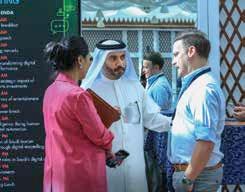












Qatar, albeit a very small market, has an internet penetration of 99 per cent and a smartphone penetration of almost 100 per cent of the total population. Social media and digital literacy in Qatar are among the highest in the world, making it one of the key media touch points to deliver marketing campaigns.
The government has also undertaken several intiatives to develop e-services, reflecting the increasing reliance on digital platforms for services. In congruence to this, the infrastructure of broadband and mobility services is very robust and further strengthens Qatar’s digital ecosystem.
With new digital trends springing up left, right and center, it is becoming more and more important for brands to consider which trend is worth jumping on or investing in and which ones to be ignored. Let’s discuss a few points below.
For any brand, it is of paramount importance to understand their target audience. While the Middle East and North Africa (MENA) region has many similarities, the audiences and what resonates with each is very different. Before deciding to jump on a trend, it is key to understand the appetite of your audience in accepting, understanding and consuming that trend. I cannot stress this enough, what may work for one audience might not work exactly the same for another.
Are you one of those companies that has a strong bureaucracy where decisions need to go through multiple layers of hierarchy? Then jumping on a trend fast is probably not
Vodafone Qatar’s Mohammed K Hussain calls on brands to be trendsetters and offers tips for those looking to jump on a trend.
going to work for you. Many a time, I have seen brands not consider the go-to-market effectiveness and thus losing out on the impact of a particular trend. So, before you decide to invest in producing content or even launch a new product to jump on a trend, always make sure you consider the timeliness of this endeavor. They do say: strike while the iron is hot.
For any trend, you need to assess if it is something that will be scalable in the future or not. What’s next for your brand after this trend? Always have a plan in place to give the trend more shelf-life, especially if as a brand you have invested a lot of time and money. Perhaps it is worth mentioning that scalability can vary from brand to brand, depending on brand or product lifecycle.
‘‘BRANDS NEED TO REALISE THAT NOT EVERY TREND IS WORTH ACTIVELY PARTICIPATING IN; SIT OUT ON SOME.”
More often than not we see brands jumping on a trend because it looked cool on TikTok or because their competitor jumped on it, or simply because their agency suggested it would make them “viral.” However, be very sure of how this trend will affect your brand perception. While doing so, it is important to also stay true to the cause - will it affect your topline? If you find yourself answering yes – it does improve my brand’s perception in the market and yes, it helps improve the topline – then, by all means, you jump on that trend. It all boils down to understanding what is your end goal.
While some trends look ‘cool’ on paper when they get presented, a lot of times they fall short when it comes to driving the consumer to take a desired action. This is because we tend to at times overlook the potential of humanising our brands. Any trend that helps humanise your brand and gets your audience to relate to it more is definitely a trend you should be jumping on. Relatability hence, is another important point to be considered.
Trends are now faster-paced than they used to be. We are living in a world that is full of popcorn audiences with a plethora of options to consume content and information. Hence, it is becoming increasingly important to jump on trends in a timely manner to reap the most benefit. Brands also need to realise that not every trend is worth actively participating in; sit out on some.
So, consider these focal points before jumping on trends:
Resonance with your audience
Timelines and go-to-market process, or rather ease of go-to-market
Scalability and longevity
Impact on brand perception, commercial goals and other success metrics
Relatability in terms of humanising the brand or product
An ideal scenario for any brand is when they are able to influence the trend in their market. So, be a trendsetter rather than a follower. I believe that is the biggest win for any brand.
By Mohammed K Hussain, Brand Media Strategy at Vodafone Qatar

Jumeirah’s Michael Grieve and Barbara LangLenton speak to Campaign Middle East about the tangible effects of sustainability on brand.
By Shantelle Nagarajan
This June, Jumeirah Al Naseem, a property under hospitality brand Jumeirah, launched a turtlethemed stay experience to mark 20 years of its Dubai Turtle Rehabilitation Project (DTRP) – the ‘cornerstone’ of its broader sustainable brand strategy.
Campaign Middle East discusses sustainability in practice, as well as the tangible effect on the brand, with Michael Grieve, Jumeirah’s Chief Brand Officer and the driving force behind DTRP Barbara Lang-Lenton.
“What began as a focused conservation initiative has evolved into a key part of our brand identity,” Grieve says. He goes on to explain how the experience has shaped Jumeirah’s sustainability strategy. “It proves how luxury and environmental responsibility can coexist.”
Visitors embark on the curated journey through the turtle rehabilitation facilities, beginning with a behind-the-scenes glimpse of the Aquarium at Jumeirah’s Burj Al Arab. It is here that rescued turtles take their first steps toward recovery.
The tour continues with a visit to the Turtle Rehabilitation Sanctuary in Jumeirah Al Naseem, where five outdoor lagoons provide a temporary home for the turtles as they regain strength before their return to the wild. Guests are invited to participate in turtle feeding, offering a hands-on connection to the rehabilitation process.
Barbara Lang-Lenton, Director of Aquarium at Jumeirah Burj Al Arab, explains that the guest experience was designed due to the growing trend of “coastal and maritime tourism,” alongside a discovered “growing consciousness

around responsible travel,” leading to more efforts from the brand to protect marine ecosystems.
Government-backed community initiative
This initiative marries Jumeirah’s long-standing brand commitment to marine conservation with the growing demand from consumers for brands to show, rather than merely talk about their sustainability initiatives. Taking this a step further, Jumeirah enables its guests to be an active part of the initiative, thus experiencing brand values and promoting positive brand sentiment. From turtleinspired amenities to behind-the-scenes access to turtles – old, young, and injured – this exclusive experience combines luxury vacationing with ocean conservation. It also creates avenues for user-generated content and organic brand ambassadors. That said, the DTRP is not just a one-off brand initiative. It is part of a larger government-backed project launched in 2004, in collaboration with Dubai’s Wildlife Protection Office. The initiative is also supported by Dubai’s Royal Family veterinary facilities and makes use of laboratory work provided by the Central Veterinary Research Laboratory (CVRL).



“TALES OF RESCUED TURTLES CREATE EMOTIONAL RESONANCE, ENHANCES LOYALTY TOWARDS OUR BRAND.”

Since its inception, the DTRP has released over 2,150 rehabilitated turtles, with 86 of them monitored by satellite. Some of these turtles have been tracked travelling as far as Thailand, according to Jumeirah.
“Under the ambassadorship of Sheikh Fahim Al Qasimi, also locally known as the Turtle Sheikh, DTRP not only nurtures sick and injured turtles but also engages the public through educational programmes and community involvement,” says Lang-Lenton.
Jumeirah goes beyond the limits of guest-experiences to include the larger community to engage with turtle rehabilitation. Lang-Lenton explains that the brand’s hotline allows the community to report injured turtles, showing its interest in facilitating the wider public’s commitment to turtle conservation.
“The DTRP also hosts school trips with over 1,500 children annually to teach them the importance of ocean conservation from a young age,” she says.
Branded experience at several touchpoints Community engagements and a constant reminder about the cause are integrated into several guest experiences at Jumeirah Al Naseem.
The two-night minimum stay includes access to non-motorised water sports, an ocean-themed afternoon high tea, unlimited access to the Wild Wadi Waterpark™ and access to a map link that enables guests to track turtles that have been released, which Lang-Lenton says aims to “further enhance their connection to this important cause.”
Although Jumeirah’s signature service of highly personalised luxury comes with the package, the brand experience also ensures that “educational elements are paired with unique experiences,” Lang-Lenton explains, referring to the “four-hands afternoon tea concept, which features culinary creations that highlight sustainably sourced local ingredients.”
The ‘uninterrupted’ thematic experience also includes the high tea “presented on an ocean-inspired stand decorated with repurposed marble and turtle and coral theming, creating an experience that is both delicious and inspirational,” she adds.
Grieve says, “The compelling storytelling around DTRP – including tales of rescued turtles and ongoing marine protection efforts – creates an emotional resonance that enhances loyalty towards our brand. This has inspired us to adopt a more integrated approach to sustainability across our properties, making the preservation of ecosystems a natural extension of the Jumeirah experience.”
This narrative of turtle rehabilitation as a consistent theme throughout the Jumeirah Al Naseem Turtle Stay Experience aims to “embody the deeprooted commitment of DTRP to marine conservation and environmental stewardship,” says Lang-Lenton. Jumeirah’s consistent brand experience makes it synonymous with the ‘turtle rehabilitation experience,’ thus ingraining the principle of sustainability into the essence of the brand while ensuring an ‘unforgettable stay’.
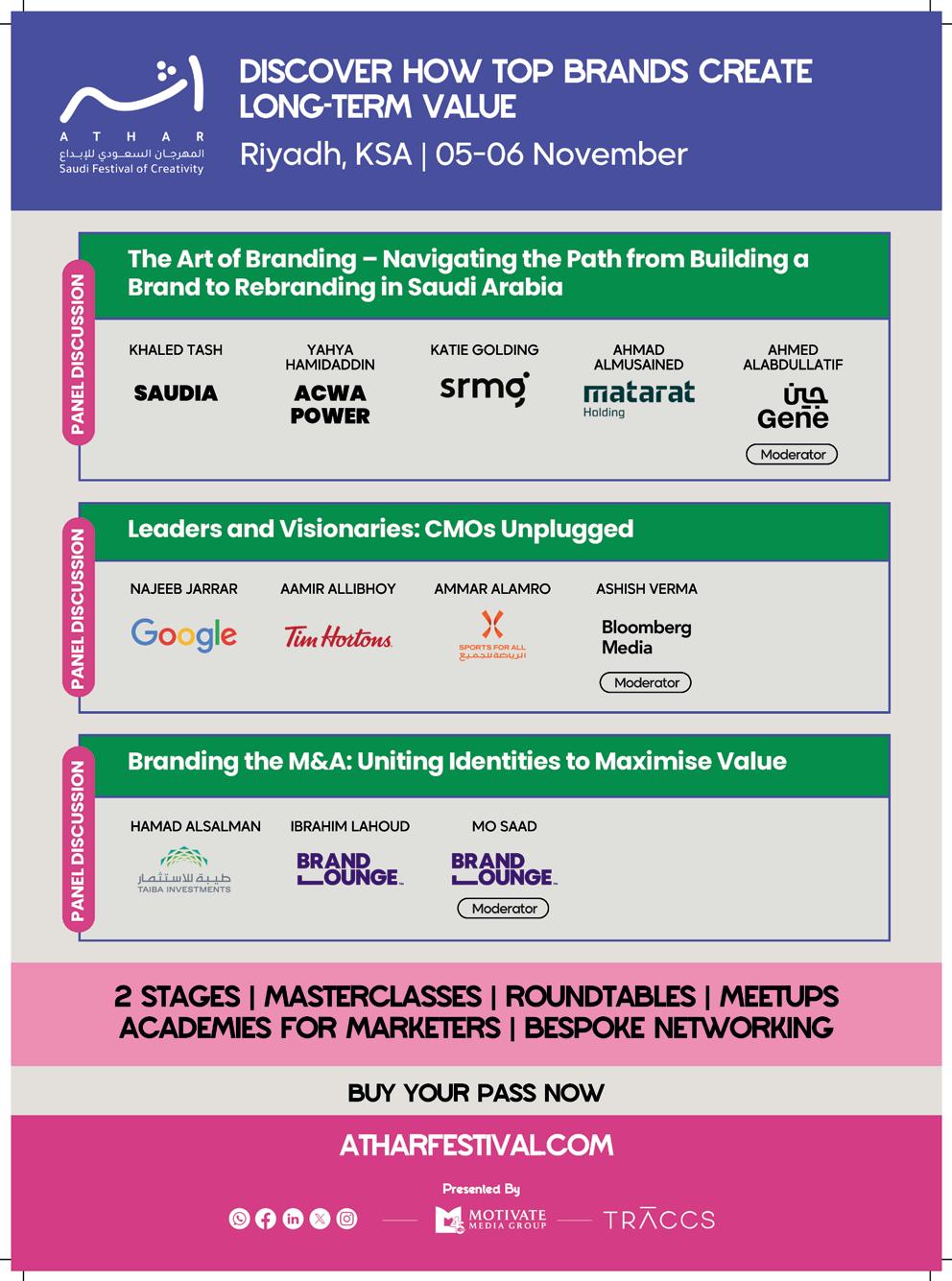
From CSR to sustainability-focused initiatives, here are some brands that made waves with campaigns that went beyond profit.


Creative and Client: Aramex
Production: LittleBig Productions
The campaign depicted a parcel that is being sent by a Palestinian citizen living abroad to his family back home in Gaza. The parcel is shown to be held back in a storage room midway through its journey, until either a ceasefire or peace agreement is in place, or the borders open and the parcels can be delivered to Gaza. The film is directed at people from all over the world who wish for peace. It ends with a call to action to send a message of peace via a website.

Client: EBM
Creative: Impact BBDO and BBDO Pakistan
Production: Seeme
Media: Starcom
PR: Syntax
On Pakistan’s Independence Day, EBM played an incomplete national anthem on air, highlighting how the verses of the anthem could not be read by a child out of school.
The film put together clips of children attempting to read out verses of the anthem. Children in school read the verses with ease while unschooled children on the streets could not, thus rendering the national anthem incomplete.

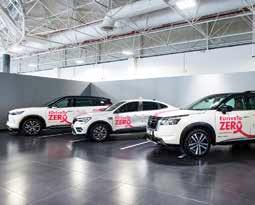



Client: Jood NGO
Creative: VML Morocco (previously Wunderman Thompson Morocco)
Production: The Cell Film
When an earthquake hit the Marrakech Al Haouz region in Morocco, Jood stepped up to offer victims shelter by using OOH billboards.
The initiative saw the transformation of hundreds of 4×3 outdoor billboards into robust, waterproof, and thermal tents, offering temporary shelter to the affected population of these villages.
The NGO invited brands, companies, and individuals to contribute to the cause. Clients, media agencies and local printers also supported the campaign by offering billboards, making donations and dismantling billboards.

#DRIVETOZERO
Client: Arabian Automobiles Company Agencies: Comco MEA and Cicero & Bernay
A breast cancer awareness campaign, #DriveToZero was designed to encourage early detection and raise awareness through targeted activities including screenings and health checks. It was supported by strategic partnerships and multiplatform engagement.

Client: Sobha Realty
Creative: AKQA
Production: Bullion Productions
The CSR campaign highlighted the need to ‘lay the foundations’ for female empowerment, break down gender barriers and promote shared values of inclusion, equality and social responsibility. The campaign aimed to offer a glimpse into the ambitions of the next generation of young women, illustrating how they can be empowered through opportunity and accessibility.









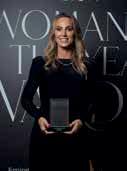


Publicis Groupe MENAT’s Tahaab Rais describes why the problem is ‘the villain’ and how getting it ‘to confess’ can create the impact and value that our briefs often lack.

Ididn’t want this month’s article to be yet another article for you, as readers. I wanted it to be a selfintrospective workshop you could engage in, as you sit and read this issue of Campaign Middle East. And it’s for everyone. Account management. Strategy. Creative. Everyone. Cool? Let’s do it!
Let’s start with a provocation
We don’t create enough impactful work in the real world on our real briefs, because we don’t solve enough real problems. And I don’t mean the social causes we create ideas for. We don’t solve enough real problems because we don’t dig enough into the problem beneath the problems we are given. We are not great at introspectively permeating into the client problems given to us in clients briefs to identify real human problems that we need to know, so we can find real solutions that are best suited to alleviate those problems.
I’ve often seen agency teams flirt around with the problem. But often, we don’t get to know the problem deeply enough to get to “the naked problem”. And it’s not because we are not capable enough. Heck, we have so many smart and
intelligent people in our industry! It’s because we don’t invest the time and the effort it needs.
Now, as promised, this is going to be a self-introspective workshop. So, here’s how I dig into problems and how I also train our talents and other talents whom I mentor and speak to. Let’s get those pencils and pens out, folks.
Think of your problem as “the villain” Firstly, why “the villain”? Because strong villains endure. They make us root more for the heroes. They make us cherish the heroes. You know, we loved The Avengers and rooted for them, because Thanos was a strong villain. Batman was stronger because of the Joker. We cheered for Luke Skywalker, because Darth Vader was a strong villain. All Potterheads believed in Harry Potter, because Voldemort was a strong villain.
Secondly, because villains have a reason for existing. Darth Vader. Voldemort. Thanos. The Joker. And it’s this “reason for existing”, that in the world of marketing, manifests into the real human problem we need to identify and then, solve for. And understanding this “reason for existing” necessitates getting the problem to confess
its truth. Imagine your problem - the villain - to be sitting on a chair in front of you. Now, imagine you’re an interrogator. You must interrogate the problem.
Use the “Why” technique
Ask Why. A lot. Why? (ha!) Because it gets you to the “naked problem”. Here’s a case study on problem identification – not from our field. The Lincoln Memorial. We’ve all heard of it or seen it. There was a time it began to deteriorate. Client problem! Instead of jumping on that as THE problem, they dug deep to find the “naked problem”.
Why is the memorial deteriorating faster? Because it gets washed more often. Why does it get washed more often? Because it has more bird droppings. Why does it have more bird droppings? Because more birds tend to be attracted to it. Why are more birds attracted to it? Because it has more insects.
Why does it have more insects? Because they are attracted by the lights that turn on every evening.
Naked problem identified. So, they turned the lights on later and got an immediate 85% decrease in bird droppings.
Now, workshop mode on
Your client, “Gotham City”, comes to you with a problem: “The Joker is a new villain who is terrorising Gotham City.” What’s your naked problem? Try this.
Why? Because The Joker wants to destabilise Gotham City.
Why? Because he loves anarchy and chaos. Why? Because he desires attention. Why? Because feels alone and needs someone.
A confession.
Solution: The Batman. A symbol of order and justice. The one who gives the Joker a worthy opponent that gets The Joker and beats him. Remember Heath Ledger’s “you complete me”? ;)
Next, do you remember Channel 4’s iconic Paralympics film and campaign, titled “Meet the Superheroes”. The very first one of the series? Yeah? It was epic! If not, do YouTube it. The client’s problem was: “The paralympic games have low viewership. We need to increase viewership.”
Why? Paralympic games have low viewership. Why? Because they have low fanfare. Why? Because it’s not enjoyable to watch people with disabilities compete for medal. Why? Because they are seen as pity parties.
Problems that confess
So, there is a problem in creativity because we don’t spend enough time and effort on the problem when it comes to our creativity.
Think of it as “the villain”. Get it to confess its truth. And we’ll start to create work that does build a real connection.
By Tahaab Rais, Chief Strategy Officer, Publicis Groupe MENAT

After years of being inundated by digital-only campaigns, brands are rediscovering the power of physical events and experiences. Consumers are craving face-to-face interactions, and experiential activations o er just that, deepening connections while sparking social media buzz as attendees eagerly share their experiences. As virtual and augmented reality become more mainstream, companies are blending these innovations with real-world experiences, creating
After years of being inundated by digital-only campaigns, brands are rediscovering power events and experiences. are craving face-to-face interactions, and experiential offer just that, deepening connections while sparking media buzz as attendees share their experiences. As and augmented reality become more companies are blending these innovations with real-world experiences, creating immersive, unforgettable campaigns.
74%
Consumers in the UAE are more likely to purchase after attending branded events.
Consumers in the UAE are more likely to purchase after attending branded events.
Projected growth rate for the global VR market from 2020 to 2027 21.6%
Projected growth rate for the global VR market from 2020 to 2027 21.6%

Amazon’s new venture, “The Glitch,” brings interactive brand worlds to Fortnite through the company’s streaming platform Twitch. Designed as an "integrated, interactive galaxy," the initiative targets gamers with immersive ad experiences, seamlessly blending play with promotion, creating lasting brand connections.
Amazon’s new venture, “The Glitch,” brings interactive brand worlds to Fortnite through the company’s streaming platform Twitch. Designed as an "integrated, interactive galaxy," the initiative targets gamers with immersive ad experiences, seamlessly blending play with promotion, creating lasting brand connections.
immersive, unforgettable campaigns. This shift back to experiential advertising isn't just a trend — it’s a response to rising consumer demand for more authentic communication from brands, rather than banal, promo pieces that don't resonate with the audiences. Now is the time for brands to strike while the iron is hot, integrating these innovative avenues to ensure their message is engaging, impactful, and unforgettable. Sources:
This shift back to experiential advertising isn't just a trend — it’s a response to rising consumer demand for more authentic communication from brands, rather than banal, promo pieces that don't resonate with the audiences. Now is the time for brands to strike while the iron is hot, integrating these innovative avenues to ensure their message is engaging, impactful, and unforgettable.
Marketers missing opportunities by not integrating experiential marketing 72%
Marketers missing opportunities by not integrating experiential marketing
Expected global net worth of experiential marketing $50.7 billion
$50.7 billion
Expected global net worth of experiential marketing


Honda’s new campaign in partnership with Netflix, featuring John Cena’s narration, celebrates F 1 legend Ayrton Senna using a reverse poem ad format that transforms setbacks into triumphs. Spanning social media, TV, and Netflix’s ad-supported tier, the campaign ties into Netflix’s upcoming Senna series. With iconic drivers like Max Verstappen and an F 1 Las Vegas Takeover, Honda’s integrated marketing expertly connects its racing legacy with today’s motorsport culture.
Honda’s new campaign in partnership with Netflix, featuring John Cena’s narration, celebrates F 1 legend Ayrton Senna using a reverse poem ad format that transforms setbacks into triumphs. Spanning social media, TV, and Netflix’s ad-supported tier, the campaign ties into Netflix’s upcoming Senna series. With iconic drivers like Max Verstappen and an F 1 Las Vegas Takeover, Honda’s integrated marketing expertly connects its racing legacy with today’s motorsport culture.
Heinz UK recently faced backlash over two pasta sauce ads featuring people of colour, with criticisms of perpetuating racial stereotypes. Both ads have since been pulled and a public apology was issued by Heinz over the displays. The public incident highlights the ever-present need for brands to exercise greater oversight and mindfulness in cultural representation, ensuring campaigns accurately reflect diverse audiences without resorting to harmful clichés.
Heinz UK recently faced backlash over two pasta sauce ads featuring people of colour, with criticisms of perpetuating racial stereotypes. Both ads have since been pulled and a public apology was issued by Heinz over the displays. The public incident highlights the ever-present need for brands to exercise greater oversight and mindfulness in cultural representation, ensuring campaigns accurately reflect diverse audiences without resorting to harmful clichés.




This month’s social media updates focus on simplifying ad management with increased AI integration and leveraging partnerships for cross-platform synergy. Here are the key highlights:

The platform updated its Marketing API, giving third-party apps the same functionality to create Instagram Reminder Ads as Meta Ads Manager.
Enables in-app ad scheduling
Advertisers can now schedule ads directly within the app, removing the need to switch platforms or rely on external tools for scheduling.
Collaborates with Spotify
Meta and Spotify are reportedly working together on a new feature that will allow users to continuously share the music they are listening to through Instagram's Notes.
Introduces third-party chat alerts It plans to integrate third-party chats into WhatsApp and Messenger, enabling users to merge or separate chats and receive notifications for compatible app links.


Comes to the big screen
X's TV app is in limited beta on select smart TVs, including Google TV and some LG models, bringing a curated feed of tweets, images, and videos to larger screens.
Updates the block button
Musk announced that the block function will restrict accounts from engaging with users while still allowing them to view public posts moving forward.
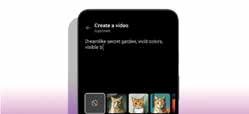
Further integrates AI into its features
The platform introduced new tools for creators at its 'Made on YouTube' event, including the integration of Google DeepMind's AI video generation model, Veo, into Shorts.
Adds "Website Visits" goal
YouTube introduced a new "Website Visits" goal for paid promotions, enabling creators to drive traffic to their websites through YouTube ads.
Rolls out "Share Quote"
LinkedIn revamped quote sharing from newsletters and articles, allowing users to highlight text and click "Share Quote" to post the quote with a link to the source.
Announces "Audience Penetration"
Audience Penetration measures the percentage of the target audience reached by ads, helping advertisers determine if their campaign is effective or needs adjustments.
Works on a collab feature It is testing a feature that enables creators to invite collaborators for their videos, allowing them to team up for duets, stitches, or entirely new videos.
Introduces an undo feature
Users can now delete and re-edit their videos within 24 hours of posting, a game-changer for those who post too soon or notice mistakes after publishing.











Executive Creative Director,
M&C Saatchi
RTA (1):


I really like the idea that we’re celebrating the Dubai Metro’s ability to enable, empower and connect. Not just the city, but residents who make a difference. I just wish the execution didn’t rely on objectifying people of determination as inspiring heroes, to a melodramatic piano tune. This might have worked better if they leaned into the amazing things the hero achieved, instead of glazing over it. (Shoutout to the cute stamps.)
GRANDIOSE (2):
As a proud doggy dad, I find the insight and the idea brilliant. More power to dogs. I’m kind of turning up my nose at the execution, though. It’s so subtle and hidden I’m not sure I’d even notice it while out for walks with Pebbles (shameless plug, sorry). And that’s important because dogs haven’t learned how to buy their own food yet. Would the average consumer realise that they’re supposed to bow down and scan the barely visible QR code? The film smells a little gimmicky because of this.
CIB EGYPT (3):
Such a smart and funny way to visualise the anxious voices in our heads. The film perfectly captures the schizophrenia-inducing whirlwind of entrepreneurship without taking itself too seriously. It’s one of those cases where the strategic insight and creative solution flow seamlessly to sell a product in a relevant, relatable way. Good casting and art direction. We could all do without the cheesy ad-like music though.
SOBHA REALTY (4):
Another ‘feel-good’ corporate manifesto for a cause … OK. I get that clients love these things and it’s an amazing initiative. But as creatives, it’s on us to find fresh ways to make these engaging or at least believable. I struggled to connect with the sanitised narration and heavy-handed acting, which is a shame.
RIYADH SEASON (5):
I’m absolutely not the target audience, and yet feel like all my dopamine receptors have been hit. Yes, these guys obviously had a humongous budget. And Guy Ritchie. But the idea is smashing, and the resulting execution is a knockout. It’s giving me art, entertainment, visceral emotion, and it makes me want to go and watch these guys beat the total snot out of each other to the world’s cheesiest karaoke tune. DA-DA-DAAAA!
Manager - CRM & Digital Channels, Motors Division, Galadari
RTA (1):


What’s particularly insightful about this narrative is how it sheds light on the socio-economic dynamics at play. The metro connects vast sections of the city, bridging gaps between affluent neighborhoods and labour camps on the outskirts. This connectivity fosters a greater sense of community, allowing people from various backgrounds to intersect, share experiences and engage with one another. It captures these interactions beautifully, illustrating how the metaphorical walls of division are gradually brought down by the simple act of commuting together.
GRANDIOSE (2):
I think this campaign has been intricately designed to translate the idea of ‘likeable and lickable’ into a tangible experience for dogs. The innovative, interactive elements help to facilitate a direct engagement with the furry target audience of the campaign. Dogs are naturally curious, and by appealing to this trait, Tuesday has effectively created a bridge between the product and its intended audience.
CIB EGYPT (3):
The cinematography and production design here play a crucial role in bringing Mr. Magdy’s world to life. The muted colour palette during his moments of stress starkly contrasts with the vibrant hues that emerge when he discovers the benefits of the CIB Visa credit card. This shift effectively mirrors his emotional journey and kept me engaged.
SOBHA REALTY (4):
One of the most inspiring aspects highlighted throughout the film is the Sobha Academy. I loved how the Academy’s role was depicted in fostering academic excellence. The emphasis of this through the personal stories of young girls whose lives have drastically changed due to the opportunities provided was an extremely emotional, heartfelt touch. A vital component of a holistic approach to empowerment.
RIYADH SEASON (5):
What stands out most in ‘Touching Hands’ is its dual purpose: while it aims to promote the Riyadh Season Card, it also seeks to establish a narrative that celebrates the spirit of boxing. The heart-pounding sequences complemented by an undercurrent of personal stories are a smart reflection of the struggle, discipline, and camaraderie inherent in the sport. The intense blend of action and emotion takes away any spectacle of superficiality and connects with audiences on a deeper level.
RTA
Title: Real Lives, Real Journeys Agency: Livingroom Dubai Production House: Boomtown Productions
CIB Egypt
Title: VISA CIB Agency: Leo Burnett Production house: Everyone
Sobha Realty
Title: The Foundation Agency: AKQA Production house: Bullion Productions
Riyadh Season Title: Touching Hands Agency: Big Time Creative Shop Production house: Reset UK, Creators Inc.
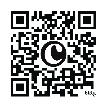
NOV 2024
CAMPAIGN BREAKFAST BRIEFING (DUBAI, UAE) Out of Home 2025
DEC 2024
CAMPAIGN AGENCY OF THE YEAR MIDDLE EAST AWARDS (DUBAI, UAE)
APR 2025
CAMPAIGN BREAKFAST BRIEFING (DUBAI, UAE) Marketing Strategies
MAY 2025
CAMPAIGN SAUDI BRIEFING (RIYADH, KSA) Talent & Technology
FEB 2025
CAMPAIGN BREAKFAST BRIEFING (DUBAI, UAE) Ramadan & The Year Ahead

Ford Motor Company has appointed ANDREW GREGORY as Marketing Director, Ford Middle East. In his new role, Gregory will lead the strategic direction and growth of the Ford and Lincoln brands across the Middle Eastern market. He will focus on delivering Ford’s long-term objectives in the region, which include innovation, performance and customer relationships.
Rotana Hotels has appointed LARISA USKAR as its Corporate Director of Brand Marketing. Uskar brings along more than a decade of extensive experience across global hotel brands such as Jumeirah, Fairmont, Raffles Hotels, Accor and IHG. Uskar will be tasked with overseeing a comprehensive brand uplift and the development of an innovative marketing strategy at both a corporate and property level.


continents. Under his leadership, CAFU aims to elevate customer experience by integrating advanced technologies.

Serviceplan Arabia has appointed HICHAM SOUBRA as Head of Production. Soubra previously led production and creative services at Horizon FCB. According to the agency, Soubra’s appointment will strengthen its capabilities as it continues its expansion across the Middle East. He will be particularly focused on the agency’s operations in KSA.
M&C Saatchi Middle East has revealed two significant additions to its creative leadership team.

On-demand car services platform CAFU has chosen AMIT RAWAL as its new Chief Product and AI Officer. A former Stanford Fellow and AI professor at Stanford University, Rawal brings more than 20 years of experience in leading digital commerce businesses and developing AI-driven products and technology platforms across four
CRISTIANO TONNARELLI has joined the agency as Executive Creative Director. He has more than 20 years of experience as a creative and aims to leverage his integrated vision and creative expertise to advance the agency’s mission to forge meaningful connections between brands and culture.

The agency has also promoted MUNIB HAMZA to the role of Executive Creative Director. In his new role, Hamza said, he looks forward to pushing creative boundaries and delivering impactful work for the agency’s clients.

DAVID KINGSMILLMOORE joins Edelman as Managing Director, UAE, bringing more than 24 years of strategic communications experience, with an extensive career that spans leadership roles across the Gulf and Europe. He will offer strategic counsel and act as a regional crisis advisor, serving clients on crises across a range of issues and reputational matters.

In a further addition to the leadership bench, MARTA GUASCH has been appointed as Regional Head of Technology to develop and lead the Edelman Technology practice in the Middle East. Guasch brings 15 years of public relations and communications experience within the technology sector and the Middle East region.
FP7 McCann KSA has appointed NOURHAN MOAAZ as Creative Director, a move aimed at strengthening the agency’s leadership and creative capabilities in the Saudi market. With more than 14 years of experience within the FP7 McCann network, Moaaz brings extensive industry expertise to her new role, where she will oversee creative projects across a diverse range of clients in both private and government sectors. She has worked with top brands in the region and has numerous industry awards under her belt.


Over the past month, The Spin spent some time travelling and came across a couple of food-related gaffes that got us guffawing.
The first one at the airport was a bit ‘nuts’. The overcautious hosts left no stone unturned to warn those allergic to nuts. Clearly the term ‘almond-stuffed’ in the first line didn’t cut it, so the hosts stuffed nuts within parentheses into the tiny placard. We wonder: would translation into the local language have been a better use of the space on the second line? In a nutshell, it

dips into the dish. To say this is a bit unrealistic would be an understatement. What was probably meant to be a shot at exaggerated humour could have taken the train a stop a too far.
Speaking of hospitals, The Spin received a cracking submission from New Zealand. The sign read, “Stop. Please do not enter our hospital if you’re feeling unwell. Thank you for helping us to keep our people safe.” Possibly time to rethink the purpose of a hospital? While the move toward proactive wellness checkups and preventative healthcare is good,


seemed nuts to mention (Nuts) as such, but it sure shelled out a laugh. On the journey home from the airport, we came across another fun one on the Dubai Metro, which aimed to convey the buttery and creamy goodness of an Indian lentil dish called Daal Makhani. While the copy clearly targets a specific audience, stating, “Daal makhani so rich, nothing else matters,” the creative left us gaping open-mouthed, much like the patient on the dental chair. The creative shows the patient abandoned in the corner of a hospital room with mouth gags on, while the dentist
perhaps this is taking it a bit too far? Makes us wonder whether the doctors at this hospital – if there are any – still abide by the Hippocratic oath to “do by my patients as I would be done by; shall obtain consultation whenever I or they desire”.
Another submission sent to The Spin showed communication gone completely awry. Here’s the supposed series of unfortunate events: Customers wanting to visit a particular store usually attempted pushing the door on the right, which unfortunately was jammed. When the door refused to budge, they assumed


the shop was closed and moved on. The first notice – placed on the same jammed door – clarified, “Come in, we’re open”, which didn’t solve the problem as people reading the sign still pushed on the same door. Instead of switching the sign to the other door, the shopkeepers placed a second sign, “Please use other door”. Customers in a hurry read the first line “please use” and skipped over the second and third line “other door” and continued pushing on the same jammed door. In a final attempt to fix the problem, the store attendants put up a third sign stating “I am the other door”. Here’s the clincher, that didn’t work either, as customers attempting to open the “other door” landed up pushing, instead of pulling the correct door. Now, they’re considering adding a final sign saying “Pull”. Finally, to close out The Spin for the month, a creative at a creative agency sent us the near-perfect bathroom wall scrawl.



The Billboard Arabia Music Awards is coming to the region
Join the first ever Billboard Arabia Music Awards, honoring artists and stars with award categories including Top Artist, Female Artist, Male Artist, and the year’s hottest songs.







HEADLINE SPONSOR

SPONSORS















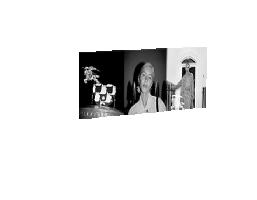







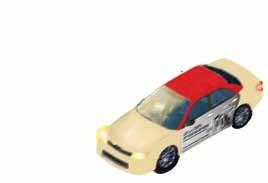







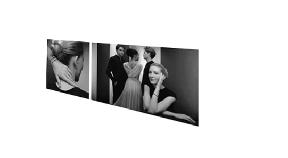










Visible. Measurable. Targeted. Impactful. Effective. These words have come up repetitively in conversations that Campaign Middle East has had with several brands, specialist creative and digital agencies, and vendors, as well as media owners, media buyers and media planners within the out-of-home (OOH) space.
OOH remains the unsung hero, claiming a sustained spot within brands’ marketing mix, despite being categorised as ‘traditional advertising’. Several studies point to the full-funnel impact of OOH advertising – whether it’s static billboards, posters, wraps, hoardings or their digital cousins, DOOH.
This form of advertising has not only proven to catch the attention of consumers – which has become increasingly hard in our day and age – but has also shown demonstrable results in brand consideration, purchase intent and conversions, driving sales and revenue across all audience tiers from the niche luxury segment to mass appeal.
Then there’s the conversation about trust. On one hand, consumers have stated that they trust brands that advertise on OOH and find them far less intrusive than those that advertise on TV, radio and digital media. On the other hand, brands also seem to be leaning more into OOH in an era defined by data-driven decisions and transparency in measurement, when privacy concerns are a non-issue and ad fraud is infinitesimal compared with digital advertising.
That said, there’s definitely room for improvement within the industry. Leaders have sounded concerns around bureaucratic delays that plague the current approval processes. These delays not only stifle creative impact, slow down campaign execution and affect brand perception, but also are detrimental to the success of potentially impactful, large-scale campaigns.
In the current regional OOH ecosystem, accruing the true benefits of programmatic OOH to optimise campaigns with real-time tracking, targeting and optimisation of campaigns remains a pipe dream.
Sustainability often remains the quiet, yet key member of the OOH WhatsApp group, which occasionally shares themes such as solar-powered billboards or biodegradable posters, and points to the benefits of new technologies.
Speaking to Campaign Middle East, some leaders have vented about challenges that arise from siloes within the industry, calling for more open and honest conversations between stakeholders built on the foundations of stronger relationships and trusted partnerships. Others have called for a greater focus on quality over quantity of content to reduce the visual clutter across the region.
Another major trend within OOH – which is likely to continue for the foreseeable future – is the consolidation with the industry. Acquisitions are likely to become the norm as investors see value in the growth of OOH, which will have a domino effect on decluttering, quality, and flexibility in what is being deemed a supply-driven market in the Middle East.
Looking to the future, industry stakeholders must reach a semblance of consensus to move collectively toward accelerated knowledge-sharing, better accountability standards, leveraging technology and the right audience analysis tools, and more sustainable digital advertising, while addressing the skills gaps within the region’s human capital.
Above all – and tying all conversations together – there’s one common thread: the commitment (or the intent) to champion ad effectiveness.







Motivate Media Group
Head Office: 34th Floor, Media One Tower, Dubai Media City, Dubai, UAE. Tel: +971 4 427 3000, Fax: +971 4 428 2266. Email: motivate@motivate.ae Dubai Media City: SD 2-94, 2nd Floor, Building 2, Dubai, UAE. Tel: +971 4 390 3550, Fax: +971 4 390 4845 Abu Dhabi: Motivate Advertising, Marketing & Publishing, PO Box 43072, Abu Dhabi, UAE. Tel: +971 2 677 2005, Fax: +97126573401, Email: motivate-adh@motivate.ae Saudi Arabia: Regus Offices No. 455 - 456, 4th Floor, Hamad Tower, King Fahad Road, Al Olaya, Riyadh, KSA. Tel: +966 11 834 3595 / +966 11 834 3596. Email: motivate@motivate.ae
London: Motivate Publishing Ltd, Acre House, 11/15 William Road, London NW1 3ER. Email: motivateuk@motivate.ae www.motivatemedia.com
EDITORIAL: Motivate Media Group Editor-in-Chief Obaid Humaid Al Tayer | Managing Partner and Group Editor Ian Fairservice | Campaign Middle East Editor Anup Oommen | Reporter Ishwari Khatu | Junior Reporter Shantelle Nagarajan
DESIGN: Senior Designer Thokchom Remy
ADVERTISING ENQUIRIES: Chief Commercial Officer Anthony Milne | Publisher Nadeem Ahmed Quraishi (nadeem@motivate.ae) Sales Manager Tarun Gangwani (tarun.gangwani@motivate.ae)
PRODUCTION: General Manager S. Sunil Kumar | Production Manager Binu Purandaran | Production Supervisor Venita Pinto
HAYMARKET MEDIA GROUP: Chairman Kevin Costello | Managing Director Jane Macken
of Campaign , which is the copyright of Haymarket.
opinions expressed within this magazine are not necessarily those of Haymarket Magazines Limited or those of its contributors.







Innovation and investment are necessary to be a leader in today’s media industry, writes Multiply Group’s Jawad Hassan.
Over the past year, Multiply Group has made substantial progress in the media sector as a result of its bullish growth strategy. Its objective is clear: it seeks to create an integrated media enterprise that offers best-in-class services and innovative solutions.
To do this, Multiply Group has been merging traditional and digital media, combining the best of both to evolve into a multi-brand powerhouse. This, it believes will enable Multiply to remain adaptable and ahead of industry trends in an ever-changing market.
“Multiply Group is pioneering a hybrid approach that combines the flexibility of digital advertising with the reach of OOH.”
By tapping into both traditional and digital media opportunities, the Group is continuing to push innovation within the industry. To support this growth, Multiply has launched the Innovation Hub, fostering creativity across its portfolio companies and bolstering its leadership in the media space. As part of this vision, the Group integrates advanced AI technologies and data-driven strategies, merging traditional OOH formats with cutting-edge digital solutions to create
The spearhead of Multiply Group’s strategy is the consolidation of leading Out-of-Home (OOH) media providers across the UAE. Currently, the Group manages an extensive network of nearly 3,000 advertising units, with more than 75 assets situated along Sheikh Zayed Road—one of the region’s most coveted immersive and impactful audience experiences.
advertising locations. These assets are managed through its subsidiaries: BackLite Media, Media 247, and Viola Outdoor.

The portfolio includes a range of high-visibility digital and traditional media formats, such as unipoles, bridge banners, hoardings, lampposts, building wraps, and advertisements on public taxis and buses. This diverse range of premium media assets provides exceptional visibility, positioning Multiply Media as the leading choice for brands seeking to engage diverse and





Several emerging trends are redefining the media landscape, and Multiply Group is at the forefront of these changes. Programmatic Digital Out-of-Home (PrDOOH) advertising is a significant focus, with the Group leading the adoption of programmatic buying across BackLite Media and Viola Outdoor’s expansive Digital OOH (DOOH) network. This approach enables advertisers to purchase ad space in real time, using data insights to target audiences with precision and efficiency.



This brings us to another crucial point: strategic investments will play a crucial role in shaping Multiply Group’s media future. high-value audiences.
Beyond acquiring prime advertising locations, Multiply Group focuses on building solid partnerships with key stakeholders. These include collaborations with the Department of Municipalities and Transport in Abu Dhabi, the Roads & Transport Authority (RTA) and the Dubai Municipality in Dubai, and prominent landlords like Al Qana, Futtaim Malls, and Al Maryah Retail Company. These strategic alliances serve to solidify Multiply Media’s market position, drive sustained growth, and enable continuous expansion and diversification of its media assets. At the very same time, the Group is actively exploring further acquisitions to enhance its media portfolio within the region.



Multiply Group has also invested significantly in technology to boost operational efficiency, allowing for increased automation and real-time content delivery. As the media sector evolves, Multiply Group is pioneering a hybrid approach that combines the flexibility of digital advertising with the reach of OOH, allowing clients to create dynamic and innovative campaigns that leverage the strengths of both mediums.
Multiply Group remains focused on initiatives that yield both immediate impact and long-term value. The company aims to continue making value-accretive investments in the media space, with the ultimate goal of positioning Multiply Media for a potential listing on the local stock exchange, pending regulatory approvals.
With a forward-thinking approach, strategic investments, and a commitment to innovation, Multiply Group is solidifying its leadership in the media sector. As the Group continues to explore new opportunities and expand its presence, it remains committed to enhancing shareholder value and shaping the future of the media industry.
Jawad Hassan, Head of Media and Communications Vertical,

























































REGISTER HERE FIND OUT MORE

Join us for an insightful event focused on the OOH advertising sector in the Middle East, where industry leaders will address the critical need to foster stronger partnerships to drive mutual growth and innovation. Experts will share strategies to unlock significant impact for brands by increasing the share of OOH in their media mix. Panelists will also highlight the need for data-driven decision-making and post-campaign mobility analysis. Presented By
DATE: November 22, 2024 TIME: 8:00 AM VENUE: The Westin Dubai Mina Seyahi
Sponsors

Founded: 2014
Owner: Wissam Traboulsi
Headquarters: Dubai Number of staff: 13 www.blueshieldadvertising.com Info@blueshieldadvert.com 00971 4 578 5620
BSA is headed by Wissam in the UAE market, across various media. BSA has specialised in outdoor advertising and out-of-home media placement for more than 10 years. The company claims to be the largest operator of outdoor media in out-ofhome locations in the UAE.
PROPERTIES:
Dubai: 10+ hoardings on SZR; 10+ hoardings on KHAIL Hoardings on Hessa , Dubailand MBZ & QS
WISSAM TRABOULSI
Founder and CEO, BSA

LEADERSHIP PANEL


WHAT OOH INNOVATION HAS EXCITED YOU THE MOST OVER THE PAST 12 MONTHS AND WHY?
The advancement of programmatic Digital Out-of-Home (DOOH) has been the most exciting innovation for me. The ability to dynamically change content in real time based on factors like weather, audience demographics, or even traffic flow has transformed the way brands can engage with their audiences. This flexibility allows advertisers to be more creative, agile, and relevant in their messaging, maximising impact and ROI.
IN YOUR OPINION, WHAT MAKES OOH REMAIN ONE OF THE MOST EFFECTIVE TRADITIONAL FORMS OF ADVERTISING?
OOH’s enduring effectiveness lies in its ability to reach audiences in their natural environments, where they are more receptive to advertising. Unlike digital ads that can be easily skipped or ignored, OOH commands attention in public spaces. Additionally, the physical nature of OOH makes it a tangible reminder of a brand, reinforcing its presence in the consumer’s mind.
CAN YOU COMMENT ON HOW DIGITAL TECHNOLOGIES HAVE ENHANCED MEASUREMENT CAPABILITIES OVER THE PAST YEAR?
The integration of digital technologies into OOH has led to a significant improvement in measurement capabilities. By leveraging data analytics and tracking tools, advertisers can now gain valuable insights into audience engagement, demographics, and campaign effectiveness. This data-driven approach is essential for maximising ROI and making informed decisions.
IN YOUR OPINION, HOW CAN OOH PERFORM AT EVERY STAGE OF THE MARKETING FUNNEL?
OOH’s versatility makes it a valuable tool for marketers at all stages of the funnel. It can generate awareness through its broad reach, drive consideration through targeted messaging, and encourage conversions through interactive elements and clear calls to action. By effectively utilising OOH at each stage, brands can maximise their ROI and achieve their marketing objectives.
ARE AUDIENCE ANALYTICS AND PROGRAMMATIC DOOH CHANGING THE ADVERTISING LANDSCAPE?
Absolutely. Audience analytics and programmatic DOOH are transforming the advertising landscape by providing advertisers with unprecedented levels of precision and efficiency. By understanding their target audience in real-time, brands can tailor their OOH campaigns to deliver the right message at the right time, maximising ROI.
IS AI HAVING A MARKED DIFFERENCE WITHIN THE OOH SPACE IN TERMS OF CREATIVE AND OPERATIONAL EFFICIENCIES?
AI is revolutionising OOH by enabling dynamic creative optimisation (DCO), which allows ads to adapt in real-time based on factors like weather or traffic. This enhances the relevance and effectiveness of campaigns Additionally, AI-powered analytics provide valuable insights into campaign performance, helping brands make data-driven decisions.
WHAT IS YOUR TAKE ON THE STATE OF THE ATTENTION ECONOMY AND WHAT DOES OOH HAVE TO OFFER IN THIS LANDSCAPE?
The attention economy has made it increasingly challenging for brands to reach consumers. OOH offers a unique solution by providing a captive audience in high-traffic locations. By leveraging the latest technologies, such as interactive
elements and digital displays, OOH can create engaging experiences that capture attention and drive recall. Its non-intrusive nature and strategic placement ensure that ads are seen by the right people at the right time.
IS SUSTAINABILITY STILL A CRITICAL ISSUE WITHIN THE OOH INDUSTRY AND HOW SHOULD IT BE ADDRESSED?
Sustainability is a top priority for the OOH industry. Brands and consumers are increasingly demanding environmentally responsible advertising solutions. To address this, the industry must focus on using sustainable materials, reducing energy consumption, and implementing recycling programs. Embracing renewable energy sources is another crucial step towards a greener future for OOH.
IS OOH UNDERGOING A CREATIVE RENAISSANCE AGAINST STEREOTYPES AND VISUAL CLUTTER? IF NOT, DOES IT NEED ONE?
While OOH has made significant progress in terms of creativity, there is still a need to address visual clutter and avoid stereotypes. By focusing on minimalist designs, using high-quality visuals, and incorporating interactive elements, the industry can create more impactful and memorable campaigns that stand out from the crowd.
WHAT HAVE BEEN THE TOP DEMANDS FROM BRANDS AND CLIENTS IN 2024?
Brands are demanding more from OOH in 2024. They want campaigns that are data-driven, flexible, and creative. Measurable results and a strong focus on ROI are essential. Additionally, brands are seeking more personalised experiences and sustainable solutions that align with their values.
WHICH OOH CAMPAIGN (APART FROM ONES THAT YOU’VE BEEN INVOLVED IN) HAS CAUGHT YOUR ATTENTION THE MOST IN 2024?
A particularly impressive OOH campaign this year was Van Cleef’s use of dynamic creative optimisation (DCO) to personalise ads based on real-time factors like weather and traffic. This allowed the brand to deliver highly relevant messages that resonated with audiences and drove engagement.
“AI is revolutionising OOH by enabling dynamic creative optimisation (DCO), allowing ads to adapt in real-time.”
The out-of-home landscape in the Middle East has not only remained resilient, but continues to dominate the marketing mix as a highly effective channel of advertising. Currently being disrupted by dynamic digital billboards, this sector has welcomed not only enhanced measurement capabilities, but also creative and operational efficiences.
In an interview with Campaign Middle East, Sami Al Mufleh, Founder and CEO of Hills Advertising, discusses all this and more as he offers a deep dive into the evolving OOH advertising realm and its future prospects.
‘WELL-PLACED OUTDOOR ADS CAPTURE ATTENTION NATURALLY’
When asked about recent innovations in OOH, Al Mufleh highlights the emergence of data-driven digital billboards as a key development over the past year.
“These allow for real-time content changes based on factors like weather, traffic, or even the audience nearby,” he says. “It’s really exciting because it creates more personalised and relevant messaging, which resonates better with people. While we’ve seen this used globally, I believe it’s a great opportunity to bring these kinds of innovations to the UAE, where we can tap into the region’s tech-savvy and fast-paced environment.”
Discussing why OOH remains one of the most effective traditional advertising forms, Al Mufleh points out its inescapability. “It’s always there –integrated into the daily environment, reaching people as they go about their lives,” he says.
In cities such as Dubai and Abu Dhabi in the UAE, with vibrant and modern outdoor spaces, OOH delivers high visibility and creative flexibility, making it a potent tool for brand awareness and engagement.
“Whether it’s a static billboard or a digital display, it blends high visibility with creative flexibility, making it a powerful tool for building brand awareness and engaging audiences,” Al Mufleh adds. “In a fast-paced region like the UAE, where people are constantly on the move, well-placed outdoor ads can capture attention naturally.”
‘A
Speaking about the attention economy, where consumers’ time, attention, recall and loyalty have become the currency that brands and advertisers are vying for above all, Al Mufleh says OOH offers a unique advantage.
He says, “In a world where people are overwhelmed with digital content, OOH offers something unique – it’s part of the physical world. Unlike digital ads that compete for screen time, OOH engages people when they’re out in the real world. OOH provides brands with the opportunity to create bold, impactful campaigns in

Sami Al Mufleh, Founder and CEO of Hills Advertising, shares his take on digital OOH, measuring effectiveness, a creative renaissance and the attention economy.
By Anup Oommen
high-traffic locations, making it a powerful tool in cutting through the digital noise.”
However, Al Mufleh also acknowledges challenges within the OOH landscape, such as the competition for attention, measuring effectiveness, and sustainability.
He says, “While digital ads give you precise data, OOH can sometimes feel less measurable. But with new technology, like mobile data integration, that gap is closing. Another challenge is the competition for attention, especially in dynamic cities such as Dubai, where there’s always something eye-catching happening. Lastly, sustainability is becoming a big priority. We need to focus on more eco-friendly materials and energyefficient digital displays, especially here in the UAE, where sustainability is a growing focus across industries.”
That said, OOH measurement capabilities have been significantly enhanced through digital technologies that permit for the gathering of real-time data, which was previously hard to obtain.
“The integration of mobile tracking and analytics tools enables us to understand audience engagement and foot traffic more accurately. In the UAE, where technology adoption is high, we can leverage smart city
initiatives and data analytics to optimise campaigns in real-time.
This not only helps brands measure effectiveness better but also allows for more strategic placements and targeted messaging, ensuring we deliver the right content to the right audience at the right time,” Al Mufleh says.
Artificial intelligence (AI) is also making significant strides in the OOH sector, according to Al Mufleh. He says it enhances creative campaigns by analysing audience preferences and streamlines operations, improving ad placement efficiency.
“In 2024, brands and clients are increasingly demanding more measurable and data-driven insights from their OOH campaigns. They want to see real-time metrics that demonstrate effectiveness and ROI, which is becoming essential in today’s competitive landscape. Globally, there’s a strong push for more innovative and interactive formats that engage audiences in new ways,” he adds.
CREATE CAMPAIGNS THAT ‘RESONATE DEEPLY WITH DIVERSE AUDIENCES’
Al Mufleh also alludes to a creative renaissance within OOH, where innovative designs and storytelling are overcoming traditional stereotypes and visual clutter.
“Advertisers are now focusing on innovative designs and storytelling that grab attention in fresh ways. With the rise of digital OOH, brands have the chance to experiment with dynamic content and interactivity, making ads more engaging and memorable,” he says.
Calling for industry leaders to take a step further, Al Mufleh adds, “However, we can always push the envelope further. In the UAE, where creativity is celebrated, there’s tremendous potential for brands to create standout campaigns that not only break through the clutter but also resonate deeply with diverse audiences.”
Al Mufleh elaborates on how OOH plays a vital role throughout the marketing funnel, from raising awareness to brand consideration and conversions.
“At the top, OOH raises awareness with eye-catching ads in high-traffic areas, effectively capturing attention. Moving down the funnel, OOH can drive interest by showcasing compelling storytelling or promotions, encouraging people to learn more. For consideration, strategically placed ads can remind consumers of a brand when they’re in the right mindset. Finally, OOH can support conversion through clear calls-toaction, guiding potential customers to stores or websites,” Al Mufleh says.
Before wrapping up the interview with Campaign Middle East, Al Mufleh shares a quick breakdown of the top demands from brands and clients.
“In the UAE, specifically, clients are looking for hyper-targeted campaigns that cater to the diverse demographics in the region. They’re also interested in out-of-the-box creative ideas that stand out in a crowded market, along with cost-efficient sites that maximise their budget while delivering impactful results,” he says.


Founded: 1997 Number of staff: 250+ Regional HQ: Dubai info@alliancemedia.com
Founded: 2006 Number of staff: 28
Headquartered: Dubai www.edsfze.com manish@edsfze.com eds.ae
Founded: 1964
Holding group: JCDecaux SE Regional HQ: Dubai Number of staff: 247 middleeast@jcdecaux.com jcdecauxme.com
JCDecaux is the world’s largest outdoor advertising specialist and the sole international player in the Middle East, with a presence in six countries: UAE (Dubai & Abu Dhabi), KSA, Oman, Qatar, Bahrain, and Kuwait. Offering a broad range of advertising solutions in high-quality, uncluttered environments, JCDecaux stands out for its strong emphasis on innovation and data-driven strategies. By leveraging technology and insights, they empower advertisers with targeted and impactful campaigns. As a sustainable media partner, JCDecaux is committed to incorporating eco-friendly materials, energy-efficient technologies, and responsible practices in their operations. Their dedication to data-driven excellence and sustainability makes JCDecaux Middle East a pioneering force in outdoor advertising.
Founded: 1983
Holding group: Engineer Holding Group - MBC Holding Group –Public; Al Arabia Digital OOH, UAE Registered Company Headquarters: Riyadh, Saudi Arabia and Dubai, UAE Number of staff: 400+ For requests: +971 4 362 8123/ (800) 25272242; +966 92 003 3343 salesteam@al-arabia.com https://al-arabia.com
AlArabia OOH has been the leading outdoor solutions provider since 1983, providing clients with expertise across a multitude of platforms and disciplines. It has invested in companies across the entire media funnel to ensure quality from inception to delivery and successfully manage more than 25,000 media faces in the region. We’re excited to share our new integration into the UAE market.
PROPERTIES:
Dubai: 200 Megacoms (120 digital and 80 static); 18 unipoles (12 digital and 6 static ); 23 bridge banners (10 digital and 13 static); 220 static lampposts. Riyadh: Digital screens: 360 mezah, 60 digital megacom, 105 digital mupis, 37 faces The Guide, 20 digital mezahpole, 10 LEDs, and 2 digital bridge gateways located on King Fahad Bridge highway, Dukhon located in Diplomatic Quarters 20 mezah skyline digital bridges, 87 faces in Boulevard City and Riyadh International airport access roads, departures and arrivals terminals. Static/backlit billboards: 320 megacom backlit, 1260 static mupis, 32 static mezahpole.
Jeddah: Digital screens: 7 LED screens, 380 digital megacoms, 300 digital mupis and 3 giant building façade KRT and Tahlia.
Dammam/Khobar: Digital screens: 80 mezah, 40 faces digital mupis, 10 digital mezahpole, 1 LED, and 2 building façade. Static/backlit billboards: 250 megacom backlit, and 450 static mupis. Also present in 32 cities in KSA: Makkah, Madinah, Tabouk, Jazan, Qassim, Buraidah etc.



SNAPSHOT
Chief Commercial Officer
Al Arabia is the leading outdoor solutions provider since 1983, offering clients expertise across a multitude of platforms and disciplines. It has invested in companies across the entire media funnel, Arabian Contracting Services Co., and has announced that its UAE sector’s Al Arabia OOH Digital Company has been granted the rights for outdoor billboards in Dubai worth more than $142 million (AED 522 million). The total number of advertising billboards is 350+, which are in various areas in the Emirate of Dubai , offering different product ranges of outdoor mediums.
Al Arabia OOH Digital Company’s objectives for this expansion in the UAE include establishing a strong brand presence in Dubai and building relationships with local partners and communities. Additionally, we aim to leverage our existing expertise from our successful operations in KSA, ensuring that we adapt our offerings to meet the specific preferences of the Dubai market.
COULD YOU SHARE THE STRATEGIC THOUGHT PROCESS BEHIND THE EXPANSION INTO THE DUBAI MARKET? WHAT ARE YOUR KEY OBJECTIVES/ SHORT-TERM PLANS FOR THE MONTHS AHEAD IN 2024?
The decision to expand into the Dubai market was driven by several strategic considerations. First, Dubai’s vibrant outdoor culture and its diverse population present a unique opportunity for growth. Dubai’s vibrant atmosphere and diverse population offer a unique opportunity for brands to stand out, and we’re here to elevate that experience! The demand for outdoor recreational activities and products is on the rise, fuelled by both residents and tourists seeking unique experiences. Our key objectives for this expansion include establishing a strong brand presence in Dubai and building relationships with local partners and communities. Additionally, we aim to leverage our existing expertise from our successful operations in KSA, ensuring that we adapt our offerings to meet the specific preferences of the Dubai market. This strategic approach will allow us to create a meaningful impact and build a loyal customer base as we grow in this dynamic environment. It’s our commitment to helping brands connect with their audience in impactful ways.
IN YOUR OPINION, WHAT IS DRIVING THE MOVE TOWARDS DIGITAL BILLBOARDS AND DOOH?
The move towards digital billboards and DOOH is not just a trend; it represents a fundamental shift in how brands communicate with consumers, driven by the desire for impactful, engaging, and sustainable advertising solutions.
Digital billboards offer advertisers the ability to create lasting impressions through

“The move towards digital advertising reflects our commitment as a new entrant in the Dubai market, dedicated to helping brands connect with their audiences in impactful, engaging, and sustainable ways through a data-driven approach and a true network.”
industry in Dubai can elevate its impact and deliver more value to brands and consumers alike.
Effective measurement of campaign performance remains a significant hurdle. Simplifying designs and focusing on impactful storytelling can enhance engagement and make ads more memorable. Developing better measurement tools that provide insights into reach, engagement, and conversion will help advertisers assess the effectiveness of their campaigns and optimise future strategies.
Lastly, the placement of media across the city is another crucial challenge. It’s important to target the right audience effectively, ensuring that advertisements reach their intended demographic while maximising overall visibility and impact for each campaign.
WHAT ARE YOUR OPINIONS ON THE GROWTH OF PROGRAMMATIC WITHIN OOH AND THE DEMAND FROM BRANDS/ CLIENTS FOR MORE MEASURABLE DATA TO HIGHLIGHT THE EFFECTIVENESS AND IMPACT OF THE CAMPAIGN ITSELF?
The DOOH advertising industry is demanding targeted and personalised campaigns to reach specific audiences. They want relevant content based on factors like location, time, and demographics. Real-time content updates are also desired to adapt messaging quickly. Clients are interested in using data analytics to measure campaign effectiveness and gather insights for future improvements.
Ultimately, clients are seeking personalised, adaptable, and data-driven dOOH solutions to maximise the impact of their advertising efforts and to acknowledge their return on investment. For now, dOOH is not implemented 100 per cent outdoors, and it will take a lot of time to reach this level of deliverables and measurements.
dynamic, eye-catching content , and they allow brands to tailor their messages based on the time of day, audience demographics, or current events , with a high resolution to showcase their visuals in a more advanced and technical way compared to traditional billboards. This flexibility not only enhances engagement but also increases the effectiveness of campaigns, ultimately leading to a higher return on investment. For brands, DOOH advertising significantly boosts awareness and reach. With strategically placed digital screens in high-traffic areas, brands can connect with a broad audience, enhancing visibility.
Another compelling aspect of digital billboards is that they can be programmed to adapt to environmental conditions, further enhancing their sustainability.
COULD YOU SHARE YOUR THOUGHTS ON THE MAIN CHALLENGES THAT NEED TO BE ADDRESSED WITHIN THE INDUSTRY?
The outdoor advertising industry, especially in a dynamic market like Dubai, faces several challenges that must be addressed to maximise its potential , specifically with many OOH suppliers/players in this market. By focusing on creative quality, measurement, strategic placement, and transparency, the outdoor advertising
WHAT TOP TRENDS WITHIN THE OOH INDUSTRY DO YOU THINK WILL DEFINE AND SHAPE THE INDUSTRY IN THE MONTHS TO COME?
These trends will significantly shape the OOH landscape in Dubai, driving innovation and creating new opportunities for advertisers to connect with their audiences effectively.
Enhanced digital integration: The transition towards digital OOH advertising will continue to gain momentum.
Sustainability initiatives: Brands will increasingly seek eco-friendly advertising solutions, such as energy-efficient displays and sustainable materials.
Data-driven targeting: The use of advanced data analytics will revolutionise how outdoor advertising is planned and executed , along with DOOH programmatic tools and measurements.
Interactivity and augmented reality (AR): As technology evolves, we can expect to see more interactive and immersive experiences in OOH advertising. Incorporating AR elements into campaigns can engage consumers on a deeper level, allowing them to interact with brands in innovative ways. This trend not only captures attention but also fosters a stronger emotional connection with the audience.
Out-of-home (OOH) advertising has become an integral thread in the fabric of our daily lives, quietly weaving its way into the spaces we occupy in an unnoticeable manner until its influence becomes undeniable. In a world consumed by endless digital noise, OOH stands out as an un-skippable, unmissable, and inescapable medium. Unlike digital ads, which can be ignored or closed with a simple swipe, OOH advertising takes on an inherent presence, integrating seamlessly within the very structure and landscape of modern cities. Whether you’re stuck in traffic or navigating a crowded urban street, OOH ads stand tall, unflinching in their visibility.
The genius behind OOH lies in its subtlety and omnipresence. By becoming part of the scenery, these ads blend into the background yet stand out just enough to leave a lasting impression. There are no intrusive pop-ups, annoying autoplay videos, or force-feeding of content. They’re there when you’re ready to notice them, and yet, by the time you do, they’ve already worked their way into your psyche. From billboards that stretch above highways to digital displays that flash in sync with the city’s rhythm, OOH ads have become definitive parts of our environment, effortlessly embedding themselves into our daily routines.
This continuous exposure ensures that advertising or brand messages aren’t just seen but are absorbed gradually. Relying on repetition as a key strength, they build familiarity and trust without the need for direct interaction. It’s not about bombarding people with messages but rather offering subtle reminders that become ingrained over time. The rise of digital OOH has further enhanced these capabilities, allowing for more creative and dynamic ads that not only catch the eye but engage the mind. This marriage of traditional methodology with cutting-edge technology has cemented OOH’s place in the modern advertising world, especially at a time when online space is becoming more saturated than ever before.
As the race for consumer attention becomes increasingly competitive, OOH presents a refreshing alternative – one that doesn’t compete for space on a screen cluttered with distractions. Instead, it claims real-world territory, creating a moment of engagement that can’t be avoided or scrolled past. This gives OOH an unparalleled advantage, offering brands a physical presence that stands in stark contrast to the ephemeral nature of digital ads. In an era when attention has become a commodity, it’s this tangibility and inescapability that make OOH so effective.
Furthermore, the permanance of OOH advertising, particularly with large-scale installations, enables brands to deliver powerful, bold messages that linger in the public consciousness. Unlike digital ads, which disappear as quickly as the next swipe, OOH serves as a constant reminder. Whether it’s for a day, a week or a month, OOH ads endure and speak to audiences without interruption. With innovations such as digital billboards, brands can now combine the immediacy of digital advertising with the impact of physical presence, bridging the gap between the online and offline worlds.
This evolution, however, isn’t just about technology. As sustainability becomes an increasingly urgent priority for cities, the OOH industry is also adapting. Advertisers and media owners are under pressure to minimise their environmental footprint, and we’re seeing a shift toward greener, more responsible practices. Whether it’s using energy-efficient digital displays or crafting billboards from recyclable materials, there’s a growing recognition that OOH must evolve in line with global sustainability goals. Some companies are already leading the charge, integrating renewable energy sources into their assets, but the industry at large will need to innovate further to meet these demands.
In addition to environmental considerations, creative strategies in OOH are also evolving. A decade ago, advertisers would often repurpose digital content for OOH platforms, with little consideration for the unique demands of the medium. But, as brands have come to realise, OOH is a

From sustainability to creativity, Arabian Outdoor’s Fawzi Tueni shares how OOH advertising adapts and stays strong in the changing media landscape.
‘‘IN FAST-PACED CITIES LIKE DUBAI, WHERE TRAFFIC CAN ZIP PAST AT 120 KM/H, THERE IS NO TIME FOR INTRICATE
different beast altogether. It operates in a space where time is a luxury – whether a commuter is rushing past at high speeds or glancing up during a brief stoplight, the message needs to be quick, clear, and compelling. Complexity doesn’t work here. It’s all about simplicity, focusing on the essentials to ensure the message cuts through the noise of daily life.
In fast-paced cities like Dubai, where traffic can zip past at 120 km/h, there is no time for intricate storytelling. Ads that are cluttered with too many elements simply don’t resonate. Brands have learned, often the hard way, that less is more. Today’s successful OOH campaigns typically feature a handful of core elements – nothing more than what’s needed to capture the audience’s attention and drive the message home. But even as OOH continues to evolve and adapt, challenges remain. Not every brand has grasped the nuances of the medium, and some still fall into the trap of trying to say too much in too little time. The tension between creativity and clarity remains a constant and key balancing act for advertisers. As we move towards the end of 2024 and beyond, the industry will need to navigate this tension carefully to maintain the effectiveness and relevance of OOH in an increasingly fragmented media landscape.
By Fawzi Tueni, COO, Arabian Outdoor
Founded: 2003
Holding group: Eye Group Number of staff: 25
Headquartered: Dubai www.eyemedia.ae info@eyemedia.ae
Founded: 2017
Holding group: Hivestack
Regional HQ: London Number of staff: 150+ info@hivestack.com
Hivestack is the largest independent, global, full stack, ad tech company, powering the buy and sell side of programmatic digital out of home (DOOH) advertising. Hivestack was founded in 2017 with headquarters in Montreal, Canada and operates in 35+ countries across the globe.
Founded: 2003
HQ: Dubai Number of staff: 130 www.hillsadvertising.com info@hillsadvertising.com
Hills Advertising LLC was established in Dubai in 2003. Hills’ vision being to lead and actively develop the outdoor advertising market within the Middle East.
Hills Advertising has become one of the largest and most experienced owner and operator of outdoor advertising in Dubai. The teams’ vast experience, creativity and passion for outdoor advertising have enabled Hills to become a valued media partner for local and international clients and agencies.
PROPERTIES:
Dubai: Sheikh Zayed Road (backlit bridge banners; free standing LED Bridges “Golden Gates”, Al Wasel Road (bridge banners); Al Khail Road (backlit bridge banners); Mohammed Bin Zayed Road (backlit bridge banners);Expo2020 Media on Expo Road and MBZ Road (backlit bridge banners, large format hoardings); Al Sofouh Road (backlit bridge banners); Bani Yas Road (LED unipole); Financial Center Road (LED Wall Sign); Airport Road (backit bridge banners, backlit lampposts); Dubai South & Maktoum Airport approach Rd. (backlit lampposts, flags, hoardings); Private Jet Terminal (solar mupis); Al Rebat Road (backlit bridge banners); Deira (bridge banners); Ittihad Road (backlit unipoles).
Jordan: Unipoles, wall banners, bridges, lampposts covering the Capital Amman, Queen Alia Airport Road, Dead Sea Road, Aqaba City, Irbid City
Founded: 1995
Holding group: Choueiri Group
CEO: Pierre Choueiri
COO: Fawzi Tueni
FTueni.AOUAE@choueirigroup.com
As part of Choueiri Group which channelises advertising budgets across the full spectrum of communication platforms (TV, radio, print, digital and outdoor), Arabian Outdoor UAE has served as a market-leading force in the UAE’s OOH market since 1995.
Today the fully integrated media house extends a comprehensive range of outdoor vehicles – varying from lamposts, megacoms, unipoles and bridge banners to the largest and most strategically significant mupi network in the UAE. The company’s track record of innovation reflects its vast capabilities and dedication to providing advertisers with greater flexibility, creativity and effectiveness.
PROPERTIES:
Dubai: 800 mupis; 661 lampposts; 65 megacoms; 7 unipoles; 4 SZR bridge banners; 4 digital Dubai Canal Towers
Abu Dhabi: 414 mupis; 109 megacoms; 27 unipoles






















Founded: 1996
Holding group: Multiply Group
Regional headquarters: Dubai
Number of staff: 33 backlitemedia.com
+971 4 446 7540 info@backlitemedia.com
Headquartered in the United Arab Emirates, with offices in Abu Dhabi and Dubai, BackLite Media is a specialist out-of-home media company renowned for its innovative approach and commitment to pushing the boundaries of advertising.
As the leading partner of Roads and Transport Authority (RTA), BackLite Media boasts stand-out locations along the iconic Sheikh Zayed Road. These premier locations, combined with operations in high-profile malls, destinations, and cinema advertising venues such as The Galleria Al Maryah Island, Al Qana, and Dubai Festival City, position BackLite Media as a key player in delivering unparalleled advertising reach throughout individuals’ daily journeys in the UAE.
BackLite Media’s success is a testament to its ability to adapt to the dynamic advertising landscape while maintaining a commitment to creativity and innovation as the company continues to shape the future of out-of-home media.
PROPERTIES:
Dubai: The Outdoor Collection – 19 unipoles (2 digital) on Sheikh Zayed Road between World Trade Centre Roundabout and Mall of the Emirates. 2 unipoles on Sheikh Zayed Road at the main entrance to JAZFA.
The Landmark Series – 6 premium digital boards on Sheikh Zayed Road between the World Trade Centre Roundabout and Mall of the Emirates.
Cinemas – Roxy Cinemas and Novo Cinemas across the UAE. Malls – Dubai Festival City Mall
Abu Dhabi: The Landmark Series – 3 premium digital billboards on Al Khaleej Al Arabi Street.
Destinations & Malls – The Galleria Al Maryah Island; Al Qana.
INDUSTRY SNAPSHOT





JAMES HARRISON
Chief Product Officer
WHAT OOH INNOVATION HAS EXCITED YOU THE MOST RECENTLY AND
One of the most creatively-inspiring innovations I want to see more of is the use of augmented reality (AR) in OOH advertising. AR adds a layer of interactivity and immersion that traditional ads can’t match. Imagine billboards that allow passersby to interact with virtual objects or characters overlaid on the real-world scene through their smartphones. This technology grabs attention and creates memorable experiences that enhance brand recall and engagement. It’s a fascinating blend of creativity and technology, reshaping how brands connect with their audiences in the physical world.
ARE AUDIENCE ANALYTICS AND PROGRAMMATIC DOOH CHANGING THE ADVERTISING LANDSCAPE?
At BackLite, we’ve integrated our inventory with global supply-side platforms (SSPs). By leveraging real-time data through AdMobilize and mobility data through Streach, we can precisely analyse foot traffic, demographics, and behavioural patterns. This enables us to create more personalised, relevant campaigns that
engage specific audiences. Clients have realised that the programmatic DOOH allows for real-time optimisation and ensures that brands can maximise their reach and ROI with datadriven decisions. The acquisition by Multiply Group allows us to do something that couldn’t be done before: create scale, which is the lifeblood of PrDOOH; we can now offer massive reach across Dubai and Abu Dhabi.
IS AI MAKING A MARKED DIFFERENCE REGARDING CREATIVE AND OPERATIONAL EFFICIENCIES WITHIN THE OOH SPACE?
Yes. I can confirm that it’s here and assisting us in predicting traffic flows with AdMobilize, analysing content to enhance creativity with Neurons, and gauging attention through eye tracking to optimise content in real-time through AdMobilize and Broadsign. This opens new possibilities for brands to deliver more relevant and engaging messages. From an operational perspective, AI-driven tools are helping us streamline processes such as inventory management, media planning, and audience targeting. It’s allowing us to run smoother campaigns and deliver better client results.
HOW HAVE DIGITAL TECHNOLOGIES ENHANCED MEASUREMENT CAPABILITIES?
They have been providing more precise and detailed data on campaign performance. We

gain better insights into viewer demographics, engagement duration, and post-interaction behaviours through advanced audience tracking, location-based data, and integrated third-party platforms. These improved measurement tools enable us to deliver transparent reporting to clients, allowing them to grasp the direct impact of their campaigns and make real-time adjustments for optimal outcomes. This heightened accountability and data accuracy have transformed OOH into a vital component of every integrated marketing strategy.









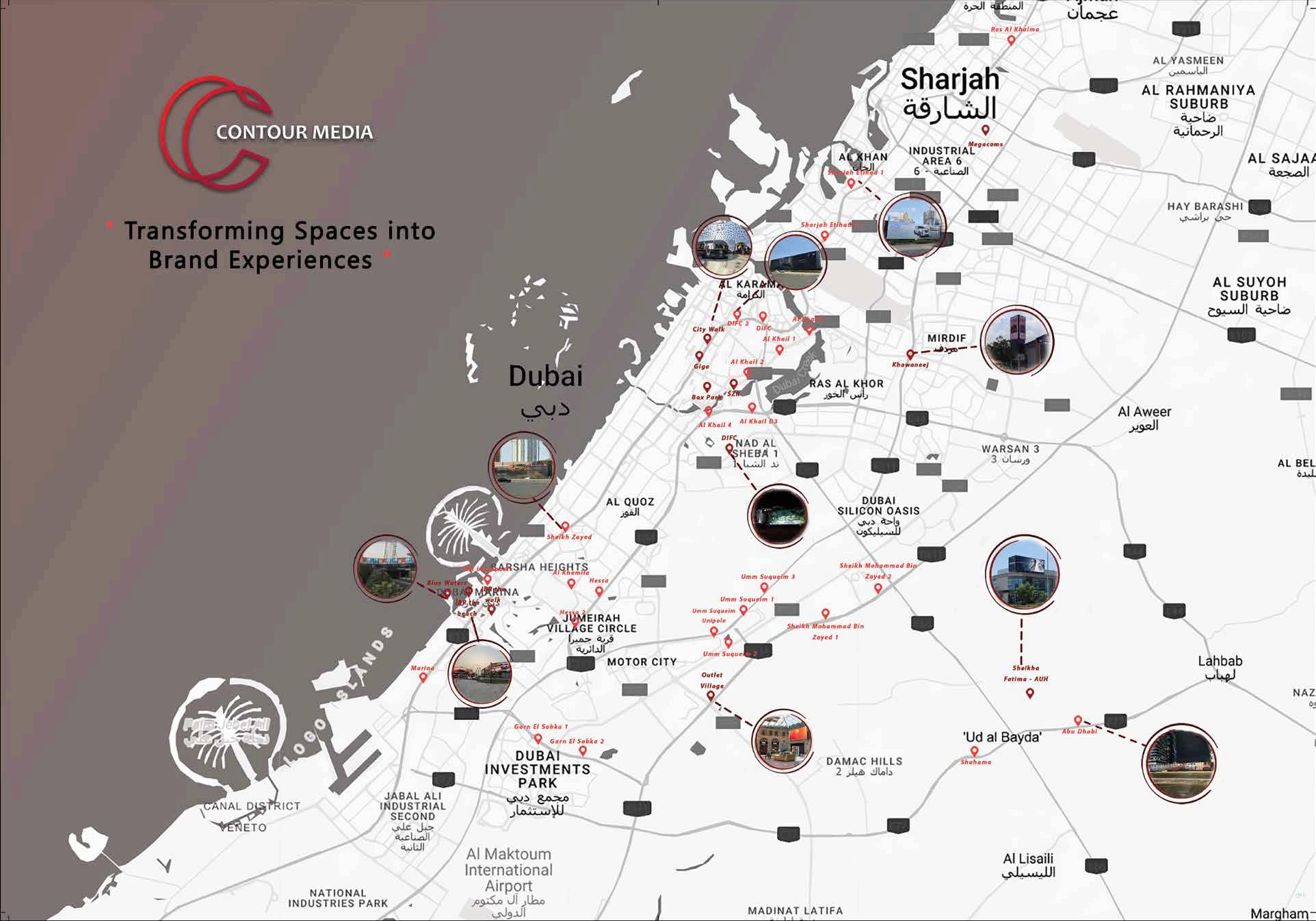

Ownership: Imad Zakaria Jomaa, Rabih Adnan - JGROUP
Regional headquarters: Dubai-UAE
Number of staff: 30 contourmedia.me
+971 4 276 4493 rabieh.adnan@contourmediame.com
Contour Media FZ LLC is the premier provider of out-of-home media solutions in the UAE. We believe that our commitment to quality will be a valuable asset to clients in all aspects. We offer out-of-home advertising solutions, branding, billboards, digital billboards, unconventional out-ofhome advertising, and other outdoor advertising options that are sure to meet your needs.
PROPERTIES:
City Walk, Giga on Al Safa Road, Blue Waters, Al Seef, JBR The Walk, JBR The Beach, Box Park, Al Khawaneej, Canal, The Outlet Village, Sharjah Megacoms, Boat Screen, Sheikha Fatima Park, The Static Live advertising sites include SZR - Marina Hoarding, Fraser Hoarding SZR (Front Lit), Hessa Hoarding, Al Khail, Umm Suqeim, DIFC Hoarding, Abu Dhabi Hoarding, and Sharjah Hoarding. Further locations for hoarding include MBZR Hoarding, RAK Hoarding, Garn Al Sabka 1, and Al Khamila.
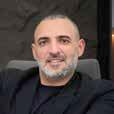





Contour Media is proud to announce its selection as the exclusive Media Partner for Dubai Holding Asset Management ‘s distinguished portfolio of destinations, comprising JBR, Bluewaters, Boxpark, The Outlet Village, Khawaneej Boxpark, and Al Seef.
Following an extensive evaluation process, Contour Media emerged as the preferred partner due to its innovative approach and commitment to excellence in media services. This partnership marks a significant milestone in our continued collaboration with DHAM, reinforcing our role in

enhancing the visibility and engagement of these renowned destinations.
“We are honoured and excited to be entrusted with this responsibility,” said Rabih Adnan, MD of Contour Media. “Our team is dedicated to delivering impactful media strategies that resonate with visitors and stakeholders alike, elevating the experience across these iconic locations.”
As part of this partnership, Contour Media will leverage its expertise in media to support DHAM’s strategic objectives. This collaboration underscores our shared

commitment to driving growth, innovation, and customer satisfaction within the vibrant landscape of Dubai’s leisure and retail.
DHAM owns and operates a distinguished portfolio of malls, destinations, and community centres, featuring a comprehensive mix of international and local retail, food and beverage concepts, and world-class entertainment experiences. These destinations deliver memorable experiences that attract millions of visitors each year, elevating the city’s position as a global centre for tourism and leisure.
RABIH ADNAN
WHAT MAKES OOH ONE OF THE MOST EFFECTIVE TRADITIONAL FORMS OF ADVERTISING?
Out-of-home (OOH) advertising remains one of the most effective traditional forms of advertising for several reasons:
1. High visibility and reach
OOH ads are placed in strategic, high-traffic locations such as motorways, urban centres, public transit systems, and airports. These locations ensure that a large number of people see them multiple times during their daily commutes. The scale and prominence of billboards, transit ads, and other OOH formats make them difficult to ignore, unlike digital ads that can be blocked or skipped.
2. High exposure
OOH ads are constantly visible, operating around the clock. Unlike other forms of advertising that rely on scheduled times (TV, radio) or engagement (online ads), OOH delivers continuous exposure, which reinforces brand messages and builds recognition over time.
3. Minimal distraction
Consumers often encounter OOH ads when their attention is less fragmented. While commuting or walking, people tend to be less distracted by mobile devices, emails, or other media, making OOH ads more noticeable compared to digital ads competing for attention.
4. Localised targeting
OOH allows for precise geographic targeting. Brands can position ads in specific neighbourhoods, cities, or areas to appeal to local demographics or convey region-specific messages. This is particularly useful for promoting retail stores, events, and local services.
5. Creativity and impact
The large canvas of OOH ads provides room for creativity. From massive billboards to interactive bus shelters and digital displays, brands can create bold, visually striking ads that capture attention and leave a lasting impression. Digital OOH also adds the dynamic capability of changing content in real time to match specific audiences or contexts.
CAN YOU COMMENT ON HOW DIGITAL TECHNOLOGIES HAVE ENHANCED MEASUREMENT CAPABILITIES OVER THE PAST YEAR?
Digital technologies have significantly enhanced measurement capabilities in advertising, including out-of-home (OOH), over the past year. Several innovations have enabled advertisers to track the effectiveness of their campaigns more accurately and make data-driven decisions. Here are key ways digital advancements have improved measurement:
1. Real-time data collection
Digital technologies have made it possible to collect real-time data on audience behaviour and ad performance. This includes monitoring impressions, engagement, and other key metrics through connected devices such as smartphones, smart billboards, and sensors.
2. Mobile location data
The use of mobile location data has revolutionised how advertisers measure exposure. Geolocation technologies allow marketers to understand when and where consumers are exposed to OOH ads, based on their physical presence. This data enables advertisers to assess audience reach, demographic breakdowns, and even behavioural patterns, improving the accuracy of campaign targeting and measurement.
3. Attribution models
Attribution in OOH has improved with the help of digital integration. Advertisers can now track whether a consumer who viewed an OOH ad later interacted with the brand online or visited a physical location. With digital technologies, it’s easier to connect OOH ad exposure to online actions, such as app downloads, website visits, or social media engagement, through methods like geofencing and retargeting.
4. Enhanced audience segmentation
Digital tools enable deeper insights into audience segments by combining OOH data with firstparty and third-party data from mobile apps, social media, and purchase histories. This allows advertisers to fine-tune their targeting by focusing on specific demographics, interests, or behaviours, and subsequently measure how different segments respond to ads.
WHAT HAVE BEEN THE TOP DEMANDS FROM BRANDS AND CLIENTS IN 2024?
In 2024, brands and clients have been focusing on several key demands as they navigate evolving consumer behaviours and the rapidly changing digital landscape. Here are the top demands:
1. Data-driven insights and personalisation
Brands are demanding more advanced data analytics to understand customer behaviours, preferences, and purchasing patterns. They want campaigns that use these insights to deliver personalised, relevant messaging.
2. Omnichannel integration
Clients are prioritising seamless integration across multiple platforms, ensuring that the brand experience is consistent whether customers are engaging with a brand online, in-store, or via out-of-home ads. Brands want campaigns that tie together online and offline touchpoints, such as linking OOH advertising with mobile engagement, social media, and e-commerce.
3. Sustainability and ethical advertising
Sustainability has become a major focus for brands, with many demanding greener and more eco-friendly solutions. Brands are seeking advertising campaigns that reflect their environmental and social values, including using sustainable materials in OOH advertising or
aligning with media outlets that promote responsible content. Ethical advertising, which includes DEI (diversity, equity, and inclusion) and avoiding harmful stereotypes, is also a key focus.
4. Higher ROI and attribution
The need for clear, measurable return on investment (ROI) has intensified. Brands expect greater transparency in how ad dollars are being spent and how effectively those campaigns are driving conversions.
5. Programmatic and automation
Automation through programmatic advertising has become an expectation across channels, including OOH. Brands are demanding greater efficiency in media buying and ad placements, with the ability to adjust campaigns in real time based on performance data.

6. Creative flexibility and innovation
As attention spans shrink and competition for attention grows, brands are pushing for more creative and innovative campaigns. They want flexibility in ad formats and messaging, with room for bold, interactive, and immersive experiences. Creative innovation, particularly in digital OOH, is seen as a way to stand out and captivate audiences.
7. Privacy and compliance
With increasing consumer concerns over data privacy and tightening regulations (such as GDPR and CCPA), brands are demanding that their advertising partners ensure compliance with data protection laws. They seek secure, privacy-conscious methods to track consumer behaviours, especially in digital advertising, without infringing on personal data rights.
8. Direct-to-Consumer (DTC) marketing
Many brands are focusing on direct-to-consumer strategies, bypassing traditional retail channels to engage customers directly. This has led to increased demand for advertising solutions that can drive online sales, build first-party customer data, and foster stronger relationships with consumers through personalised marketing and e-commerce.
In the ever-evolving landscape of out-of-home (OOH) advertising, cinema venues are emerging as a wonderful landscape for brands. Gone are the days when a basic poster of Arnold Schwarzenegger as the T-800 Terminator featured outside a theater.
Today, with the rise of digital signage, cinema operators are crafting engaging, interactive environments that elevate the audience experience. These dynamic displays, strategically placed outside theatres, captivate moviegoers from the moment they arrive – offering brands an unparalleled platform to connect with their target audience.
and auditory experiences in a way few other environments can match.
One of the key advantages of cinema digital screen advertising is the sheer scale of the displays relative to the space. In locations like Mall of the Emirates or Dubai Mall, the size of digital screens in the cinema foyer area is imposing compared with the available space. This ensures that advertisements are virtually impossible to miss.
Cinema advertising also benefits from a unique content ecosystem. Compared with mall environments, cinemas have less advertising clutter, significantly reducing the risk of ad fatigue or avoidance. Cinema screens don’t just display advertisements; they seamlessly blend ads with movie trailers and other entertainment content, creating a more engaging and less intrusive advertising experience.
Motivate Val Morgan’s Avinash Udeshi shares how cinema advertising can help brands make a truly larger-thanlife impression.
While in-mall displays and screens can garner impressions, they often fall into the category of fleeting encounters, akin to traditional billboards and street-level displays. These mediums typically offer what industry insiders call ‘transition impressions’, where viewers are en route to their destinations.
Cinema advertising, in contrast, presents a unique advantage. Unlike mall visitors who are often in transit, cinemagoers have reached their intended destination. They are exactly where they want to be – at the movies.
Moviegoers typically arrive in a relaxed, joyful state of mind – comparable to a holiday mood. This positive emotional state makes them more receptive to messaging and brand experiences, a phenomenon supported by Hearst’s ‘Power of Positivity’ study in 2023. The cinema setting itself is designed for engagement, priming audiences for visual
A recent case study highlighting the effectiveness of cinema digital screen advertising was seen with the release of ‘Taylor Swift: The Eras Tour’. The campaign leveraged the power of digital screens, especially the IMAX entrance screens for brands at Mall of the Emirates. As fans queued for hours in front of the IMAX theatre, they provided extended exposure to promotional content.
The excitement surrounding the event created a perfect storm of audience attention and emotional investment. This campaign generated one of the highest impression rates ever recorded on these screens, demonstrating the potential of welltimed, targeted cinema advertising.
Over the past four years, the number of digital screens within cinema complexes has grown dramatically. From 2020 to 2024, our network experienced an astounding 160 per cent increase in digital screen installations. This surge is not just about quantity but about enhancing the overall experience with immersive, interactive advertising.
The digital landscape in cinemas includes various sizes, each offering a unique way to engage audiences. Digital pillars stand tall in high-traffic areas, greeting guests as they enter and setting the tone for their cinema experience.
Hero screens, positioned strategically above concession areas, command attention right where customers are making purchase decisions. Digital Poster Screens are ideal to mimic movie announcements with teaser campaigns of ‘Coming Soon’ launches and then making the grand reveal with ‘Now Showing’.
For brands looking to make a larger-than-life impression, these placements are invaluable.
What elevates this advertising approach is the synergy between these digital screens and traditional on-screen cinema ads. Together, they create a cohesive, multi-touchpoint

‘‘CINEMA ADS ENABLE BRANDS TO CONNECT WITH POSITIVELY ATTENTIVE AUDIENCES.”
experience that lingers with the audience even after the movie ends.
Picture a moviegoer seeing your brand on a digital pillar upon entering, receiving a reminder on the hero screen while buying snacks, walking along the concourse corridor beside the digital poster boxes and then encountering the main feature of your campaign on the big screen. It’s a seamless brand journey that leverages the captivating power of cinema.
Looking ahead, 2025 is set to be a blockbuster year, with an exciting lineup of high-profile sequels and original releases that promises to drive a significant increase in cinema traffic – the highest in the post-pandemic era. As the line between advertising and experience continues to blur, cinemas offer brands fresh opportunities to tell their stories in ways that feel natural and engaging.
By integrating content across both cinema digital screens and the main screen, cinema advertising delivers a ‘blockbuster’ impact, enabling brands to connect with positively attentive, receptive audiences in a premium environment. It isn’t just about advertising anymore; it’s about being an integral part of the cinema experience. In a world where capturing attention is increasingly challenging, cinema always delivers a story worth experiencing.
By Avinash Udeshi, Chief Operating Officer, Motivate Val Morgan

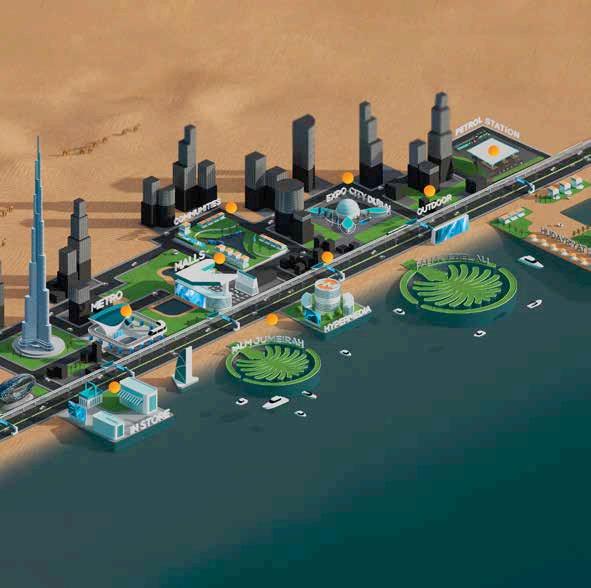




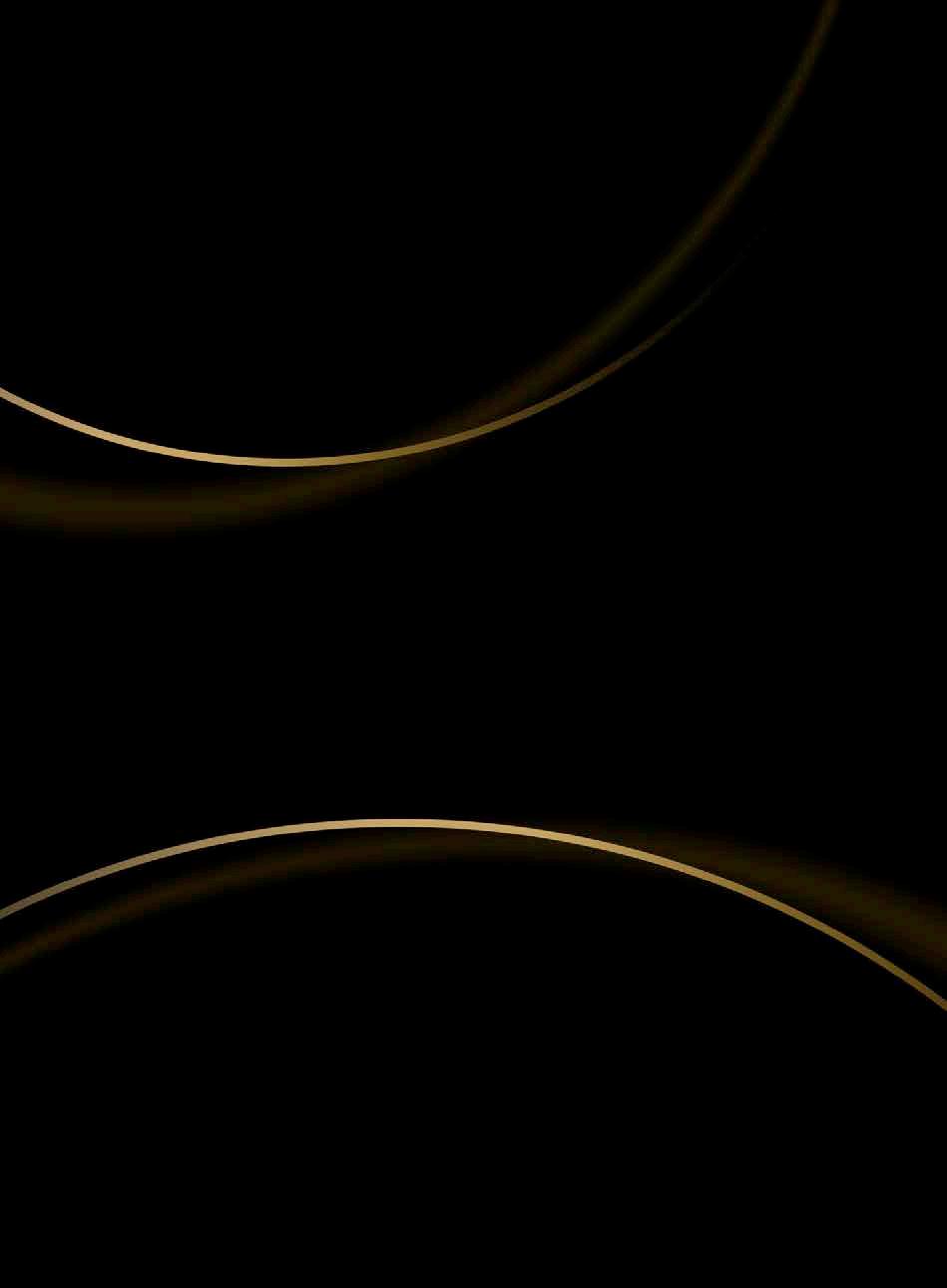
SIGNATURE
DUBAI METRO

PALM MONORAIL
STRATEGIC OOH/DOOH HOARDINGS
IN-MALL
IN-STORE
EXPO CITY DUBAI
NAKHEEL COMMUNITIES
HUDAYRIYAT ISLAND
ENOC PETROL STATIONS


4B+ Pass-Bys
7.8B+ Impressions Monthly
PUBLIC TRANSPORTATION
Unmatched Presence Across Dubai‘s Transit Hubs
53 Stations
125 Trains
260M+ Riders Yearly


117M+ Monthly Impressions 428K+ Reach 0 % Clutter
The Palm Jumeirah ENTRANCE

Monthly Income
123 % Higher than Dubai Average Income Luxury Meets Impact



HMX DOOH Platform
Empowering Brands with AI Audience Measurement and Real-Time Campaign Targeting
In today’s fast-paced world, where digital platforms dominate consumer attention, standing out as a brand requires more than just advertising. It requires authenticity, consistency and the ability to deliver on promises day in and day out. Out-of-home (OOH) advertising, often viewed as a traditional medium, has evolved to play a critical role in reinforcing these values, especially in competitive and dynamic markets such as the UAE.
At its core, brand building isn’t just about clever ads or catchy slogans. It’s about embedding the brand into the everyday lives of consumers, offering reliability and consistently demonstrating trustworthiness. OOH is a powerful channel for achieving this: by being visible, present and unwavering in its message, it helps reinforce a brand’s identity and create a lasting impact.
The UAE is a region where mobility is central to daily life, with busy roads and bustling public transport systems. This urban vibrancy makes OOH campaigns thrive. However, in such a saturated market, the challenge isn’t just to be seen – it’s to be remembered.
Whether through humour, warmth, or a focus on human-centred messaging, brands that can create a memorable connection with their audience are the ones that stand out in the sea of sameness. In this way, OOH becomes more than just an ad; it becomes a reflection of the brand’s personality and values.
The true power of OOH lies not just in visibility but in its ability to reinforce a brand’s promise. For many brands, that promise is centered on ease, reliability or customer-first service. OOH offers an opportunity to consistently deliver this message in a way that feels authentic and credible. In fast-growing cities like Dubai, where consumers are constantly on the go, OOH provides a unique advantage, offering multiple touchpoints in daily life that can help reinforce the brand message.
This omnipresence ensures that the brand stays top of mind, whether consumers are commuting to work, driving through the city or walking through
example, during periods of natural disruption, such as floods or extreme weather for insurance providers and platforms, companies have an opportunity to demonstrate their commitment to customer service. Brands that prioritise their customers’ needs during these times, by offering efficient and transparent service, build lasting trust that extends far beyond advertising. When brands deliver on their promises, especially under pressure, it reinforces the trust and loyalty that have been cultivated through OOH and other forms of communication. This realworld testing of a brand’s promise is what solidifies customer relationships in the long term.
While OOH is an effective tool for brand building, it’s not without challenges. One of the most pressing issues in markets like Dubai is the oversupply of inventory. With an increasing number of billboards, digital screens, and other OOH formats vying for attention, brands face the challenge of cutting through the noise. The sheer volume of OOH options can dilute the effectiveness of even the most wellcrafted message.

OOH enables brands to remain consistently visible in high-traffic locations, from metro stations to billboards. In industries where trust is paramount, such as insurance or banking, OOH provides a platform for brands to continuously reinforce their reliability and commitment, building trust over time. The persistent presence of OOH can serve as a physical reminder that the brand is always available, providing a crucial touchpoint that fosters familiarity and credibility.
In a landscape where countless messages compete for attention, brands are increasingly looking for creative ways to differentiate themselves. Some have found success by using distinctive brand assets, whether there are a recognisable logo, colour scheme or even a mascot. This level of recognisability can create a sense of emotional connection and humanise the brand, making it more relatable in a market where consumers are constantly bombarded with information.
OOH campaigns that incorporate unique, engaging elements tend to resonate better with audiences.
busy areas. Over time, these repeated exposures build a level of familiarity that strengthens trust.
In recent years, OOH has evolved from a primarily promotional tool to a platform for building brandfirst strategies. Brands are increasingly shifting their focus from product-specific campaigns to messaging that highlights their core values and long-term mission. This shift is driven by the understanding that consumers are not just looking for transactional interactions – they want to connect with brands on an emotional level. OOH, when used effectively, can communicate these values in a way that transcends the immediate sales pitch. It can serve as a platform to showcase the brand’s commitment to its customers, its focus on service, or its dedication to quality. In this way, OOH becomes an essential part of a brand’s long-term relationship-building efforts.
Ultimately, brand-building doesn’t end with visibility – it’s about how well brands live up to their promises, especially during critical moments. For
This oversupply also affects the market in terms of pricing and quality. Brands must be strategic, ensuring that they secure prime, high-visibility locations that align with their broader brand strategy. It’s not just about finding a space – it’s about finding the right space. In a market where visibility alone is no longer enough, the placement of OOH assets becomes a critical part of maximising impact.
As the media landscape continues to evolve, OOH will remain a pivotal tool in building strong, recognisable brands. The rise of digital OOH, in particular, offers even more flexibility for brands to create campaigns that are visually striking, interactive and adaptive to real-time needs.
While the medium may change, the fundamental truth remains: OOH’s power lies in its ability to consistently deliver a brand’s promise. By maintaining a brand-first approach that emphasises trust and emotional connection, OOH can help build long-lasting relationships with consumers that go far beyond transactional interactions.
OOH is more than just a high-visibility channel – it’s a tool for embedding a brand into the lives of consumers. Through strategic placements, creative executions and a consistent brand message, OOH helps brands build trust, foster loyalty and deliver on their promises.
By navigating the challenges of oversupply with thoughtful strategy and collaboration with the right partners, OOH continues to be a critical pillar for longterm brand-building efforts in competitive markets.
By Avinash Babur, Founder & CEO, InsuranceMarket.ae

Ownership: Blue Ad Group
Founded: 2022 (in the Gulf region)
Regional headquarters: Dubai
Number of staff: 12 www.bluead.ae info@bluead.ae
Blue Ad is a premier digital out-of-home media operator with over 20 years of experience in the USA, Russia, and the UAE. We proudly own and operate the world’s only vessel equipped with 3D LED screens in Dubai, alongside a range of other stateof-the-art video displays, digital Unipoles, and static Hoardings on major roadways.
PROPERTIES:
Hoardings: Al Khail Rd (Al Jaddaf, Zabeel/Dubai Mall, Dubai Hills Mall); Hessa St (Opp Jebel Ali Racecourse); MBZ Rd (Dubai Autodrome, Dubai Sports City); Al Ittihad Rd (Dubai Exit).
Digital unipoles: Hessa St (Saudi-German Hospital); Umm Suqeim St (Mall of the Emirates), Al Garhoud bridge (Al Garhoud), Oud Metha Road, Al Khail Road
Transit media: 3D-digital vessel “Illuminate”, serving Dubai’s beaches
Digital screens: Sheikh Zayed Road, Two Seasons Hotel
Building wraps: Sheikh Zayed Road, Al Batha Tower Business Bay
RTA Marine assets: Exclusive rights to manage all indoor and outdoor advertising on RTA Marine assets until 2030: marine vessels, 44 water taxis, marine stations naming rights, marine infrastructure and kiosks, 143 abras, tickets etc.
CEO, Blue Ad Group
WHAT DO YOU THINK OF THE FUTURE OF DIGITAL OUT-OF-HOME (OOH) IN DUBAI?
Dubai currently has a relatively low proportion of digital Out-of-Home (OOH) compared to other countries. China, Germany, South Korea, and the US all see the share of digital between one-third and half of all Out-of-Home (OOH), while in Russia, Australia, and the UK, this share has already exceeded two-thirds.
Until now, Dubai has been a conservative city in this respect, with clients who love to stand out by being the only, exclusive client in a particular location. This is a seemingly easy endeavour, with the abundance of dominating installations such as hoardings, enjoyed by many.
However, we have few doubts that the share of digital will grow steadily and inevitably in Dubai. As the city of 3.5 million residents expands, a network of digital assets will become the best and most modern solution to deliver coverage, targeting the audience that you need, offering high GRP/OTS, and keeping CPT low.
The ability to launch a bright, noticeable digital campaign in a matter of minutes, when and where you want, is something that traditional Out-of-Home (OOH) can never provide.
HOW SUPPORTIVE AND TRANSPARENT IS THE REGULATORY FRAMEWORK FOR THE OUT-OF-HOME (OOH) INDUSTRY IN DUBAI?
This continues to be a significant challenge. So far, legislation and its implementation are

neither clear nor investor-friendly. Moreover, it is detrimental to the emirate itself.
Advertising permits are issued for just 1 year—basically, for the period of time that they are paid for. Then, an extension is granted almost automatically, even for those assets that cease to match any new legislative requirements or are no longer part of the city’s vision. As a result, tens and hundreds of obsolete rooftops, signs, and installations flood the city.
A more effective strategy could involve issuing 3, 5, or 10-year annually payable permits, depending on asset type, which would guarantee the investor a project’s lifetime, but no longer than that. After the permit’s expiration, the municipality should be free to






discontinue any location, as the city is a living entity that needs flexibility in reshaping its landscape, with Out-of-Home (OOH) being an integral part thereof.
An excessive number of hoardings—while filling the treasury with income—inflicts more harm than good on the city, creating a “monstropolous” choked by oversized installations, with architecture, environment, and neighbourhoods all left behind this curtain of advertising giants.
Tenders are a major issue. They come out all of a sudden and are almost never finalised in time. Tender rules need to be unified, transparent, and followed by everyone.
Buffer zones and ad-free zones that have been introduced recently, as well as unclear traffic security decision-making, add to the ambiguity and uncertainty that the industry faces.
We are hopeful that the establishment of the new agency overseeing outdoor advertising will bring positive changes and clarity to the rules to which the industry adheres.
Without any doubt. As long as it remains safe, it should, in fact, be encouraged.
As an international group, we have rich experience in carrying out special projects, which include 3D-building wraps, oversized transit outdoor ads, creative indoor solutions, and much more.
Part of this approach is our first-in-the-world vessel, named “Illuminate,” equipped with 3D-LED screens, commissioned this year, serving Dubai’s Marina, JBR, and Jumeirah areas.
As digital out-of-home (DOOH) continues to evolve, brands are leveraging its dynamic capabilities to connect with audiences in increasingly engaging and interactive ways. From interactive displays to real-time content updates, DOOH is revolutionising brand visibility and consumer interaction far beyond the traditional static billboard.
The growth of digital out-of-home (DOOH) advertising in the MENA region mirrors broader global trends while presenting unique regional nuances and opportunities. According to Statista, global OOH advertising revenue is projected to reach $ 1.13bn by the end of 2024, highlighting an impressive growth trajectory. This surge is driven by urbanisation, rapid technological advancements and the proliferation of smart cities – particularly in countries such as the UAE, Saudi Arabia and Egypt.
In the MENA region, DOOH is reshaping the traditional out-of-home advertising market. Leading this revolution in Oman is Mubashir, a key player in deploying cutting-edge technologies such as interactive displays, QR code activations, AI integrations, audience measurement tools, and programmatic DOOH. These advancements have empowered advertisers and redefined consumer engagement in public spaces.
Adopting a customer-centric approach ensures an exceptional experience for both advertisers and passersby.
For advertisers, Mubashir’s network offers tailored DOOH solutions that maximise brand visibility and audience engagement. By deploying strategic, data-driven campaigns, Mubashir ensures brands reach the right audience at the right time in the right locations.
This has allowed marketers to better measure the return on investment (ROI) for their campaigns while accessing data analytics to optimise their strategies in real time. Passersby also benefit from a dynamic blend of entertainment and information on Mubashir’s digital screens. Through interactive displays, gamification, live news updates, weather reports and fuelling information. This innovative approach enhances the viewer experience, making the ad messaging feel less intrusive and more integrated into everyday life.
LEVERAGING DOOH FOR BRAND SUCCESS IN THE MENA REGION
To fully harness the power of DOOH as part of a broader marketing mix, MENA brands can implement several strategic approaches:
Location targeting: Use data analytics to identify high-traffic, strategic locations such as malls, airports, and business districts that align with the brand’s target audience.
Programmatic DOOH: Automate ad placements and tailor content dynamically based on factors such as time of day, weather conditions, or real-time events. For instance, a brand might advertise a range of its business products during work hours and its leisure products on weekends.
Cross-channel marketing: Integrate DOOH with online and social media campaigns for cohesive messaging. Using QR codes can drive consumers from digital screens to online platforms for further engagement, creating an omnichannel experience.
PERSONALISED CONTENT WITH DYNAMIC CREATIVES
Adaptable messaging: DOOH allows for tailored, context-aware messages. Content can shift based on location, time of day, or demographic data, ensuring that ads are always relevant.
Interactive displays: Brands can incorporate touchscreens or gamified content to engage audiences and increase interaction.
MEASURE CAMPAIGN EFFECTIVENESS WITH ADVANCED ANALYTICS
Audience measurement tools: Track metrics such as impressions, engagement and foot

Mubashir’s Fadwa Daif shares her take on the rise and the growing potential of DOOH in brand engagement.
traffic to assess campaign performance. These insights allow marketers to refine strategies and make real-time adjustments. Real-time feedback: Programmatic DOOH enables quick optimisation of content based on audience responses, ensuring highimpact campaigns.
INFOTAINMENT TO KEEP AUDIENCES ENGAGED
Value-added content: By blending advertising with useful content like weather updates or news, brands can enhance the viewer experience and make their ad messaging feel less intrusive.
By implementing these strategies, MENA brands can maximise the impact of their DOOH advertising and ensure it complements their broader marketing efforts.
THINK OUTSIDE: DOOH TRENDS AND PREDICTIONS FOR 2024 AND BEYOND
As we approach 2025, the MENA region is set to witness significant growth in digital out-of-home advertising, fuelled by rapid urbanisation, digital transformation and the adoption of innovative advertising strategies.
MENA OOH AND DOOH MARKET OVERVIEW
The MENA DOOH market is projected to reach approximately $ 717.40mn by 2029, growing at a compound annual growth rate (CAGR) of 16.41 per cent from 2024 through 2029, as brands continue investing in reaching urbanised, tech-savvy audiences.
The key drivers of the MENA region’s OOH growth are:
Urbanisation : The rapid expansion of cities, particularly in KSA, UAE and Qatar, is
creating more advertising opportunities in high-traffic areas such as transportation hubs and retail centres.
Digital transformation: The shift from traditional billboards to digital formats offers advertisers greater flexibility and targeting capabilities.
Smart city projects: Governments are investing in smart cities including NEOM in Saudi Arabia, where digital billboards and interactive formats will be integrated into urban infrastructure.
Programmatic buying: Programmatic tools for DOOH allow brands to run highly targeted, data-driven campaigns that can be updated in real-time.
DOOH’S FUTURE: 2024 AND BEYOND
DOOH is expected to account for more than 50 per cent of total OOH revenue in the MENA region by 2029.
Growth will be concentrated in major urban centres, led by Saudi Arabia, the UAE, and Qatar.
Brands will increasingly integrate immersive technologies such as augmented reality (AR) and artificial intelligence (AI) into their campaigns to engage digitally native audiences.
By 2025, the MENA OOH market is expected to grow rapidly, driven by digital adoption, urbanisation, and innovative advertising solutions in key markets such as Saudi Arabia.
As brands continue to seek new ways to engage consumers, DOOH is set to play a pivotal role in shaping the future of advertising in the region.
By Fadwa Daif, Sales Director, Mubashir
Founded: 2006
Ownership: Sonali Bhatia
Office: Abu Dhabi
Number of staff: 10–15 mascotad@emirates.net.ae
Founded: 2015
Holding group: International Live Solutions
Headquartered: Oman info@mubashir.com
PROPERTIES: Over 300 digital billboards in various formats such as LED, large ,targeted, megacom, interactive kiosks across highways, university, Muscat Airport lounge , Oman Convention Centre, malls and convenience stores.
Founded: 2018
Holding group: ARN/ Dubai Holding
Headquartered: Dubai
Number of staff: 200+ hello@mpn.ae
PROPERTIES:
Dubai: Sheikh Zayed Road (Hoardings) – H1, H2, H3, H4, DWTC Exit Hoarding
Sheikh Zayed Road (Unipoles) – SZR1, SZR2
Umm Suqeim Road (Hoardings) – USQ4, USQ South 1, USQ South 2, USQ South 3, USQ South 4, USQ South 5
Umm Suqeim Road/Dubai Science Park – DSP1 Unipole
Umm Suqeim Road/Dubai Hills – Dubai Hills Hoarding
Al Khail Road (Hoarding) – Business Bay Hoarding
Mohammed Bin Zayed & Al Ain Road (Hoarding) – Liwan Hoarding
Mohammed Bin Zayed (Unipole) – Majan Unipole
Al Naseem Street/Media One – DMC1 Unipole
Al Sufouh Road, Palm Jumeriah – DMC2 Unipole



Founded: 2004
Ownership: ELAN Holding QPSC, owned by Qatar Development Bank HQ: Doha, Qatar
Number of staff: 125 www.elan.qa +974 4428 2830, +971 4428 9430 elanmedia@elan.qa, elanmediadubai@elan.qa
ELAN Media is the leading Qatari media company and is commi ed to driving innovation and excellence in advertising by offering a mix of media channels, such as digital out-of-home, static out-of-home, cinema, online and radio advertising. We offer high-impact advertising assets and high-value creative opportunities for brands. ELAN Media pioneered DOOH and programmatic DOOH in Qatar and is at the forefront of implementing technology to embed data in all its assets.
PROPERTIES:
Static out-of-home: Our static outdoor assets cover all the municipalities in Qatar, including Lusail City. The range of ELAN Media’s advertising platforms includes mupis, seniors, unipoles, scaffolding, flag poles, bus shelters, bridge banners and wall wraps with a total number of over 2,300 faces.
Digital out-of-home assets: ELAN Media’s most advanced digital network in the region is located within the malls and on the roadsides – Mall of Qatar, Doha Festival City, Msheireb Downtown Town Doha, Place Vendome, Mall of Muscat, Salwa Road, Al Waab area – and in various iconic locations in Lusail and key Woqod Petrol Stations with a total of 444 screens.
Cinema: ELAN Media exclusively represents Novo Cinemas in Qatar and Oman with 142 screens.


















Founded: 2011
Ownership/holding group: Elevision
Regional headquarters: Dubai, UAE
Number of staff: 32 elevision.com
+971 4 360 8089 marketing@elevision.com
Elevision owns and operates one of the largest DooH networks in the UAE. With a network of 1650+ screens having 347M+ available monthly impressions, Elevision provides advertisers with unparalleled access to the region’s most affluent consumers. Elevision’s proprietary media technology enables its clients to deliver dynamic video content, custom-tailored to their audiences and objectives.
PROPERTIES:
1,237 residential elevator screens and 450 commercial elevator screens across Dubai and Abu Dhabi’s prime locations. 46 large-format digital screens and 1 roadside hoarding across DIFC network (commercial), and 62 large-format column screens in One Central.






CEO NIALL SALLAM
IN YOUR OPINION, WHAT MAKES OOH REMAIN ONE OF THE MOST EFFECTIVE TRADITIONAL FORMS OF ADVERTISING?
OOH/DOOH’s ability to deliver highly visible, cost-effective, and tangible results, combined with its omni-channel capabilities, makes it a powerful and enduring form of advertising in today’s media landscape. As we increasingly live in an “attention economy,” the need for dynamic advertising tools is critical for brands to succeed.
ARE AUDIENCE ANALYTICS AND PROGRAMMATIC DOOH CHANGING THE ADVERTISING LANDSCAPE?
New audience data measurement and programmatic tools are making DOOH advertising more specific and less rigid, allowing it to achieve tangible offline actions and complement other online
INDUSTRY SNAPSHOT
media initiatives. This evolution is making DOOH an increasingly relevant medium that cannot be ignored in modern marketing strategies.
IS SUSTAINABILITY STILL A CRITICAL ISSUE WITHIN THE OOH INDUSTRY AND HOW SHOULD IT BE ADDRESSED?
Sustainability is, and always should be, a critical issue within the OOH industry. Finding a resolution is critical for continued shareholder interest in OOH advertising, as well as for companies to succeed. One effective approach is to integrate sustainable practices tailored to each business’s operations. Whether in technology or print, there are always eco-friendly alternatives that contribute to the greater good.
IN YOUR OPINION, HOW CAN OOH PERFORM AT EVERY STAGE OF THE MARKETING FUNNEL?
OOH/DOOH creates awareness with expansive coverage and reach, encouraging engagement and brand recall when implemented. It also has the ability to nudge the audience at the right place and at the right time through strategic campaign placements, making it a complementary tool to other marketing initiatives.




Founded: 2017
Ownership/holding group: Golden Anchor Group
Regional headquarters/ office location: Dubai, UAE
Number of staff: 9 footprintooh.com
+971 4 288 7000 sales@footprintooh.com
At Footprint Advertising Solutions, we believe in the power of ideas. Our comprehensive marketing agency is based in Dubai, but we work with clients near and far to help them transform the way they do business. Every great client alliance starts with a strategy. When we partner with clients for full-service creative solutions, we devise a plan to capture audience a ention and ensure long-term success. We were born out of a desire to provide brands with the quality creative services they need to stay ahead. We believe in creating inspired solutions that are uniquely appropriate for each client we work with. We have been building, brightening, and promoting company brands since 2017, and our team has the necessary skills and experience to benefit our clients. Our approach involves developing custom-made integrated solutions that define the right messaging at the right time to help businesses engage with the right audience.
PROPERTIES:
10 unipoles, 2 wall banners, 2 bridge banners, 2 hoardings
Founder and Managing Partner
IS OOH UNDERGOING A CREATIVE RENAISSANCE AGAINST STEREOTYPES AND VISUAL CLUTTER? IF NOT, DOES IT NEED ONE?
With the formation of Mada Media Company and the release of the new RTA advertising guidelines, if they are implemented correctly, the visual clutter issue will be resolved. If you pass by certain areas in Dubai currently, it can feel like walking through a grocery store with multiple advertising structures often placed next to each other with no distance. Suppliers need to be a bit more creative—the boring old structures no longer suit this city. However, over the past year or so, I have seen some beautiful structures being constructed across the city.
CAN YOU COMMENT ON HOW DIGITAL TECHNOLOGIES HAVE ENHANCED MEASUREMENT CAPABILITIES OVER THE PAST YEAR?
These advancements have made it easier for brands to track the effectiveness of their campaigns, understand audience behaviour, and
INDUSTRY SNAPSHOT

optimise their ad spend. Geo-fencing, unique QR codes, AI-driven predictive analysis, and digital retargeting have made it much easier for agencies to start calculating ROI using real-time data insights. Furthermore, access to these technologies and tools has made outdoor a much more transparent medium of advertising.




Aquif Merchant

HOW CAN OOH PERFORM AT EVERY STAGE OF THE MARKETING FUNNEL?
From awareness to post-purchase, OOH plays a huge role in every step of the customer journey. If a brand only focuses its campaigns on the conversion stage, expecting customers to purchase or utilise their services based on a few call-to-action ads, the campaign is bound to fail. OOH creates a sense of repetition and reassurance at every stage of the purchase journey, from awareness to conversion, that the brand has a presence and will be around.
IS SUSTAINABILITY STILL A CRITICAL ISSUE WITHIN THE OOH INDUSTRY AND HOW SHOULD IT BE ADDRESSED?
For sure, from static artworks to the ever-growing issues of PVC flex disposal, to the carbon contribution of each OOH location through the use of generators and the light pollution caused by digital screens—these are all solvable issues. Suppliers just have to be willing to address them. We are one of the few, if not the only, agencies in the country that follow a zero-to-landfill policy for our OOH mediums. Furthermore, with the planting of trees and other green initiatives, we aim to reach a carbon net-zero target by December 2024. As suppliers, we have to think outside the box and stop focusing solely on the bottom line—every problem is then solvable.
By Ahmed Abdullah Al-Hamadi, Director, Financial Sustainability and Investment Department, UAE Ministry of Energy and Infrastructure
Without a doubt, 2024 was exceptional for those working in the outdoor advertising sector in the region. It witnessed record-breaking figures, an unprecedented number of new billboards, and a strong presence of digital advertising and digital screens.
Dubai also welcomed a comprehensive restructuring of outdoor advertising systems alongside other the Emirates across the UAE.
I won’t hide the fact that the stakeholders in the outdoor advertising industry are probably the only ones who have become happier as traffic increases and the population density of the UAE grows gradually.
This also reflects the way we think. At the Financial Sustainability and Investment Department of the UAE Ministry of Energy and Infrastructure, we have always looked at every challenge as an opportunity.
From the midst of difficulties, profits are generated, and exceptional results are achieved.
Take for instance the federal roads in the UAE, which have a total length of more than 952 kilometres, representing the longest network of external roads in the United Arab Emirates.
These federal roads present a genuine opportunity for investors to extend and expand their advertising base, and to move away from concentrated advertising hotspots. These federal roads also offer an opportunity to obtain better visibility and broaden the horizon for creative advertising experiences, with novel ideas and redefined standards for creativity.
In 2024, we witnessed the signing of several investment agreements to

leverage new advertising locations, with more than 40 outdoor advertising investment companies shifting their focus to federal roads within the UAE.
These included a spectrum of road assets evenly distributed between streetlight advertisements, bridge banners, tunnel advertisements, megapole and unipole boards, and, of course, huge hoarding panels, which were the most popular on our roads this year.
Some of these massive billboards even exceeded 100 metres in length –representative of the significant real estate boom across the UAE in 2024
During the peak of the scorching summer in August, our team was searching for an opportunity to meet the increasing demand for large boards
on the Sheikh Mohammed bin Zayed Federal Road (E311), but concluded that no additional land was available in the Sharjah segment.
What does this show? The demand within the industry remains high, investors remain extremely confident, and the industry has proven its effectiveness within the market.
Some have raised the question: was outdoor advertising lucky to be the platform least affected by the social media advertising revolution, which significantly affected advertising across other traditional media such as newspapers and television?
From my perspective, I would say it is quite the contrary: social media was lucky in 2024 because outdoor advertising did not take too much of its market share.
The biggest challenge in the coming period will be the coordination among various land-owning institutions, energy providers and those responsible for advertising material permits to achieve integration and create quick and comfortable experiences for investors.
This move is in line with our government’s policy to reach ‘zero’ bureaucracy, ensuring we remain at the forefront of making the UAE the first and best destination for investors in the region amidst healthy competition in all fields among various players.
Our doors at the Investment Department are open to any nontraditional ideas that contribute to the development of our fixed assets, which also include major water dams, a vast reserve of federal roads, and iron bridges, among others.
Our belief in the importance of partnership with the private sector, due to its expertise and field presence, makes us eager to hear more from it.














Our goal is to drive digital innovation in the UAE.
Through the development of architectural and aesthetically superior locations. With the foundation of independent credible data, our medium is now more accountable than ever. We will strive to deliver dynamic, relevant and engaging content to enable our clients to stand-out.








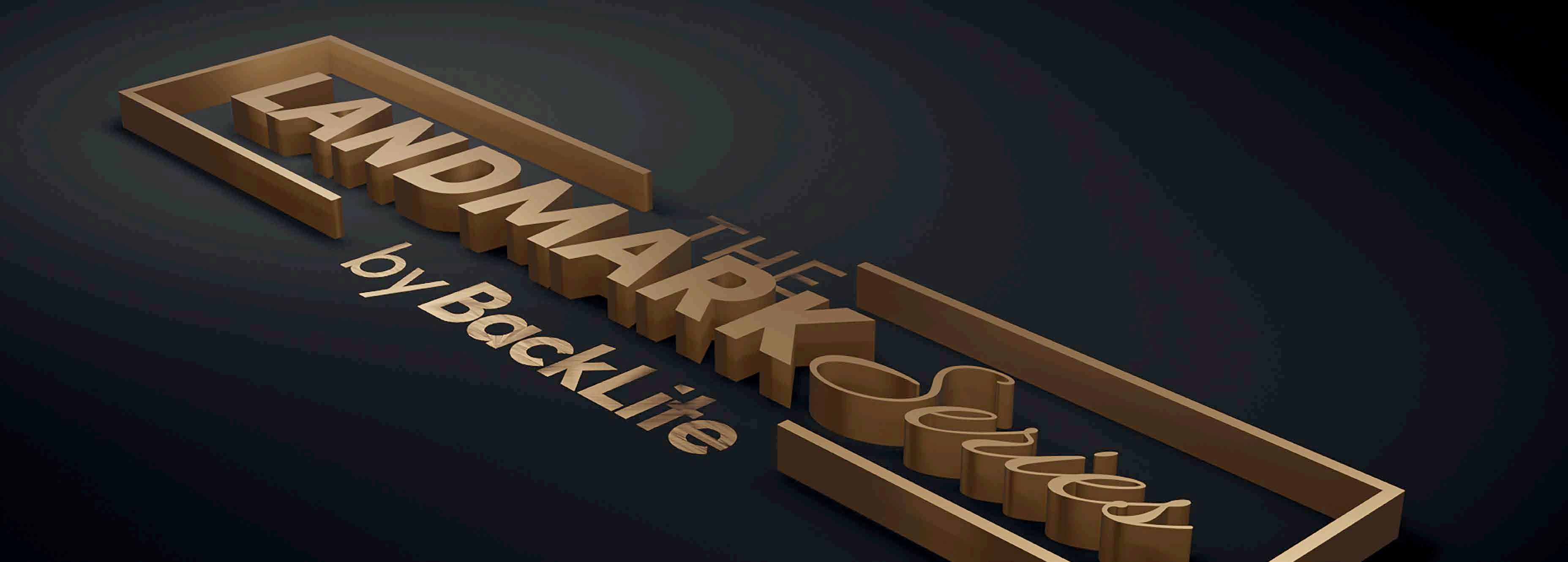
With The Landmark Series, we have pioneered digital innovation in the UAE by creating architecturally stunning and aesthetically advanced locations for premium brands across all sectors. These vast, cutting-edge screens have transformed the media landscape in Dubai and now in Abu Dhabi.
The 2024 launch of The Triple Crown on Al Khaleej Al Arabi Street in Abu Dhabi and the upcoming Island Gateway mark our expansion of premium Digital Out-of-Home (DOOH) sites across the UAE’s capital. This ensures unparalleled brand visibility in Dubai and Abu Dhabi, offering top-tier exposure for leading brands.
At BackLite, we believe a brand’s desirability can be maximised.
We call this Desirable by Design®



The last point of influence before Dubai Mall
These huge structures match the skyline around them, forming The Gateway to the Golden Boulevard.


Located between Dubai Marina and Downtown Dubai on Sheikh Zayed Road, this award-winning advertising icon is visibible to over 500,000 people daily, making it one of Dubai’s most impactful locations for advertising.

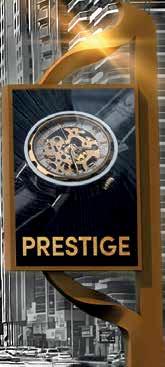

Positioned on the Golden Boulevard of Sheikh Zayed Road, between The World Trade Centre and Dubai Mall, opposite the stunning Museum of the Future.


The Oryx captures the strength and grace of its namesake. This stunning display symbolises the highest standards of quality and sophistication in outdoor advertising. Experience the elegance and impact of The Oryx, where innovation meets tradition in a breathtaking display.
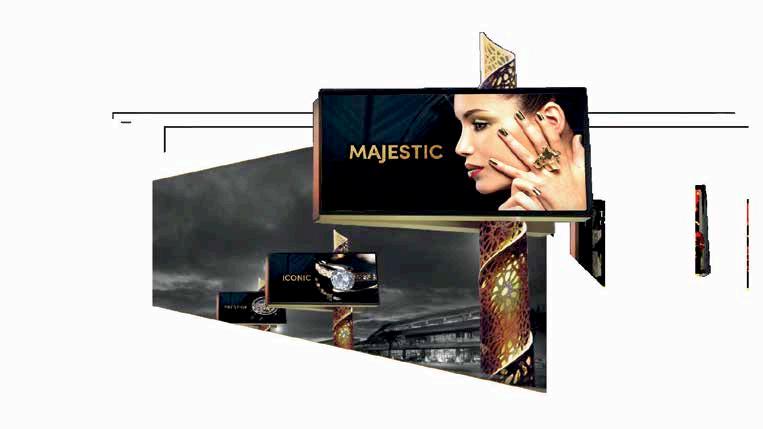
The roll-out of The Triple Crown in Abu Dhabi on Al Khaleej Al Arabi St. represents a significant advancement in digital advertising in Abu Dhabi, offering premium brands exceptional visibility to reach affluent audiences.

The Island Gateway, launching in 2025 on Jubail Island, is set to be a unique digital advertising platform at the entrance of Abu Dhabi’s most prestigious islands, home to luxury living communities and world-class attractions.

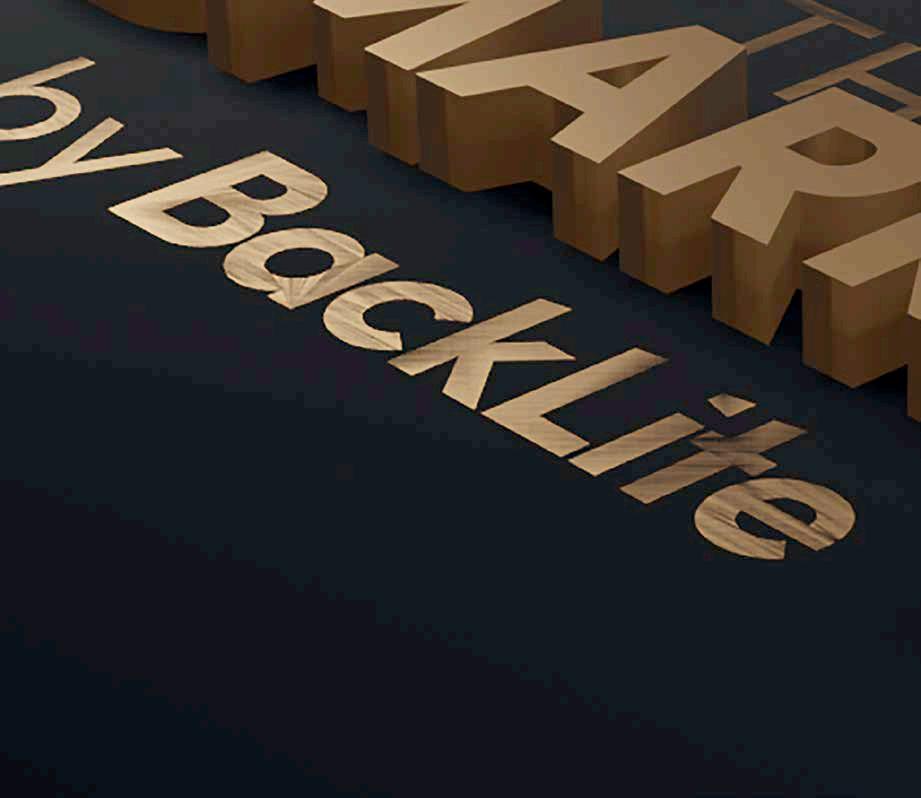




As the out-of-home (OOH) advertising industry evolves, its growth potential is vast. It remains one of the most effective channels for brands to capture attention in the physical world, engaging diverse audiences on a grand scale.
However, for OOH to fully realise this potential, there are significant challenges –particularly the cumbersome and fragmented approvals process that advertisers and media owners must navigate.
In many regions, OOH regulations are overseen by various bodies, from municipal authorities to highway agencies, each with its own rules. This fragmented approach complicates campaign execution and stifles creativity, ultimately hindering the growth of the OOH industry. A more streamlined, unified regulatory framework is necessary for the industry to thrive.
In an industry where timing is crucial, the bureaucratic delays that plague the current approval processes are not just frustrating –they’re detrimental to campaign success. Advertisers planning product launches or seasonal promotions often find themselves in a race against time, only to be held back by slow-moving regulatory bodies.
These delays affect brand perception and dissuade businesses from investing in OOH as they turn to faster-moving, more predictable digital channels. The opportunity for impactful, large-scale campaigns diminishes, and the growth of the OOH sector is hampered.
One solution is establishing a centralised regulatory framework, supporting consistent approvals across regions and formats. Cities including London and New York have
‘‘OOH’S GROWTH POTENTIAL WILL ONLY BE REALISED WHEN THE REGULATORY
successfully implemented such systems, providing transparent, streamlined processes that reduce the uncertainty surrounding OOH advertising. The Government of Dubai has recently made strides in this direction by creating Mada Media Company, a single governing body for OOH advertising. This move is poised to revolutionise the approval process by offering a one-stop solution for advertisers and media owners. With a unified body overseeing the OOH landscape, Dubai sets a new regional benchmark for efficiency, transparency and accountability.
A centralised regulatory system like Mada Media Company streamlines the approval process and minimises delays, allowing advertisers to focus on crafting bold campaigns without regulatory hindrances.
A more streamlined approvals process speeds up campaign execution and encourages greater creativity. In the current regulatory environment, advertisers often face restrictions that limit their ability to push creative boundaries, particularly with the growing demand for dynamic, interactive digital OOH ads.
By adopting a more transparent and predictable approval system, regulatory bodies can encourage innovation. This would allow advertisers to experiment more, creating a diverse and vibrant environment that balances creativity with compliance.
Digital technology can significantly improve the approval process for OOH advertising. By using online submission platforms, real-time tracking, and automated responses, delays can be removed, errors reduced and decisionmaking sped up.
Data analytics allows for more accurate assessments of OOH installations. It ensures decisions are based on objective criteria such as traffic, safety and aesthetics, reducing subjective delays.
Implementing a system such as Mada Media’s could also increase transparency. It would give advertisers clearer insights into their application status and foster trust between the public and private sectors, leading to a more efficient and accountable process for everyone involved.
Ultimately, a more seamless approval process is essential to encouraging more significant investment in the OOH industry. When advertisers are confident that their campaigns will launch on time and within the planned scope, they are more likely to allocate a significant portion of their budgets to OOH.
Similarly, media owners would be more willing to invest in cutting-edge formats – such as digital billboards, augmented reality, and AI-powered OOH solutions – knowing that the regulatory framework supports innovation. This increased investment would increase revenue for private companies and public municipalities through fees and taxes, benefiting all parties involved.
The OOH industry is at a crossroads. While its growth potential is immense, it will only be fully realised when the regulatory environment adapts to meet the needs of a rapidly evolving media landscape. As Dubai has done with Mada Media by streamlining approvals and creating a more unified regulatory framework, authorities can unlock the true power of OOH advertising, benefiting advertisers, media owners and the broader public. Now is the time for stakeholders to come together and advocate for change. By embracing a more seamless and supportive regulatory process, we can propel the OOH industry into a new era of growth, innovation and impact.
by James Bicknell, CEO, BackLite Media

JCDecaux ATA’s Elie Hajjar calls on the industry to create a more sustainable, inclusive and accountable future that takes ESG a step beyond compliance and reputation.

Ihave witnessed firsthand the evolving landscape of our industry. One of the most significant shifts in recent years is the growing emphasis on environmental, social and governance (ESG) criteria. These principles are not just buzzwords; they represent a profound shift in how we do business, and their impact on OOH advertising is undeniable.
In Saudi Arabia, this shift is particularly important as the country advances its Vision 2030, a bold initiative aimed at reducing carbon emissions and promoting sustainable development across all sectors. For organisations, aligning with this vision is not just a responsibility but an opportunity to take meaningful action toward these ambitious sustainability goals.
ESG encompasses three critical areas:
1. Environmental: This relates to a company’s impact on the planet. For OOH advertising, it includes using eco-friendly materials, energy-efficient lighting, and reducing waste through recycling. With climate change posing significant challenges, environmentally conscious practices have become essential.
2. Social: This examines how companies interact
with their employees, suppliers and the communities they serve. In OOH advertising, it means promoting diversity and inclusion, supporting local economies, and ensuring advertising respects cultural values.
3. Governance: This focuses on transparency, accountability and ethical business practices. Strong governance builds trust with stakeholders and ensures that companies make responsible, well-informed decisions.
Integrating ESG principles into OOH advertising is no longer optional; it’s essential. Consumers today are increasingly mindful of the social and environmental impacts of the brands they support. Studies show that many are willing to pay more for products from companies that prioritise sustainability and social responsibility. This presents a unique opportunity for OOH advertisers to differentiate themselves by aligning with ESG values.
Brands embracing ESG can stand out in a crowded market, attracting ethically driven consumers. Conversely, those that ignore these principles risk alienating a growing demographic of socially conscious consumers. Companies with strong ESG performance often outperform competitors financially, making the business case for ESG clear.
‘‘WE CAN TRANSFORM OUT-OF-HOME ADVERTISING INTO A POWERFUL VEHICLE FOR
OOH advertising is evolving to meet the demand for sustainability. From solar-powered billboards to biodegradable posters, new technologies are shaping the future. Digital advertising, especially programmatic, allows for more targeted campaigns, reducing waste and improving efficiency.
In Saudi Arabia, the push for sustainability is even stronger, as Vision 2030 emphasises reducing the nation’s dependence on oil and promoting green practices across sectors. This drive to achieve net-zero carbon emissions by 2050 means the OOH industry must continue evolving to stay relevant.
The social aspect of ESG is vital to OOH advertising, as our industry operates within and affects local communities. By building strong ties with community organisations, supporting local artists and promoting social causes, we create more relevant and meaningful campaigns. Prioritising these efforts ensures our advertising reflects the diversity of the populations we serve, fostering an inclusive ecosystem that benefits both brands and communities.
Using our platforms to highlight eco-friendly practices, health initiatives and social engagement drives awareness and inspires positive change. These campaigns align with broader sustainability goals, contributing to a cultural shift toward responsible, community-focused living.
Governance, the third pillar of ESG, is essential for building trust. Transparency in campaign execution and ESG reporting is critical. Consumers and investors increasingly demand accountability in sustainability efforts. By committing to regular reporting and ethical practices, OOH advertisers can build long-term credibility with stakeholders.
As we navigate this dynamic landscape, it is crucial for the OOH advertising industry to remain agile and responsive to the evolving expectations surrounding ESG. By embedding these principles into our core strategies, we can lead the charge toward a more sustainable and socially responsible advertising ecosystem.
In conclusion, integrating ESG principles into OOH advertising isn’t just about compliance or reputation – it’s about reshaping the industry for the better. As we move forward, let us embrace this opportunity to create a more sustainable, inclusive and accountable future for our industry and the communities we serve.
The journey may be challenging, but the rewards – both for our businesses and for society – are well worth the effort. With a shared commitment to ESG, we can transform out-of-home advertising into a powerful vehicle for positive change, contributing not only to our bottom line but also to the broader goals of sustainable development and community wellbeing.
By Elie Hajjar, Managing Director, JCDecaux ATA
Founded: 1992
Holding group: Plus Holding
Regional headquarters: Dubai, UAE
Number of staff: 85 groupplusmedia.com
+971 4 275 4700 info@groupplus.ae
Knowledge is power and market knowledge is what we possess by exploring true potential and vitality in the outdoor media landscape, without sparing any efforts to follow latest technologies. With these core values, Group Plus has been pivotal in the growth and development of outdoor media in the region since 1992.
PROPERTIES:
Dubai: 60 Lampposts on Sheikh Zayed Road stretching from Business Central Tower to Bluewaters Entrance; 31 Lampposts inside Deira and Clock Tower; 4 Megacom LED and 1 Unipole LED Screen facing Dubai Mall; DIFC and Boulevard entrances; 1Tower LED screen on Hessa street; 1 Hoarding on Sheikh Zayed Road; 1 LED Unipole on Al Khail road.





In today’s rapidly evolving marketing landscape, where multiple media coexist to meet diverse consumer needs, out-of-home (OOH) advertising has become an indispensable force. Once considered static and outdated, it has now transformed into dynamic, data-driven platform that integrates advanced technology to create meaningful connections and lasting impressions.
OOH’S EVOLUTION THROUGH INNOVATION
Historically, billboards, transit ads and posters were overlooked in favour of newer media. However, digital screens, real-time targeting and programmatic advertising have revitalised OOH, allowing advertisers to deliver timely, relevant messages that engage audiences more effectively.
At Sobha Realty, we’ve embraced this shift by launching the first-ever 3D anamorphic OOH advertisement for a real estate brand in the UAE. Displayed above Roxy Cinema at The Beach, JBR, Dubai, the visuals capture our brand essence, ‘Art of The Detail’, bringing it to life through LED technology to create a 3D optical illusion on a twodimensional surface.
STRATEGIC IMPORTANCE AND BENEFITS OF OOH
OOH offers unique advantages, particularly in high-traffic public spaces. Nielsen data reveals that OOH boosts online activations four times more efficiently per dollar spent than TV, radio or print. It also reaches 90 per cent of the population aged 16 and above in major cities weekly.
Additionally, OOH generates the highest levels of consumer recall, outpacing print, radio and television, which is crucial in today’s oversaturated media environment.
A prime example of OOH’s impact is our 3D anamorphic billboard at JBR, located in one of Dubai’s most vibrant neighbourhoods. It attracts attention from locals, tourists and global investors alike, showcasing brand’s commitment to innovation and luxury.
OOH’s strengths lie in its ability to complement digital campaigns. While digital ads are targeted and interactive, OOH engages a broader, non-intrusive audience.
Sobha Realty’s Ashish Parakh explains how OOH advertising is embracing change for lasting impact.

According to research from the Outdoor Advertising Association of America (OAAA), 66 per cent of smartphone users took action after seeing an OOH ad, with 40 per cent seeking more information online. This synergy between OOH and digital amplifies brand visibility and engagement across multiple channels.
POSITIVE PERCEPTION AND BRAND CONNECTION
OOH is often perceived more favourably than digital ads, which can be seen as intrusive. Studies show that OOH ads score higher in trust and engagement, with 78 per cent of consumers engaging with an OOH ad within 60 days.
For Sobha Realty, initiatives like our 3D campaign not only capture attention but also foster lasting connections and positive associations with our brand.
Despite its advantages, OOH faces challenges, particularly in integrating with other marketing channels.
In today’s omnichannel environment, it’s crucial to align OOH efforts with digital, social, and content marketing strategies. By leveraging real-time data and optimising placements, we can create a unified message across all platforms. Sustainability is also a key consideration. As the industry moves toward responsible practices, Sobha Realty is committed to using eco-friendly materials and promoting socially responsible campaigns in our OOH efforts.
‘‘BY EMBRACING OOH, BRANDS CAN INCREASE
THEIR AUDIENCES.”
As technology evolves, the future of OOH looks incredibly promising. Dynamic campaigns that adapt in realtime to weather, events or audience demographics will enable brands to deliver hyper-relevant content, driving deeper engagement.
In a world where consumers are bombarded with digital content, OOH offers a refreshing break from the clutter. By embracing OOH, brands can increase visibility and forge meaningful connections with their audiences.
As we continue to navigate the everevolving marketing landscape, OOH remains a powerful tool for building stronger brands and creating campaigns that resonate, last and inspire.
By Ashish Parakh, Chief Marketing Officer and Chief Sales Controller, Sobha Realty






Founded: 1999 Holding group: W Group Holding, a subsidiary of W Ventures Holding
Offices: Dubai, Abu Dhabi, Beirut
Number of staff: 93 hypermedia.ae
+971 4 245 4600, +971 55 596 9517 info@hypermedia.ae
As creators of impact, Hypermedia empowers brands with intelligent DOOH and retail media experiences. Our extensive OOH network across the UAE integrates cu ing-edge, technology-driven media with strategically positioned prime locations. Leveraging advanced AI-powered data measurement tools, we deliver tailored solutions that maximise engagement and effectiveness for advertisers.
PROPERTIES:
Public transport – Signature naming rights: 53 stations on Red and Green Line.
Dubai Metro: 1,500 digital screens; 800 illuminated sheets; 4,000+ vinyl wrap assets (escalators, elevators, stairs, travelators etc.); 53 activation promo areas. 125 trains: 2,750 overheads, 4,000 window stickers, 4,000 seat dividers. Palm Monorail: 4 stations with 4 trains across Palm Jumeirah.
Outdoor – Z Gallery: SZR 23 Iconic Arts, 13 LED bridges, 21 static bridges, 3 Static illuminated hoardings, 6 verticals, 780 pillars, 2 large LED hoardings, 2 hoardings. Z others: Prime outdoor areas (112 illuminated piers; 140 lampposts, 3 hoardings).
Retail media – 47 UAE malls (MAF, AlDar, Wafi, Burjuman, Abu Dhabi Mall, Deerfield, Bawabet el Sharq, Dalma, Reem and Nakheel); In-Store: 268 UAE markets and hypermarkets (Carrefour, Union Coop, Abu Dhabi COOP, LULU).
Destinations – Palm Jumeirah, Expo City Dubai, 12 Nakheel communities, Hudayriyat Island, 82 ENOC petrol stations with more than 1600 screens.
HYPERMEDIA IS AT THE FOREFRONT OF DOOH INNOVATION. COULD YOU SHARE MORE ABOUT HOW YOU’RE UTILISING AI AND TECHNOLOGY TO TRANSFORM YOUR NETWORK AND EMPOWER ADVERTISERS?
We pride ourselves on being pioneers in DOOH innovation, particularly when it comes to leveraging AI and Technology. Our network, powered by a cutting-edge tech stack, enables us to offer something unique in the region—realtime audience targeting and AI-triggered ad campaigns. This is not just about placing ads; it’s about delivering personalised, meaningful content to the right audience at the right time.
From Dubai Metro to the retail spaces in the UAE’s largest malls and hypermarkets, we are connecting consumers with brands through a seamless, measurable journey.
Our proprietary technology measures audience engagement and demographics using advanced AI algorithms, all while ensuring that privacy is respected. With GDPR-compliant AI sensors and data fusion, we transform passersby into relevant media audiences.
The technology functions flawlessly, allowing advertisers to optimise their ROAS while minimising ad waste costs to nearly zero.

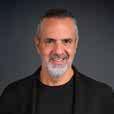




COULD YOU WALK US THROUGH HOW HYPERMEDIA’S TECHNOLOGY WORKS FROM A CAMPAIGN PERSPECTIVE?
Our technology operates on a four-step process: capture, segment, activate, and measure. We start by capturing real-time data through advanced sensors embedded in our digital Smart Signages. This data is segmented to identify key audience characteristics such as demographics, location, and time of day. Once this information is processed, we activate personalised ad campaigns tailored to the specific audience in that moment. Finally, we measure the campaign’s effectiveness, providing advertisers with in-depth analytics on engagement, reach, and conversion.
What sets our approach apart is our ability to segment data quickly and activate highly targeted ads in real-time, ensuring maximum relevance and engagement. Our goal is to create a connected experience for the consumer. Whether they’re seeing an ad on the metro or in retail, we ensure continuity in messaging.
HOW DOES HYPERMEDIA’S AD PLATFORM ENHANCE CAMPAIGN EXECUTION AND OPERATIONAL EFFICIENCY?
Our AD platform ensures precise campaign targeting for specific audience segments, while also supporting key commercial currencies: CPM, CPV, CPCV, etc. It is a platform that manages and distributes digital ads, providing historical data, live data, and forecasting future

inventory availability. This allows advertisers to plan effectively, optimise their ad spend, and streamline operations, resulting in bettertargeted campaigns and improved ROI.
At Hypermedia, we’re not just keeping pace with the digital evolution—we’re defining it. As “Creators of Impact”, we are transforming the media landscape across the region, delivering measurable, intelligent solutions that empower brands, engage consumers, and shape the future of smart advertising.

From trolley branding to real-time AI advertising, W Group’s Habib Wehbi discusses Hypermedia’s decades-long journey.
As we celebrate Hypermedia’s 25th Anniversary, it’s the perfect moment to reflect on the journey that brought us here and the exciting path ahead. What started as an idea to brand trolleys in supermarkets has grown into the region’s leading force in digital-out-of-home (DOOH) media and advertising technology. Today, W Group Holding embraces a future-focused investment strategy, integrating smart technology and programmatic solutions to lead the next wave of digital transformation in the Middle East.
In 1999, Hypermedia entered the market with a unique concept – advertising on trolleys, beginning with Carrefour. Within two years, the initiative expanded to 20,000 branded trolleys, providing us with an early glimpse of how innovation can create new opportunities. Building on this momentum, we proposed a novel idea at the time: utilising shelf space above products to display advertisements. This bold step cemented Hypermedia’s position as the first out-of-home media company offering in-store solutions across the UAE, Lower Gulf and KSA. By 2006, we expanded from in-store branding to outdoor media, managing major locations such as Dubai Media City and branding lampposts across Dubai. In 2007, we secured a foothold in mall advertising by winning the prestigious Dubai Mall concession. Recognising the shift towards digital, we reinvested profits to monopolise mall advertising in the UAE, a strategy that has paid dividends ever since.
Hypermedia transformed into a media powerhouse under W Group Holding, which consolidated our expertise in DOOH and expanded our digital reach through the acquisition of DXTA Technology. Our vision culminated in 2020, when we secured exclusive media rights for Dubai Metro for ten years through a strategic partnership with Roads & Transport Authority (RTA) — a pivotal moment that solidified our leadership across key retail and transit networks. The pandemic presented unprecedented challenges, but we embraced them as opportunities. We digitised our projects, forged strategic partnerships, and aligned our operations with the identity we champion today: Experience Media Technology. These efforts reinforced our resilience and set the stage for future growth.
In 2022, we launched our bold 555 Strategy: 5 Verticals, 5 Years, AED 500mn in revenue. With disciplined execution,
we are on track to reach this ambitious goal ahead of schedule by the end of 2024. This milestone is a testament to our shared journey and the commitment of our incredible team across W Group Holding and its subsidiaries. Each achievement reflects the talent, passion, and dedication our people bring to the table. As I’ve always believed, my greatest asset has been my team – when they succeed, we all succeed.
Today, Hypermedia continues to break new ground as we drive the region’s smart digital transformation. We are actively focused on three key pillars that establish our position at the forefront of DOOH in the region:
1. Prime locations:
Our diverse portfolio includes key media rights across several impactful verticals. In public transportation, we oversee the advertising opportunities within Dubai Metro’s 53 stations and its naming rights, capturing the attention of millions of daily commuters. The outdoor segment features prime media locations providing brands with exceptional visibility in high-traffic
“As we look toward the future, our goal is not just to collect audience data but to activate it meaningfully.”
areas. Our destinations vertical includes iconic sites like Palm Jumeirah, Expo City, Nakheel communities, Hudayriyat island and ENOC’s petrol stations. Lastly, our Retail division spans top malls and hypermarkets, offering in-mall and in-store advertising solutions that connect brands with shoppers at critical decision-making moments. Together, these premium locations generate more than 6 billion impressions each month, creating unmatched opportunities for brand engagement across the UAE.
2. Digital transformation:
Our investments in cutting-edge digital technology have enabled us to build the largest DOOH network in the UAE. With real-time audience data and automated systems, we offer brands unmatched
control over their campaigns – creating a seamless connection between technology and marketing impact.
3. Innovative solutions:
At the core of our innovation strategy is the HMX DOOH platform. This AI-powered technology – launched recently – transforms our DOOH network from passive data collectors into dynamic drivers of customer engagement. The platform offers real-time targeting, audience analytics, and programmatic capabilities that allow advertisers to adjust campaigns instantly based on audience behaviour. HMX empowers brands to plan, book and execute campaigns seamlessly across our expansive network. By integrating AI-powered sensors and GDPR-compliant data fusion, HMX allows for real-time bidding, audience segmentation, and precise ad targeting – maximising ROI and minimising ad waste. This transformation shifts us from merely measuring audience metrics to actively engaging with consumers across their entire journey, from transit hubs like Dubai Metro to malls and hypermarkets.
As we look toward the future, our goal is not just to collect audience data but to activate it meaningfully. Through dynamic ad delivery, we can connect brands with consumers at critical touchpoints –transforming everyday journeys into engaging experiences. Whether customers are commuting via metro or retail, our technology ensures brands can deliver tailored messages precisely when and where they matter most.
Our offensive strategy focuses on more than just measuring success; it drives action and engagement by leveraging audience insights in real-time. In addition to refining our technology, W Group Holding is preparing to welcome two new entities into the fold by the end of the year – further diversifying our portfolio.
At W Group Holding, we believe in the power of transformation through technology. With Hypermedia celebrating 25 years of impact and W Group Holding on the verge of even greater growth, the future has never looked brighter. By harnessing smart technology, prime locations, and innovative solutions, we are not just part of the digital revolution in the region – we are shaping it.
By Habib Wehbi, Chairman and Group CEO at W Group Holding (Hypermedia & DXTA Technology)

Maximize exposure with our largest fleet of city and airport taxis, exclusively.

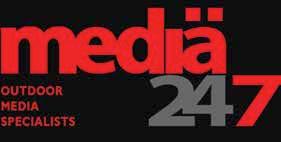

Founded: 2005
Holding Group: Multiply Group Office: Dubai, U.A.E
Number of Staff: 51
www.media247.ae

servicing@media247.ae
+971 4 283 3471







Media 24-7 stands tall in the UAE’s outdoor advertising market, with over 60 prime locations across Sheikh Zayed Road, City Walk, Al Khail Road, Al Garhoud, and Ittihad Road. We provide ideal advertising solutions, in terms of strategic billboards to Dubai RTA city and airport taxis.





Our premium client portfolio consists of a diverse range of businesses, from local enterprises to multinational corporations across various sectors.
Media 24-7 continues to solidify its position as a leader in the outdoor media landscape by ensuring brands stand out where it matters most.


















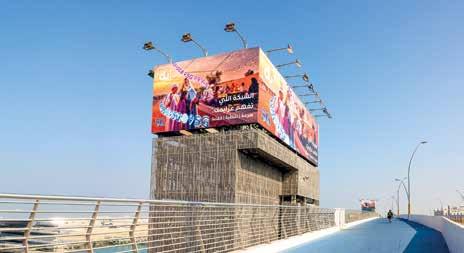


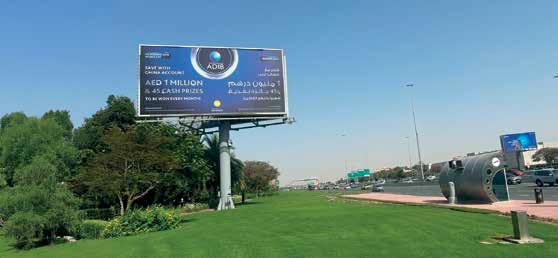













Founded: October 2020
Headquarters: Dubai
Head of company: Paul Abouchacra Number of staff: 9 www.mediamixadv.com +971 50 687 6262 / +971 50 497 7653 info@mediamixadv.com
Media Mix Advertising is excited to celebrate its fourth anniversary on October 27. For the past few years, our partnership with Starzmedia has been instrumental in enhancing our growth. As we continue to diversify our inventory, we remain dedicated to exploring innovative advertising opportunities, creating lasting impact in the OOH scene. Small actions can lead to much bigger successes.
PROPERTIES:
2 Billboards – Canal Bridge - Jumeirah Beach Road
4 Unipoles – Dubai Festival City – Rebat Street & Nad Al Hamar Street
21 Unipoles – Sheikh Zayed Road – Jebel Ali to Abu Dhabi
1 Side Wall – DIFC – Al Saqr Business Tower
1 Digital Unipole – Al Maktoum Bridge – Tariq Bin Ziyad Street
2 Digital Screens – Umm Suqeim – 700 Padel & Fitness Hub
1 Hoarding – Sheikh Mohammed Bin Zayed Road – DSO Entrance
1 Beacon – Jumeirah Beach Residence – Opposite Ain Dubai
Managing Director
WHAT MAKES OOH REMAIN ONE OF THE MOST EFFECTIVE TRADITIONAL FORMS OF ADVERTISING?
OOH remains one of the most effective traditional advertising forms due to its unique ability to engage audiences in the real world. Unlike digital ads, which can be easily skipped, OOH captures attention in high-traffic locations where consumers are physically present. The scale and boldness of OOH visuals create lasting impressions, making brands more memorable. This fosters deeper emotional connections, leading to higher recall and engagement. Additionally, OOH complements digital strategies by driving online traffic and reinforcing messages across multiple touchpoints. Its ability to target diverse demographics ensures brands connect effectively with their desired audiences.
IS OOH UNDERGOING A CREATIVE RENAISSANCE AGAINST STEREOTYPES AND VISUAL CLUTTER? IF NOT, DOES IT NEED ONE?
In the evolving landscape of OOH advertising, the need for standout creatives has become
essential, especially as the industry faces new regulations aimed at minimising visual clutter. These restrictions encourage brands to prioritise impactful, high-quality content that captures attention amidst the noise.
As clutter is reduced through these measures, the emphasis on thoughtful design and strategic placements grows. This not only enhances audience engagement but also fosters a more aesthetically pleasing environment. Ultimately, the creative renaissance in OOH, driven by the necessity to adapt to these restrictions, is transforming the medium into a more sophisticated and engaging platform.
In 2024, brands and clients are placing a strong emphasis on creativity and innovation in their advertising strategies. There is a clear demand for standout designs that break the mould, capturing attention with bold visuals and unique concepts that resonate deeply with audiences. Advertisers are increasingly looking to push boundaries and explore fresh narratives that set them apart from competitors. Additionally, strategic location choices are crucial; brands want to leverage high-traffic areas and unexpected spaces to maximise impact. This focus on placement ensures that campaigns reach the right audiences at the right moments.






Interactive and immersive elements, such as augmented reality and experiential marketing, are also gaining traction, allowing consumers to engage with brands in meaningful ways. Overall, the demand in 2024 is for imaginative approaches that enhance visibility while creating memorable experiences, ultimately fostering deeper connections between brands and consumers in an increasingly crowded advertising landscape.


















Our journey at Media World has been nothing short of remarkable. An impressive growth trajectory of nearly 90 Per cent year-on-year stands as a testament to our success, making us one of the fastest-growing entities in the industry. This achievement is largely attributed to our visionary Chairman, Mr. Amer Ahrari, whose leadership has been an invaluable asset. Under his guidance, Media World has expanded from 15 locations to over 50 in less than four years.
Above all, none of this would have been possible without the unwavering, ethical, and kind leadership of our Chairman, Mr. Ahrari. His dedication has not only driven our success but also established Media World as one of the best places to work. The culture he has fostered is one of innovation, ethics, and continuous improvement, making it a privilege to be a part of this organisation.







Sandra George Chief Executive Officer

DOOH innovation has excited you the most over the past 12 months and why?
In the Digital Out-of-Home (DOOH) space, we've made significant strides. This year, we launched our first digital screen in Dubai, a landmark achievement as it is the largest high-resolution screen in all of MENA. This milestone is merely the beginning, as we plan to rapidly expand our digital inventory with new assets that will establish themselves as landmarks in their own right.
Our commitment to excellence is further demonstrated through our investment in industry-approved measurement tools, ensuring that our advertisers receive accurate and measurable results. This initiative not only enhances our service offerings but also builds trust and reliability within the industry.
As we continue to grow and innovate, the people of UAE can expect even more exciting developments from Media World. Our vision is not just to lead but to set new benchmarks in the industry. Our upcoming projects and initiatives are poised to redefine the digital out-of-home advertising landscape, bringing unparalleled opportunities and value to our clients and stakeholders.
We remain committed to delivering the highest quality services and pioneering innovations that will keep Media World at the forefront of the industry. Stay tuned for the transformations and breakthroughs that we have in store.
In your opinion, what makes OOH remain one of the most effective traditional forms of advertising?
OOH advertising remains highly effective due to its ability to reach large audiences in high-traffic locations, creating impactful impressions that can't be easily ignored. Its visibility and permanence help build brand recognition over time. Additionally, OOH is less intrusive compared to digital ads, allowing consumers to engage with it on their own terms. The integration of digital technology also enables dynamic content updates, real-time engagement, and data-driven targeting, enhancing its relevance and effectiveness. Overall, OOH effectively captures attention and fosters brand recall in a way that complements other advertising channels.































Founded: 1999 Ownership: Motivate Media Group and Val Morgan Network HQ: Dubai, UAE Number of staff: 33 www.motivatevalmorgan.com valmorgan@motivate.ae +971 4 390 3550
Motivate Val Morgan Cinema Advertising, a joint venture company by Motivate Media Group and Val Morgan Cinema Network, represents cinema advertising sales across leading cinema exhibitors in United Arab Emirates, Saudi Arabia, Oman, Qatar, Bahrain, Kuwait, Lebanon and Egypt.
Delivering comprehensive on- and off-screen advertising and activations, Motivate Val Morgan provides advertisers with a unique avenue to reach audiences at scale on an unparalleled and memorable screen format designed to capture a ention.
Motivate Val Morgan’s expansive coverage extends to 1100+ screens across 100+ locations encompassing both metropolitan and regional areas across prominent cinema entities including AMC Cinemas, Cinemacity, Cinépolis Cinemas, Muvi Cinemas, Reel Cinemas, Royal Cinemas and VOX Cinemas.
KEY INDUSTRY ADVERTISERS:
Telecommunications, Gov. Departments, Automobiles & Services, Banking, Finance, Insurance, Healthcare, Medical, Hospitals, Cosmetics, Perfumes, Hygiene, Watches & Jewellery, F&B, Fashion & Clothing, Restaurants, Cafés
AWARDS:
Most awarded cinema advertising partner in the world – Dubai Lynx, Effie, The One Show, Cristal, Proxama and a Cannes Lion.





The Outdoor Media Office
Founded : 2017
Ownership/holding group: Ministry of Energy & Infrastructure Regional headquarters: Dubai
Number of staff: 13 www.moei.gov.ae outdoor@moei.gov.ae 04 5274 993
In line with the plan to merge the Ministry of Infrastructure Development and Energy with the Sheikh Zayed Housing Program and the Federal Land and Maritime Transport Authority into a new Ministry, the Ministry of Energy and Infrastructure has implemented a strategic plan. This plan aims to organise, develop and enhance the UAE’s competitiveness in the sectors of energy, mining, water resources, land and sea transportation, roads, utilities, housing, building, construction, and investment sustainability. It also focuses on optimising partnerships, technology, and advanced sciences, while adopting global innovative solutions to improve the quality of life.
This plan serves as a roadmap for a new phase of comprehensive development, aligned with the government’s future vision. It contributes to the UAE’s long-term goals for the next fifty years, leading up to UAE Centennial 2071, and driving the national economy to achieve global leadership. Additionally, it ensures the provision of distinguished services for customers, designed in accordance with standards of quality, efficiency, and transparency.
KEY PARTNERS: Sharjah Municipality, Ajman Municipality and Planning Department, Umm Al Quwain Municipality, RAK Public Services Department, Fujairah Municipality
SERVICES OFFERED: Offer prime locations on the federal road for investment to out of home advertising companies for long leasing periods

Founded: 2021
Holding group: Next What Group of Companies
Head of company: Tanvir Shah
Regional headquarters: Dubai, UAE
Number of staff: 17 nextwhat.ae
+971 4 451 3706
contact@nextwhat.ae
At NextWhat, we work with brands, advertisers, media agencies, government, and charity organisations to engage people with Out-of-Home experiences that educate, engage, inform, and inspire. Our premium large format sites and stateof-the-art billboards make brands unmissable. Our products offer heightened visibility and effective impressions.
PROPERTIES:
32 properties including hoardings, wall banners, unipoles and glass facades across Dubai Abu Dhabi and Sharjah.
TANVIR SHAH
Founder & Managing Director
IN YOUR OPINION, WHAT MAKES OOH REMAIN ONE OF THE MOST EFFECTIVE TRADITIONAL FORMS OF ADVERTISING?
Dubai is home to over 200 nationalities, each with its own distinct cultural and linguistic preferences. When people are indoors, they tend to engage with media tailored to their language—whether through radio, television, or print—making it challenging for media planners to reach everyone through a single medium. However, when people step outdoors, OOH advertising overcomes these barriers. Billboards, for example, are seen by everyone, regardless of language or ethnicity, making them a powerful tool for reaching a diverse audience. In a dynamic city like Dubai, where the population is constantly on the move, OOH offers advertisers the ability to connect with a broad spectrum of individuals. This medium remains highly relevant and impactful in the Dubai market, where its reach is unmatched by other forms of traditional media.
WHAT HAVE BEEN THE TOP DEMANDS FROM BRANDS AND CLIENTS IN 2024?
In 2024, brands have become more discerning in their advertising choices, with many seeking to stand out by opting for exclusive, standalone advertising spaces. They prefer to avoid being part of the advertising clutter often seen in






shared spaces. We have seen a strong demand for sites that allow brands to have complete ownership, and fortunately, most of our assets are standalone, which fits perfectly with these client needs. Additionally, our clients tend to avoid digital billboards featuring multiple advertisers, as this format dilutes their brand message. As one of our clients remarked, “I do not wish to be part of a raffle draw,” reflecting concerns that their ad may get lost among others. Digital formats are often effective indoors, but when it comes to outdoor advertising, exclusivity is essential to ensure a brand’s visibility and impact.

Since our launch in 2021, Next What Advertising has experienced rapid and consistent growth, doubling year after year. We have several new assets lined up, and these upcoming acquisitions will help accelerate our expansion even further. Our strategy is focused on becoming one of the top three OOH advertising companies in the region within the next three years. We are confident that with our current momentum, strong client relationships, and strategic asset acquisition plans, this goal is within reach. Our aim is to continue delivering high-quality, innovative advertising solutions that meet the evolving needs of our clients.
WHAT IS YOUR TAKE ON THE STATE OF THE ATTENTION ECONOMY, AND WHAT DOES OOH HAVE TO OFFER IN THIS LANDSCAPE?
In today’s fast-paced world, where consumers are constantly exposed to information online, OOH advertising stands out as a powerful medium for capturing attention in public spaces. Unlike online ads, which can be skipped, blocked, or ignored, billboards are unavoidable in physical environments. OOH offers brands the opportunity to deliver dynamic, eye-catching content that grabs attention and creates strong brand recall. This is particularly important in the current attention economy, where cutting through the noise is a challenge. OOH can make a lasting impact, making it a vital tool for brands looking to stand out in a highly competitive landscape.
Founded: 2012
Managing director and owner: Souriana A. Khalek
Headquartered: Dubai info@royaloutdooradv.com
PROPERTIES: Lampposts in Ras Al Khaimah, Um Al Quwain, Fujairah and Sharjah; hoardings in Fujairah and Ras Al Khaimah; bridge banner in Sharjah; hoarding on Sheikh Mohammed Bin Zayed Road.
Founded: 2000
Headquartered: Dubai Number of staff: 18 info@trinet.ae
Founded: 2018
Holding group: Danube Group
Headquartered: Dubai
Number of staff: 10 jennifer@starzmediainc.com
Starz Media was founded in 2018 by the Danube Group. Starz Media’s core mission involves offering expert, visible and targeted brand marketing exposure by effortlessly integrating each brand into the city’s landscape through strategically located OOH advertising mediums in Dubai. Starz Media and Media Mix Advertising formed a strategic and mutually beneficial alliance aiming at constantly growing their inventory as well as looking out for valuable opportunities while maintaining a clear and focused business approach and vision.




Founded: 1986
Headquartered: Beirut + 10 local offices
Number of staff: 300 www.pikasso.com
Hughe e.nassar@pikasso.com +971 50 115 7280
Founded: 2000 Head office: Dubai (MENA); London (Global) Number of staff: 33 mena@talonooh.com
Talon is a pioneering global independent Out of Home (OOH) media agency delivering strategic, data-driven creative and OOH advertising campaigns.
Dubai | Italy | Lebanon | Jordan | Iraq | Algeria | Morocco | Tunisia | Senegal | Mali | Ivory Coast | Armenia
Pikasso is the number one OOH company across the Levant and leader in North Africa and West Africa with a presence in Italy and Armenia
The Group operates in 11 countries and in all segments of OOH & DOOH including billboards advertising, street furniture, retail & malls, transport advertising.
Our focus is on ensuring audience engagement in prime locations and delivering creative opportunities to our advertisers through the combination of technology and innovation.
PROPERTIES
Large format digital screens: Italy, Lebanon, Jordan, Iraq, Morocco, Algeria & Ivory Coast
Classic large formats: 11 capitals, 80 main cities and towns in 11 countries
Billboard advertising: 434 cities and towns in 10 countries
Malls concessions: 75 concessions, 7 countries
Supermarket networks: Lebanon, Iraq, Jordan, Morocco, Algeria, Senegal, Mali and Armenia






Founded: 2013
Holding group: Yazle Global
Headquartered: Dubai
Number of staff: 35 jamie@yazle.com
PROPERTIES: 20 instore digital screens across Choithrams and Aswaaq supermarkets, Invenda UAE 200+ digital screens, Invenda KSA 250+ digital screens
Founded: 2020 Regional headquarters: Dubai
Leading advertising firm Flick is dedicated to strategy planning for delivering quantifiable outcomes. Positioned at well-known sites, including private jet airports, Flick is well-equipped to change the advertising scene for our customers.Through a carefully chosen mix of indoor and outdoor advertising solutions that appeal to the most affluent consumers in highly prestigious sites, Flick redefines marketing in a modern way. Flick provides brands with unmatched exposure and visual interaction.

Founded: 2004
HQ: London with offices in Dubai, Paris and Johannesburg
Number of staff: 10 privatejet.media
+971 52 666 4495 banan.abusi a@privatejet.media
Private Jet Media presents exclusive advertising solutions in the world’s largest private jet terminals network, where brands can reach out to the VIP Travelers and high-net worth individuals with no wastage.
Our network encompasses the media and brand activations in more than 100 private jet terminals across the GCC, Europe, Asia and Africa.
PROPERTIES:
GCC: 35 digital screens network in 9 private jet terminals located in Dubai, Abu Dhabi, Sharjah and Jeddah.
Globally: More than 200 Digital screens network in Europe, Africa, Asia covering main hometown of HNWI such as London, Paris, Geneva, Zurich, Milan, Munich, Singapore and Johannesburg.


Founded: 2016
Holding group: Exceed Holding For Sports L.L.C.
Regional HQ: Abu Dhabi
Number of staff: 75
www.pyxis.ae
info@pyxis.ae
+971 50 841 8173
Pyxis Events LLC, based in Abu Dhabi, is a leading 360-degree events and brand agency. Specialising in tailored solutions, Pyxis transforms client objectives into memorable events from concept to completion. A subsidiary of Palms Sports PJSC, their expert team creates impactful connections and transformative experiences that leave lasting impressions.
PROPERTIES:
Emarat: 87 LED Screens + 177 LCD Screens Pillars )( Dubai-Sharjah& Northern Emirates) ADNOC: 100 LED Screens ( UAE Network Except Sharjah) Taxis: Fleet of 3000 Units Within Abu Dhabi and Al Ain













Attractions

Activities
Dining
Health
Education
Entertainment
Real
Hotels
The











Founded: 2004
Holding group: Ajman Holding Regional headquarters: Ajman, UAE
Number of staff: 25 www.rayaat.ae +971 6 711 6728; +971 6 740 7772 info@rayaat.ae
Rayaat is a full-service agency renowned in the UAE’s marketing and advertising landscape. We specialise in outdoor advertising, event management, print, and production services. With more than 20 years of excellence along with our team of creative designers, print production experts, and fabricators, we consistently exceed client expectations through one-stop-shop solutions – from eye-catching signage and billboards to custom digital printing and metal fabrication.
At Rayaat, we continue to drive businesses to new heights with unwavering commitment to quality, timeliness, and cost-effectiveness.
PROPERTIES:
Ajman: 600 lampposts, 6 hoardings, 1 unipole and 1 digital screen.
General Manager, Rayaat

WHAT MAKES OOH REMAIN ONE OF THE MOST EFFECTIVE TRADITIONAL FORMS OF ADVERTISING?
One of the reasons why out-of-home advertising remains effective is its ability to reach a wide audience in various locations. OOH ads are often placed in high-traffic areas where they can capture the attention of a diverse range of people, including those who may not be exposed to other
forms of advertising. Additionally, OOH ads have a physical presence that can create a memorable impact on viewers, making them more likely to remember the brand or message being promoted. Overall, the widespread reach and tangible nature of OOH advertising contribute to its ongoing effectiveness in the advertising landscape. At Rayaat, we continue to expand our outdoor assets to leverage these benefits.
ARE AUDIENCE ANALYTICS AND PROGRAMMATIC DOOH CHANGING THE ADVERTISING LANDSCAPE?
Yes, audience analytics and programmatic DOOH are certainly changing the advertising landscape. By providing advertisers with valuable insights into consumer behaviour and preferences, audience analytics help in targeting the right audience with the right message at the right time. Programmatic DOOH, on the other hand, allows for more targeted and personalised advertising campaigns that can be delivered in real-time based on various factors such as location, time of day, and audience demographics. Together, these technologies are revolutionising the way advertisers connect with consumers and are leading to more effective and efficient advertising strategies.
IS SUSTAINABILITY STILL A CRITICAL ISSUE WITHIN THE OOH INDUSTRY AND HOW SHOULD IT BE ADDRESSED?
Sustainability is still a critical issue within the out-of-home (OOH) advertising industry. To
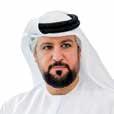





address this issue, OOH companies should focus on reducing their carbon footprint through initiatives such as using eco-friendly materials for billboards, incorporating energy-efficient lighting, and implementing recycling programmes for old advertisements. Additionally, companies can work towards promoting sustainable practices within their supply chain and operations, as well as partnering with organisations that share their commitment to environmental responsibility. Embracing sustainable practices not only aligns with corporate social responsibility goals but also helps to create a positive brand image and appeal to environmentally conscious consumers.
Out-of-home advertising (OOH) can effectively perform at every stage of the marketing funnel by utilising strategic placement, creative messaging, and data-driven targeting. At the awareness stage, OOH can reach a broad audience and generate brand recognition through eye-catching visuals and memorable messaging. In the consideration stage, OOH can provide targeted messaging based on location and demographics to drive interest and engagement. Lastly, in the conversion stage, OOH can include clear calls-to-action to encourage immediate action from potential customers. By integrating OOH into a comprehensive multichannel marketing strategy, businesses can effectively engage with consumers at every stage of the funnel and drive results.
Some days, I look back at old photos of when I first arrived in Dubai in 2004, and I often see in the background a barely built JBR or a dormant plot of land where Downtown Dubai now sits with its plethora of high-rise towers.
The before-and-after pictures of Dubai and nearby cities have become staples in the growth narrative of the region, whether they are aerial shots of Dubai Marina, the day the Emirates Golf Club first opened, or comparisons of what Dubai Airport started out as versus what it is today.
One thing that always strikes me, though, bearing in mind this is only going back 20 years, is how densely populated the OOH landscape has now become. From a couple of unipoles and lampposts on our iconic Sheikh Zayed Road, to what we see today with building wraps, megacoms, special builds and back-to-back scaffoldings, which seemingly stretch from one interchange to another.
With a population growth from fewer than 1.5 million in 2005 to more than 3.5 million today, the city’s upward trajectory has been mirrored by the number of OOH sites needed to communicate the increased volume of brand messages all vying for consumer attention and catering to the increase in demand created as a result.
The MediaVantage’s Manoj Khimji explains the extra edge that Middle East brands need to bring their visions to life in front of potential consumers.
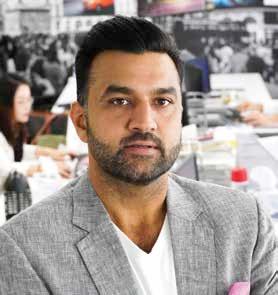
The same, however, is not true of other major global cities. Whilst populations have also grown (albeit at a lower rate) in global hubs such as New York, London, Paris, Shanghai and Tokyo, the OOH advertising opportunities have evolved in a different direction.
Firstly, it was through the redevelopment and physical appearance of their iconic sites, which has now moved into the creation of experiential areas enabling advertisers to activate and bring their brands to life beyond billboards.
Even as new sites develop in these key international markets, brand display space remains, but the real advantage is the ability to curate experiences for passersby and offer a level of interaction that goes a step further.
When the Sphere launched in Las Vegas in late 2023, images of the stunning creatives being hosted on there (and emojis, of course) did the rounds across social media and the advertising industry. As groundbreaking as it is, the project is in fact focused on its ability to host events, concerts, and brand-led gatherings as much as its enormous dome-like display space.
Similarly, when the Outernet opened in London, the display screens across its giant Now Vista, Now Building, Now Trending and Now Arcade sites represented the largest combined digital OOH screen site in the UK, but it was the capability created through the investment in their technology that was the real story.
Brands such as Diriyah Gate, DCT Abu Dhabi and AlUla ran successful campaigns, using a range of advancements such as live feeds, gestural interactivity, real-time motion capture, audio-reactive graphics and even interactive floor deployment to bring some of these Middle East entities to life.
Physical activations like this aren’t necessarily new, but they are the key drivers of OOH investment across major international markets currently. They elevate sites beyond competitors, landlords reap the monetisation rewards and, most importantly, brands love them.
Middle East brands in particular need that extra edge to bring their visions to life in front of potential consumers. Off-plan projects, regions that don’t yet exist, and future hosts of global sporting events can be blasted out across billboards all over the world.
Until an audience in London or New York or Shanghai sees, feels and hears the brand, the scepticism won’t go away. Having a strategic physical presence at Harrods in Knightsbridge, the Outernet London, or the newly launched Below-The-Lights at Piccadilly bridges brandconsumer gaps like nothing else can.
The Outernet, for example boasts more than 220,000 daily visitors and became one of the UK’s most visited tourist sites in 2023 – such was the lure of the content (and brand communications) at the district.
With the recent announcement of the Sphere coming to Abu Dhabi, it looks like we could see more of this approach in the region too. Certainly, in terms of global campaigns, the proof is in the experiential pudding.
By Manoj Khimji, Managing Director, The MediaVantage
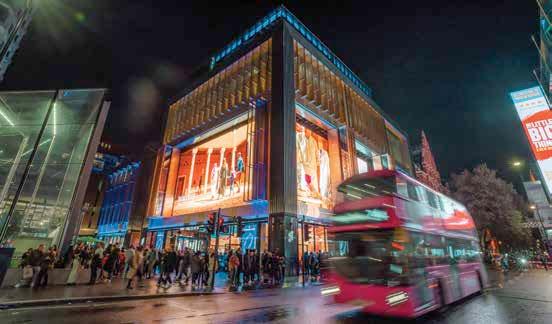
Holding group: Multiply Group
Headquarters: Abu Dhabi
www.violaoutdoor.ae
info@voutdoor.ae
+971 04 446 7540
Viola Outdoor has been a driving force in reshaping the UAE’s advertising landscape through cutting-edge digital innovations, strategic redevelopments, and critical partnerships. As a key player in the out-of-home (OOH) sector, Viola Outdoor is renowned for its portfolio of impactful, forward-thinking advertising solutions.
Viola Outdoor provides comprehensive static and digital out-of-home (DOOH) solutions that ensure maximum exposure and strategic reach across the Emirates.
The Digital Link: Abu Dhabi – 16 digital bridges; The Link: Abu Dhabi – 40 static bridges banners, Dubai – 29 static bridges banners.
The Skyline at Al Hosn: 1 digital screen at Hamdan St. Opposite Qasr Al Hosn; The Marina wall at Al Bateen: 1 digital screen; The Pointe at Al Reem Island: 2 digital screens
FireFly taxi screens: 100 Taxis
Bus wrap for public buses in Abu Dhabi
Lampposts in Abu Dhabi: 2204 Faces Digital Totems, Abu Dhabi: 17 totems
Chief Revenue Officer
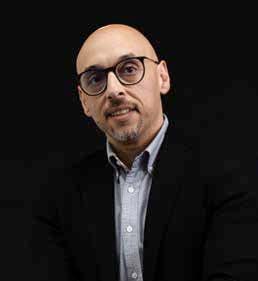
WHAT MAKES OOH REMAIN ONE OF THE MOST EFFECTIVE FORMS OF TRADITIONAL ADVERTISING?
OOH advertising thrives by effectively reaching broad urban audiences and boosting brand awareness and market share. Pairing with digital platforms amplifies exposure and drives higher ROI. Within the Multiply Group’s media vertical, our strength lies in offering diverse solutions
that meet clients’ needs. Our media reaches a broader population and offers a grand scale to provide a multi-city solution, delivering the highest value through tailored media plans. Our unique locations and network of highimpact products across Dubai and Abu Dhabi, complemented by high-quality creative and data-driven strategies, make OOH irreplaceable for brands seeking to connect deeply with their audience. This combination of teams and resources allows us to respond to client needs more effectively, offering large-scale campaigns that deliver significant impact.
IS OOH UNDERGOING A CREATIVE RENAISSANCE AGAINST STEREOTYPES AND VISUAL CLUTTER?
Absolutely, and within the Multiply Group’s media vertical, our teams are driving that creative renaissance. We’ve expanded our inventory and innovative capabilities by combining expertise from different sectors, ensuring that brands break through visual clutter with meaningful, high-quality campaigns. We scale these creative approaches to reach a broader audience within the main arteries and high-density communities. This dual approach enables us to deliver more custom, immersive brand experiences, whether focused on premium markets or mass reach.
The creative renaissance in OOH is about using technology, design, and storytelling to deliver campaigns that are not just seen but remembered. We are a unified group at the forefront of that movement.





HOW DOES OOH PERFORM AT EVERY STAGE OF THE MARKETING FUNNEL?
OOH has proven effective across all stages of the marketing funnel. Within the Multiply Group’s media vertical, we leverage our combined inventory—our high-impact platforms offer unparalleled visibility for brand awareness. Iconic placements provide prime spots for brands looking to establish their identity, while a broader network helps reach an extensive, diverse audience. Further down the funnel, dynamic content and data integration allow us to engage specific audiences at the consideration stage, driving deeper interaction. This multi-funnel approach positions OOH as a critical component in any marketing strategy, ensuring that brands can engage consumers from awareness to conversion.
WHAT ARE THE TOP DEMANDS FROM BRANDS AND CLIENTS IN 2024?
In 2024, brands will increasingly demand flexibility, personalisation, and digital innovation from their OOH campaigns. They want seamless integration with digital platforms, programmatic buying, and the real-time adjustment of content. We can deliver precisely that with the combined strength of Multiply Group’s media vertical. Our innovative and focused solutions complement the ability to scale campaigns and reach a broader population. This ensures that we meet the needs of every client, whether they require a premium campaign or a wide-market solution. By merging our capabilities, we offer more tailored, multi-city solutions that provide the highest value to the market and become the most resilient and comprehensive offering for any client.
In today’s dynamic marketplace, the ability to innovate and adapt is crucial for success. While the focus in the GCC and MENA regions has traditionally been on regional reach, the demand for global expansion is rapidly increasing.
As countries unveil ambitious visions for the future – such as Saudi Arabia’s Vision 2030 and Dubai’s Vision 2030 – there is an obvious excitement surrounding new possibilities. These initiatives aim to transform economies and elevate the region’s status on the global stage, creating fertile ground for attracting not just investors and businesses, but also diverse talents and innovative partnerships that can drive growth and creativity.
However, crafting a global deployment strategy presents significant challenges, particularly in OOH advertising. Detailed market research is essential to identify target markets and understand the cultural nuances that influence consumer behaviour.
Each market has unique characteristics shaping purchasing decisions, necessitating tailored advertising approaches that align with local tastes while maintaining a consistent global brand identity.
Incorporating data from a thorough media landscape analysis allows brands to fine-tune their approach based on regional dynamics. Each campaign objective must be applied to each market; what works for one audience may be less effective for another.
For instance, a brand-building campaign targeting high net worth individuals may

make use of super premium large-format digital screens in major capitals across the globe, whereas a campaign with an objective to drive purchase intent may utilise a layered approach focused on small format digital locations planned in malls, reaching commuters in stations, and adding a layer of programmatic OOH to further drive action.
Analysing audience behaviour – such as the time they spend commuting, frequent touch points throughout their day, and the environments they engage with – helps identify the most meaningful OOH formats. This understanding informs the balance
‘‘AS THE GCC AND MENA REGIONS EMBRACE GLOBAL AMBITIONS, LOCAL INSIGHTS REMAIN PARAMOUNT.”
between static versus digital locations, or the integration of experiential elements such as augmented reality (AR) to boost engagement and recall.
Creativity is fundamental in OOH, pivotal for capturing attention and driving engagement. Emerging technologies such as experiential, dynamic, and anamorphic experiences elevate the landscape to new heights. According to a Nielsen analysis of more than 500 campaigns, creative elements contribute 47 per cent to purchase and sales, followed by reach (22 per cent) and brand (15 per cent). Dynamic DOOH is another layer that improves effectiveness. Recent research by WARC found that contextual DOOH campaigns increase ad recall and sales response by 32 per cent,
Today’s technology and tools enable us to understand and engage with local audiences through a customised approach. Leveraging technology and the right audience analysis tools, brands can swiftly gain insights into
diverse global audiences. This enables them to deploy OOH campaigns targeted to each local audience.
An effective global OOH strategy requires market expertise, cultural understanding and tailored approaches, with local knowledge and applied creativity utilised to enhance engagement and achieve business objectives. Taking these factors into consideration when customising OOH campaigns will amplify visibility and drive meaningful engagement, delivering messages that resonate with local audiences.
Depth of knowledge is required to navigate diverse markets effectively. Local expertise is invaluable when it comes to providing insights into market dynamics that enhance the likelihood of success through culturally sensitive strategies.
Talon, the independent global out of home agency, has expertise in managing cross-market deployment and aligning strategies across regions. We ensure global consistency while efficiently delivering tailored market approaches.
As we look to the future, the evolution of OOH advertising will be driven not only by technological advancements but also by a commitment to effectiveness. Demand for localised, immersive advertising experiences is continuing to grow, reflecting consumer expectations for authenticity.
In an increasingly interconnected world, OOH offers brands a unique opportunity to connect with global audiences in the real world. As the GCC and MENA regions embrace global ambitions, local insights remain paramount. By harnessing the power of data, creativity and cultural understanding, brands can navigate the complexities of global markets while resonating authentically with local consumers.
Brands that embrace this dual focus – on global strategy and local execution – can not only stand out in crowded spaces but will also cultivate lasting connections with consumers. The journey of bridging borders through innovative OOH campaigns is just beginning, and the potential for growth and impact is immense. As we move forward, let us champion the power of localisation in the pursuit of global success.
By Chadi Farhat, Managing Director, Talon – MENA
Talon’s Chadi Farhat shares his thoughts on bridging borders in out-of-home advertising.

talonooh.com/mena

























